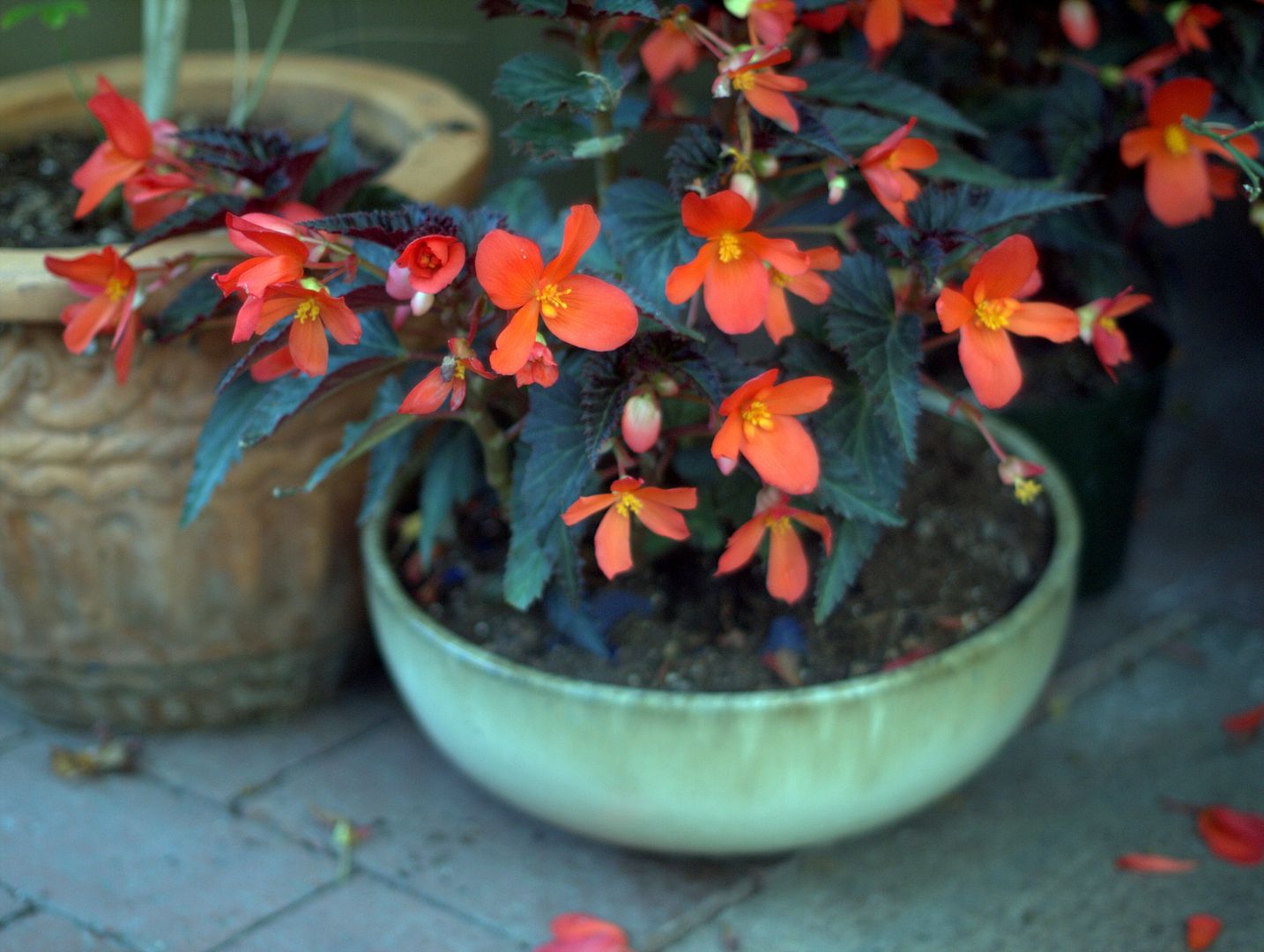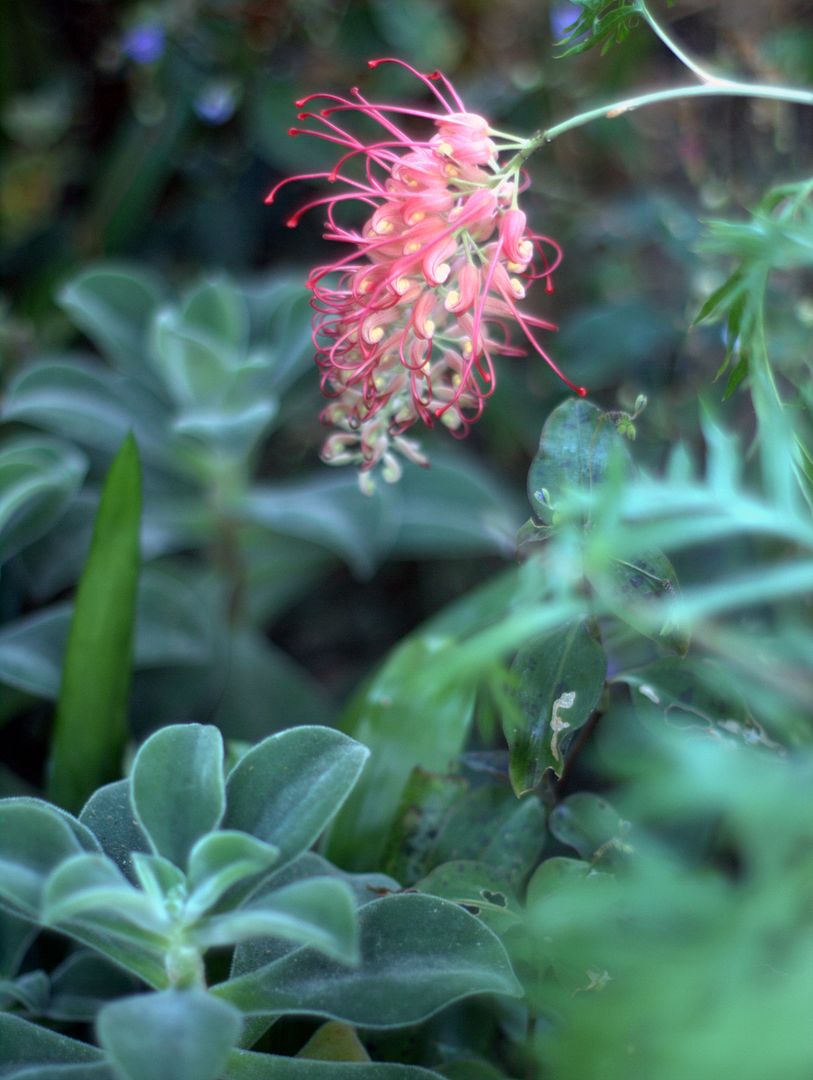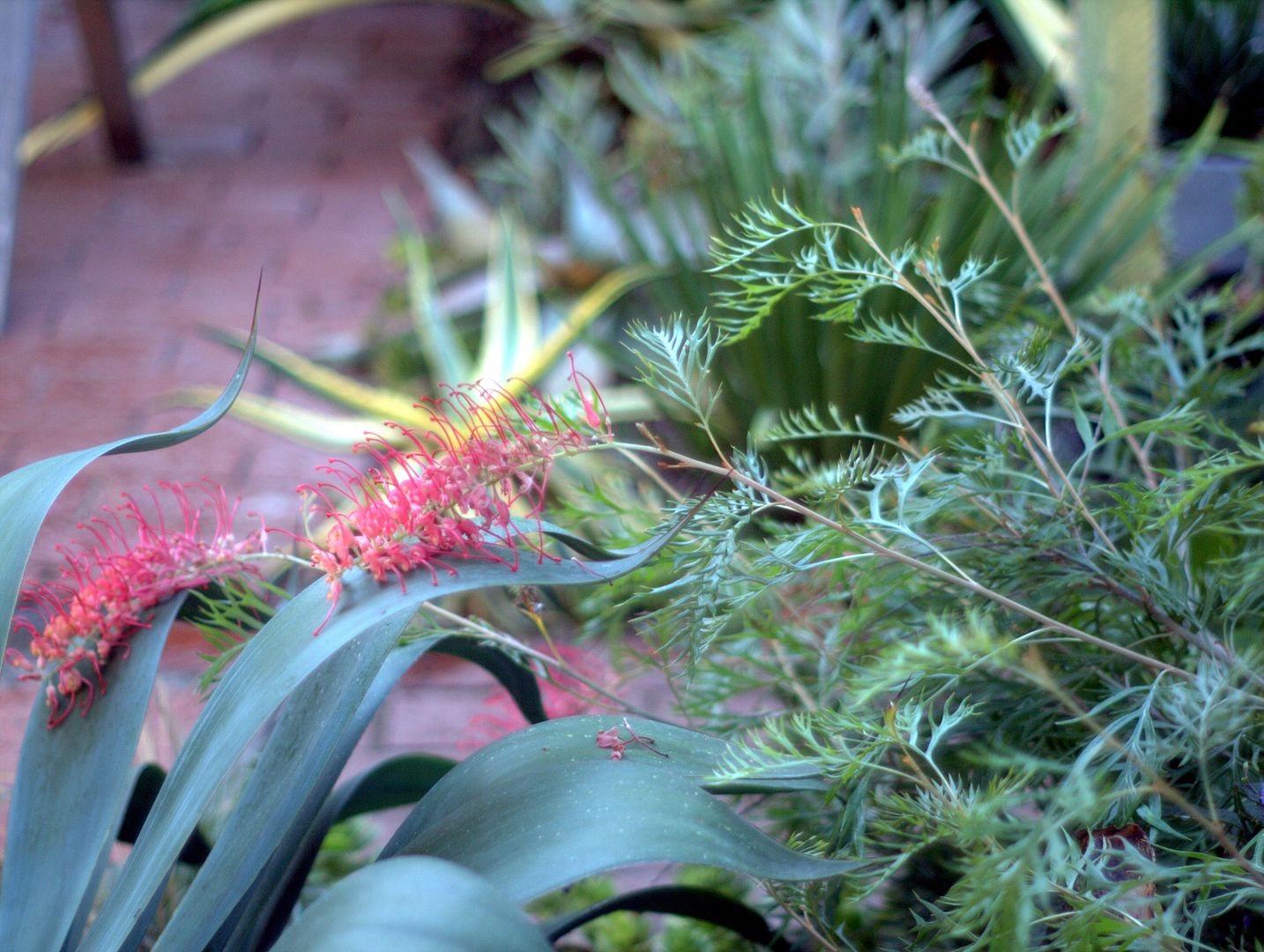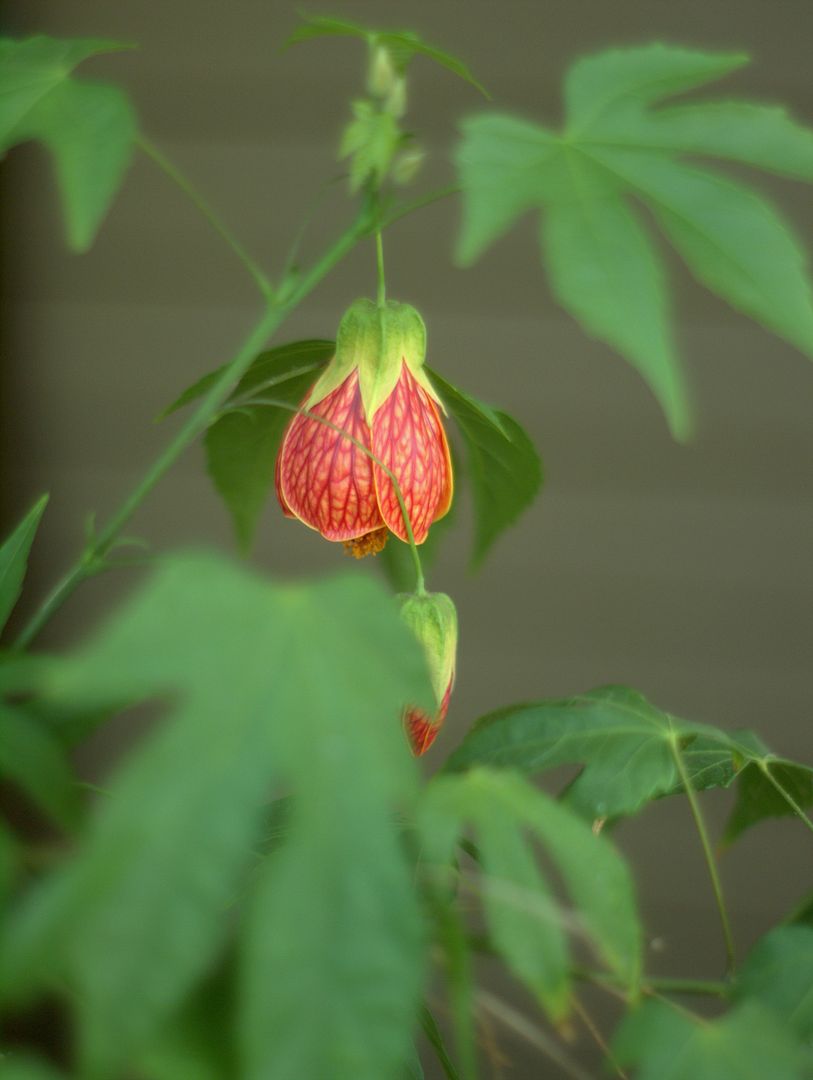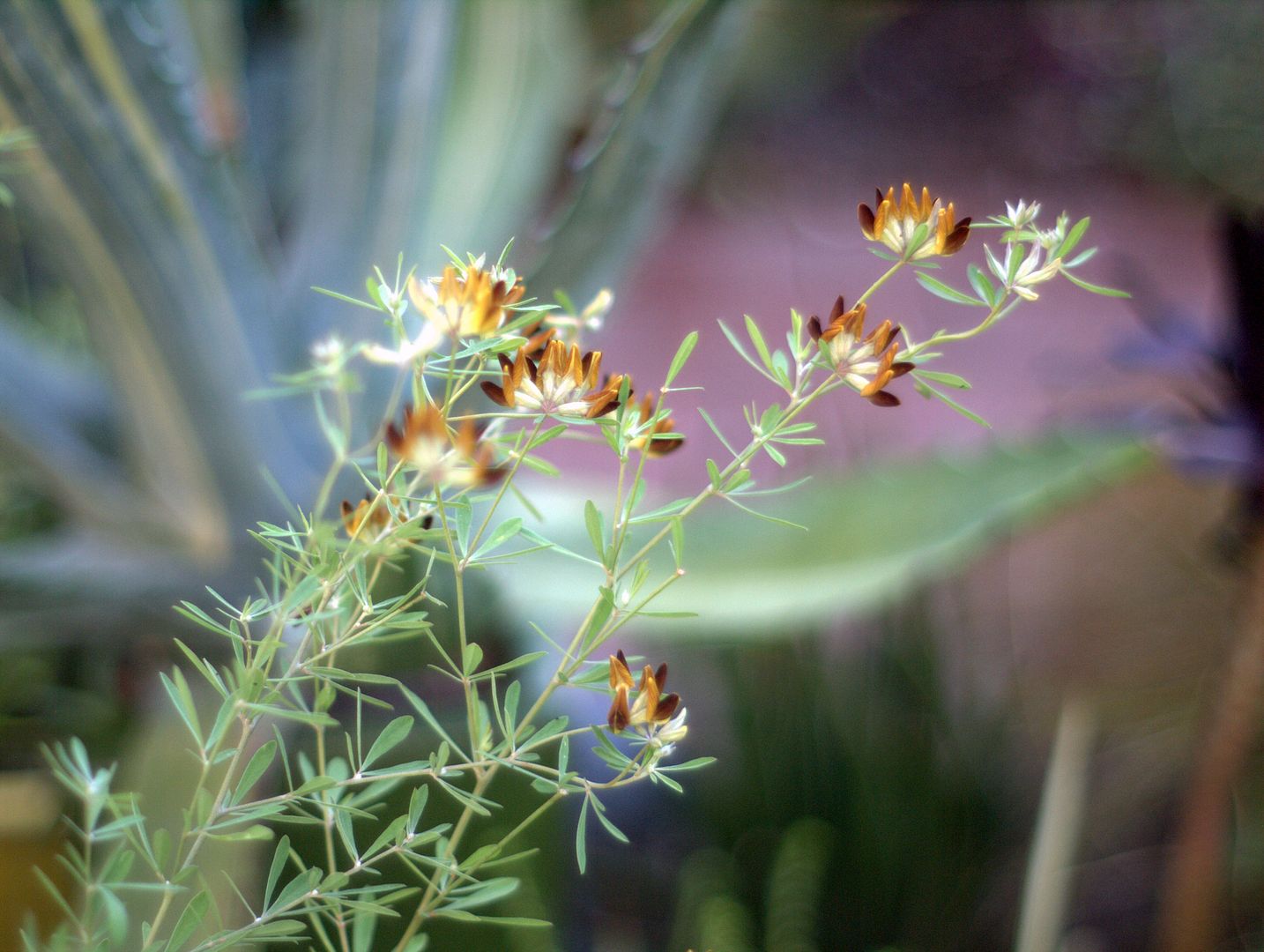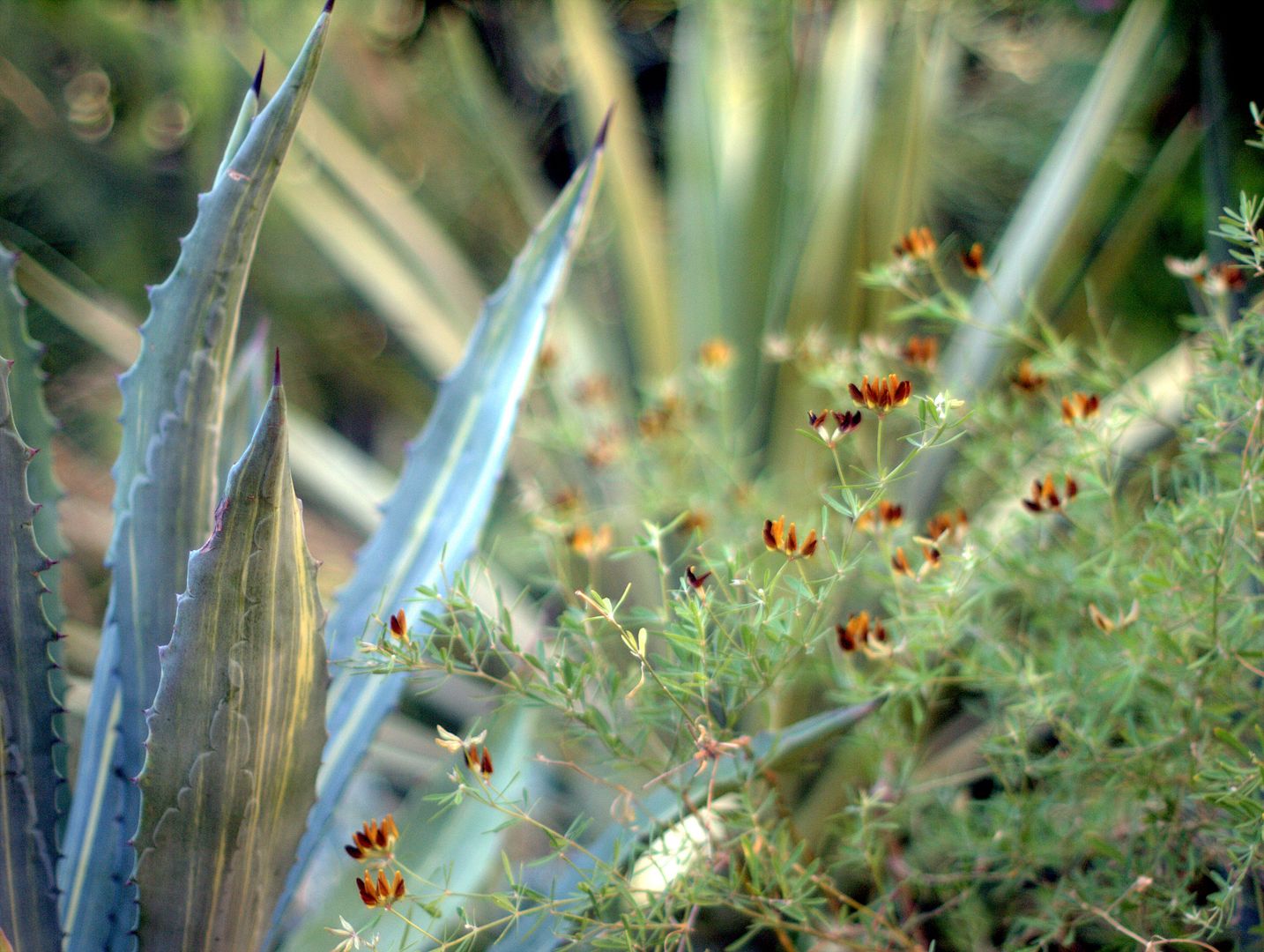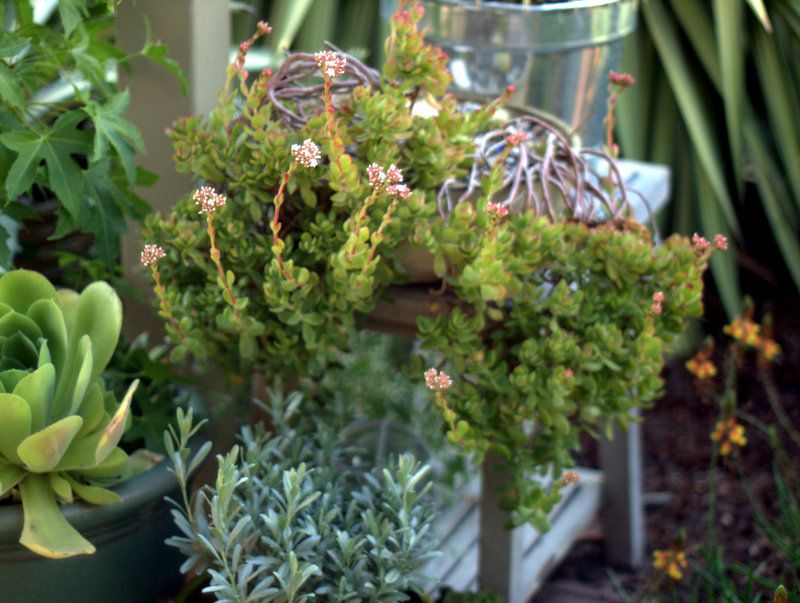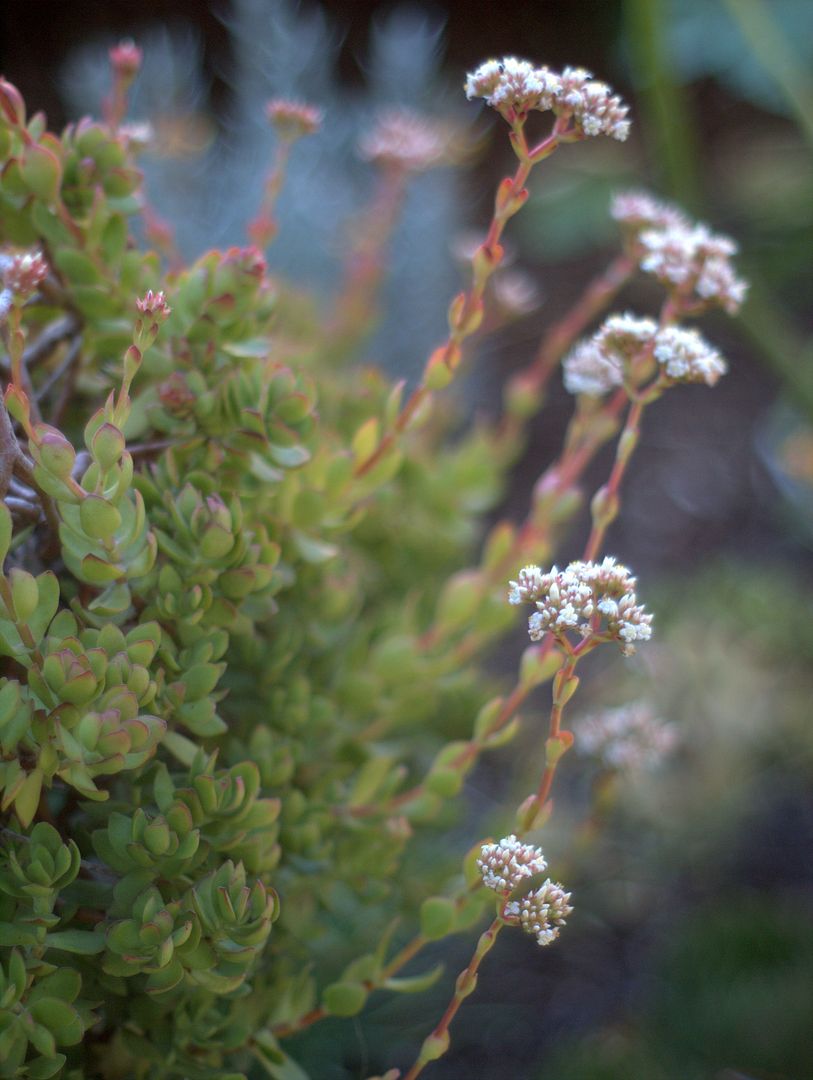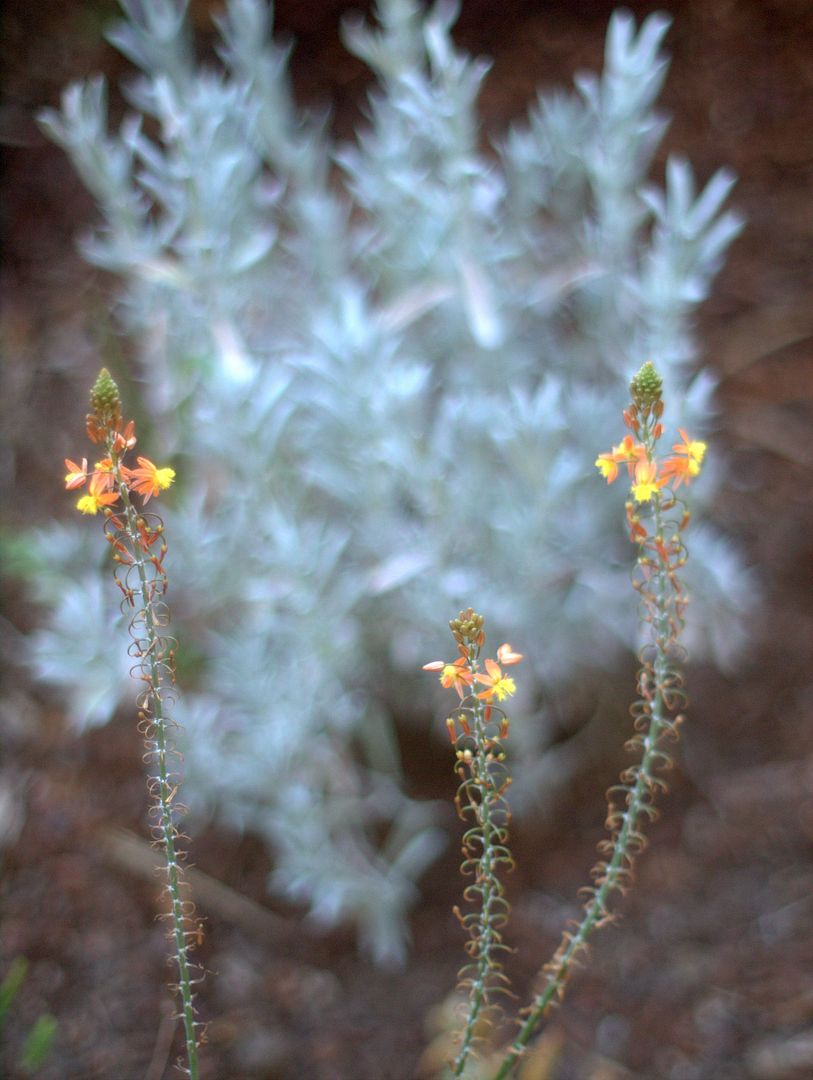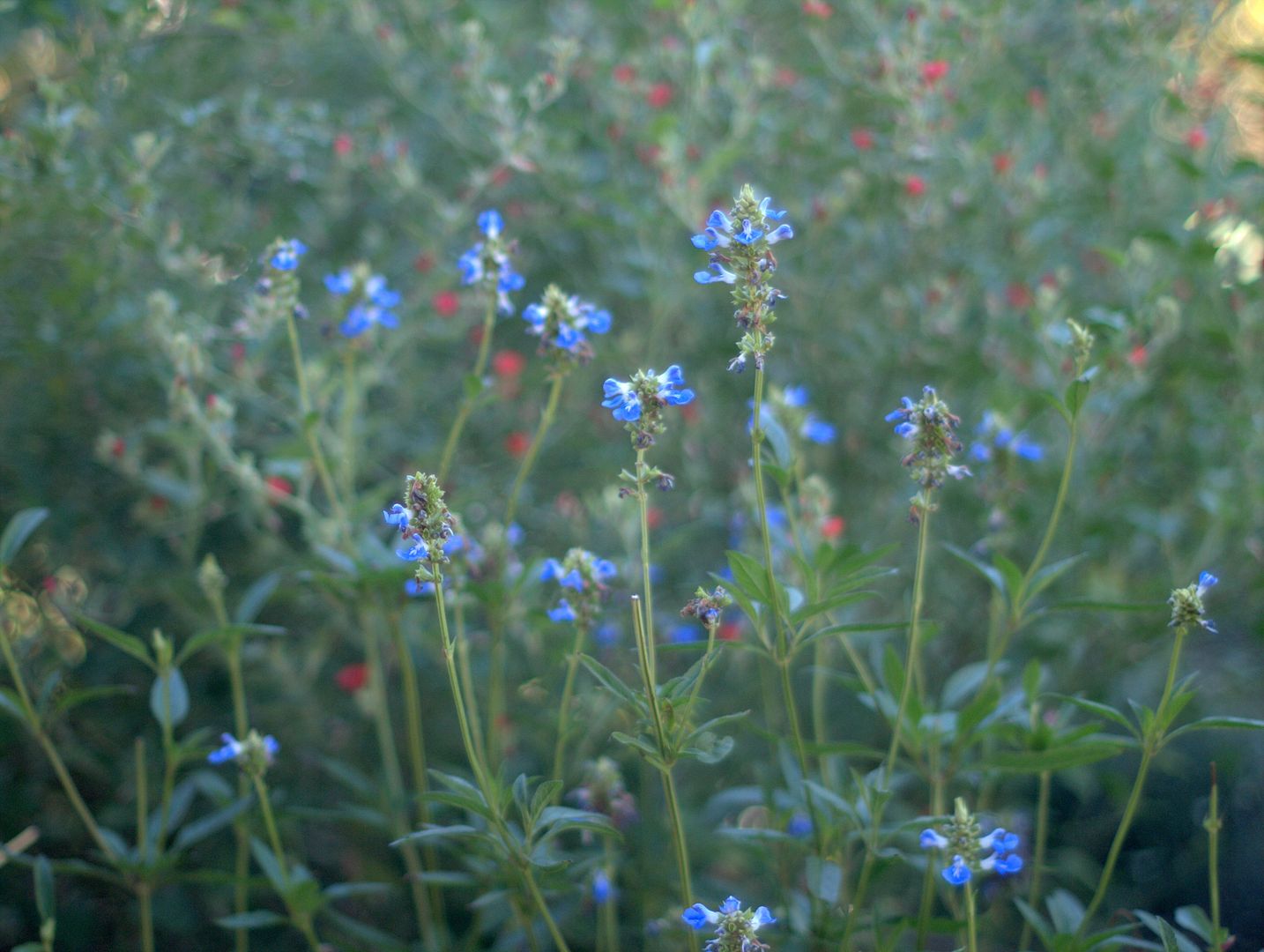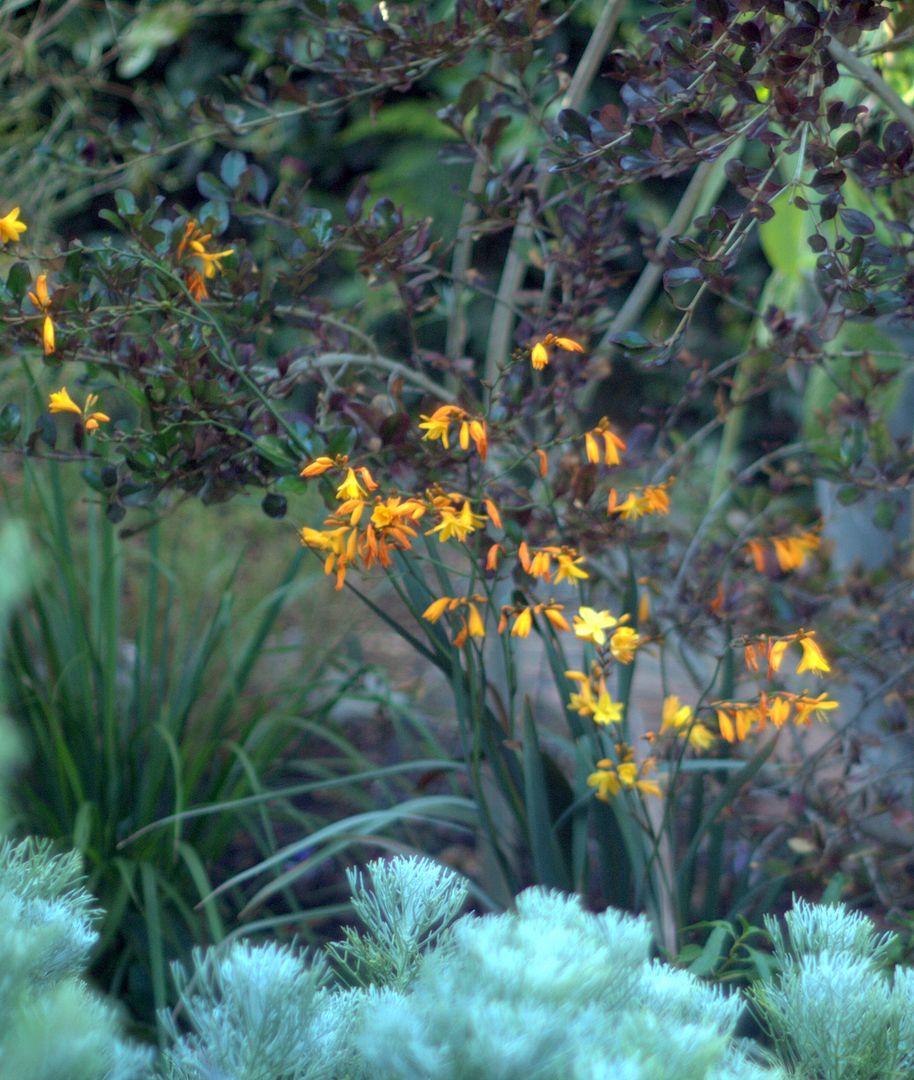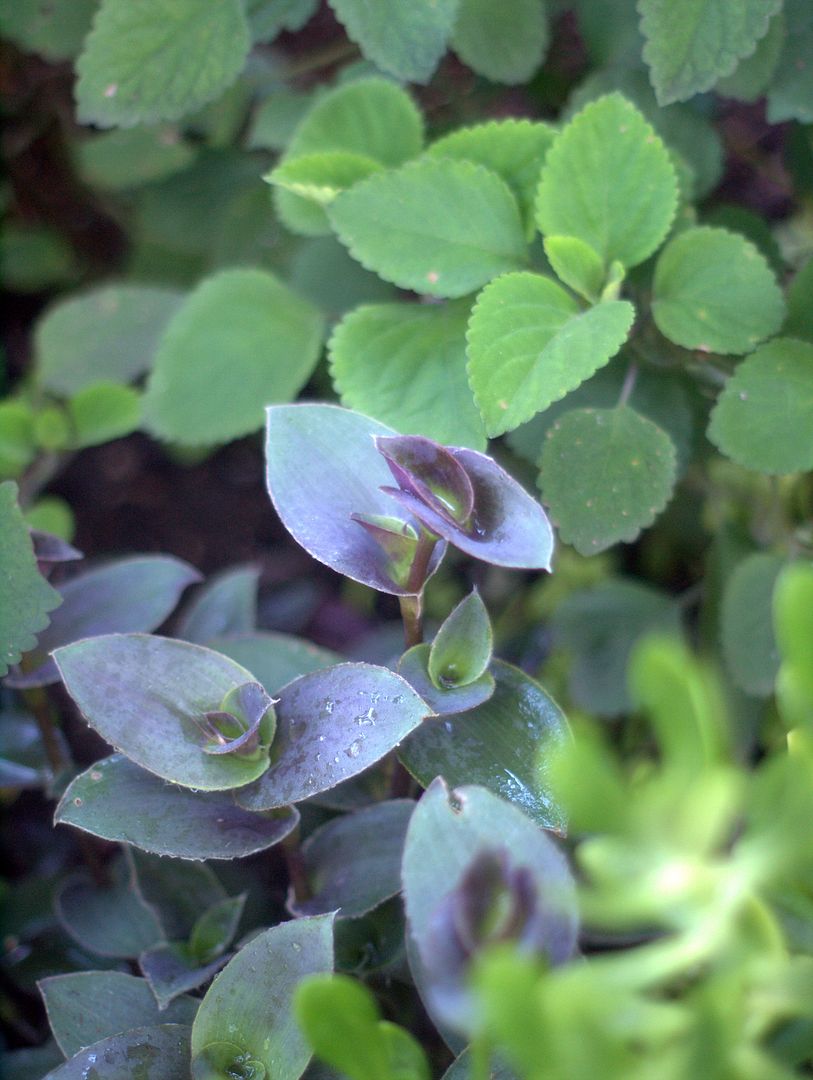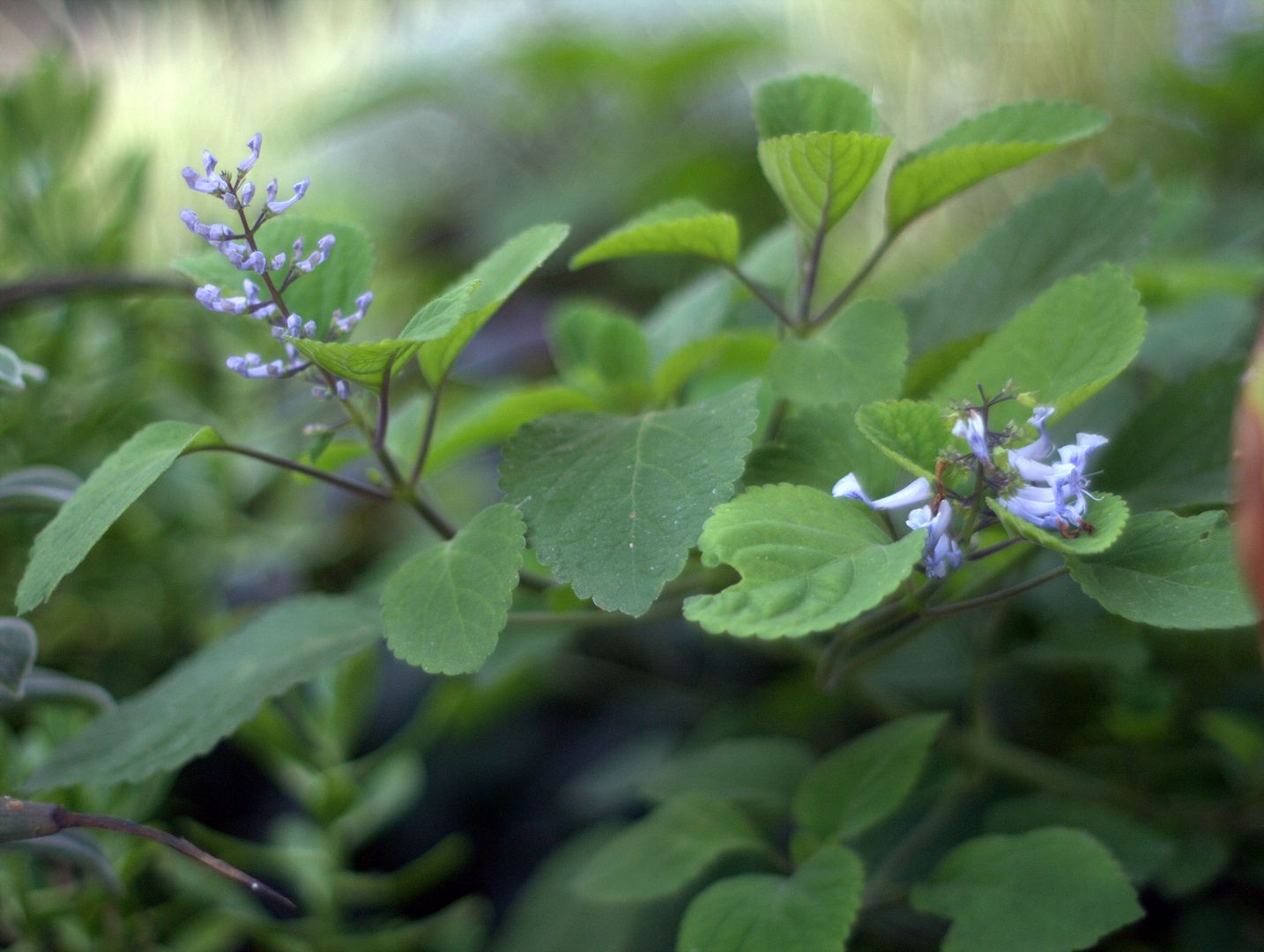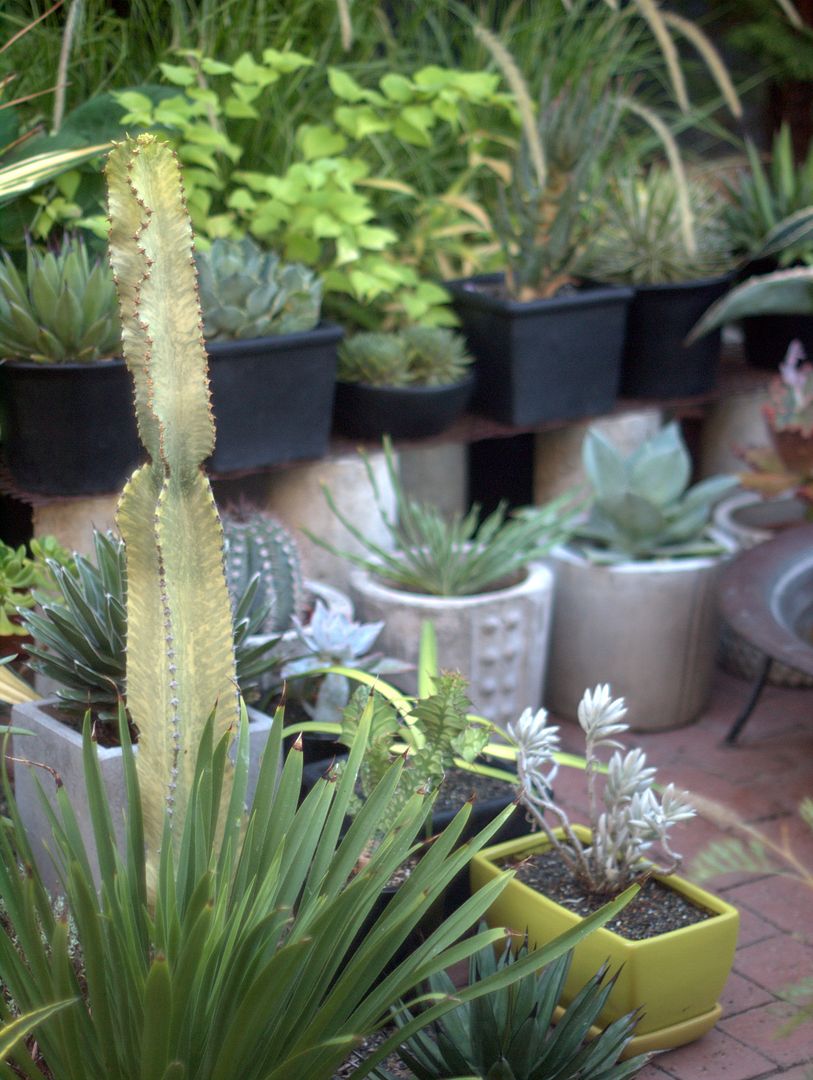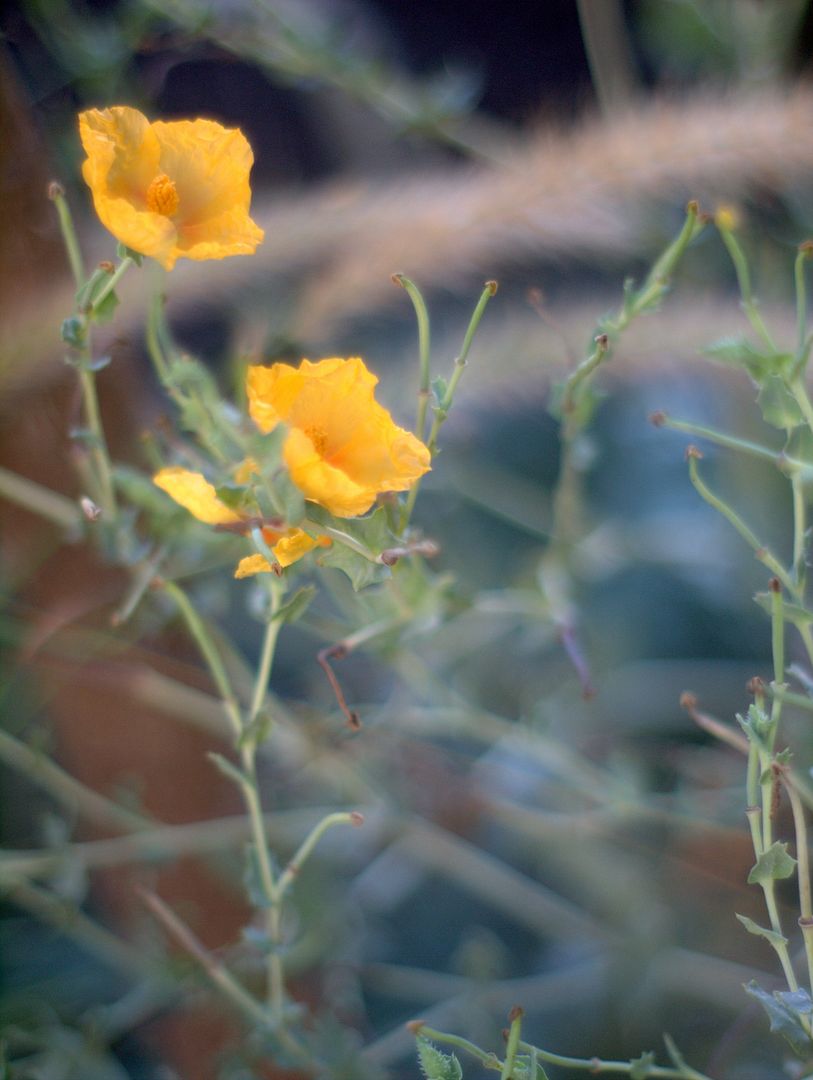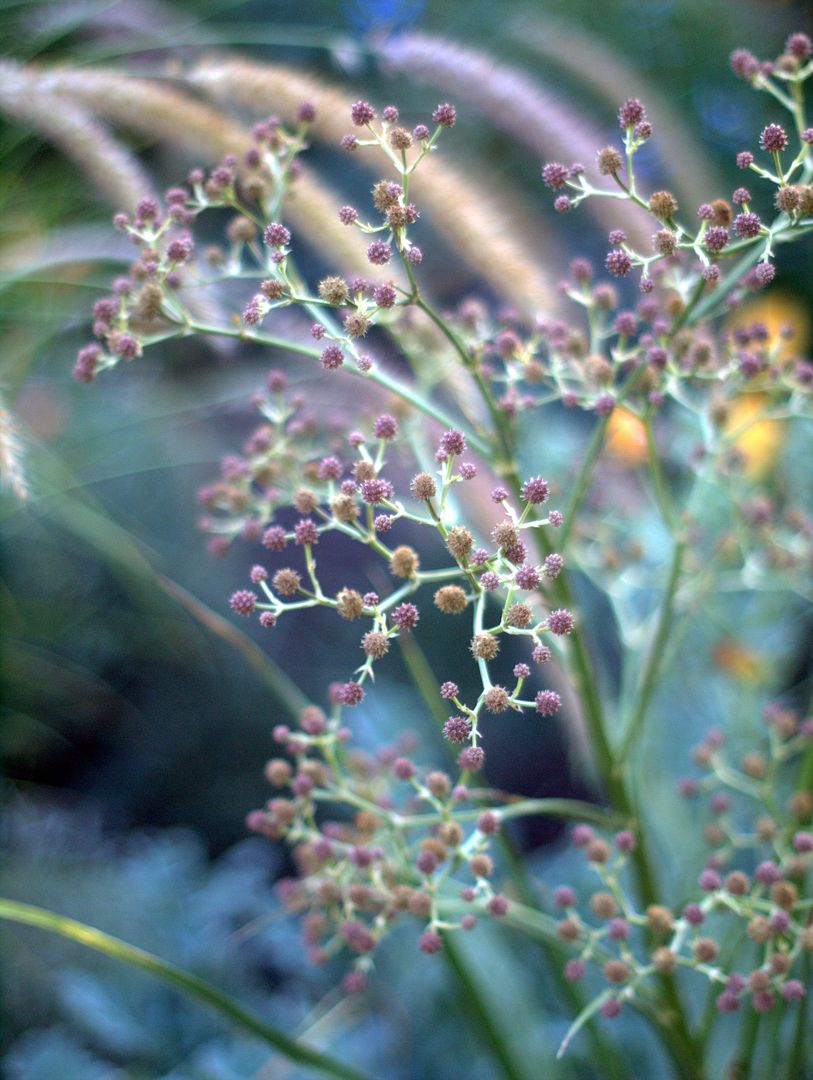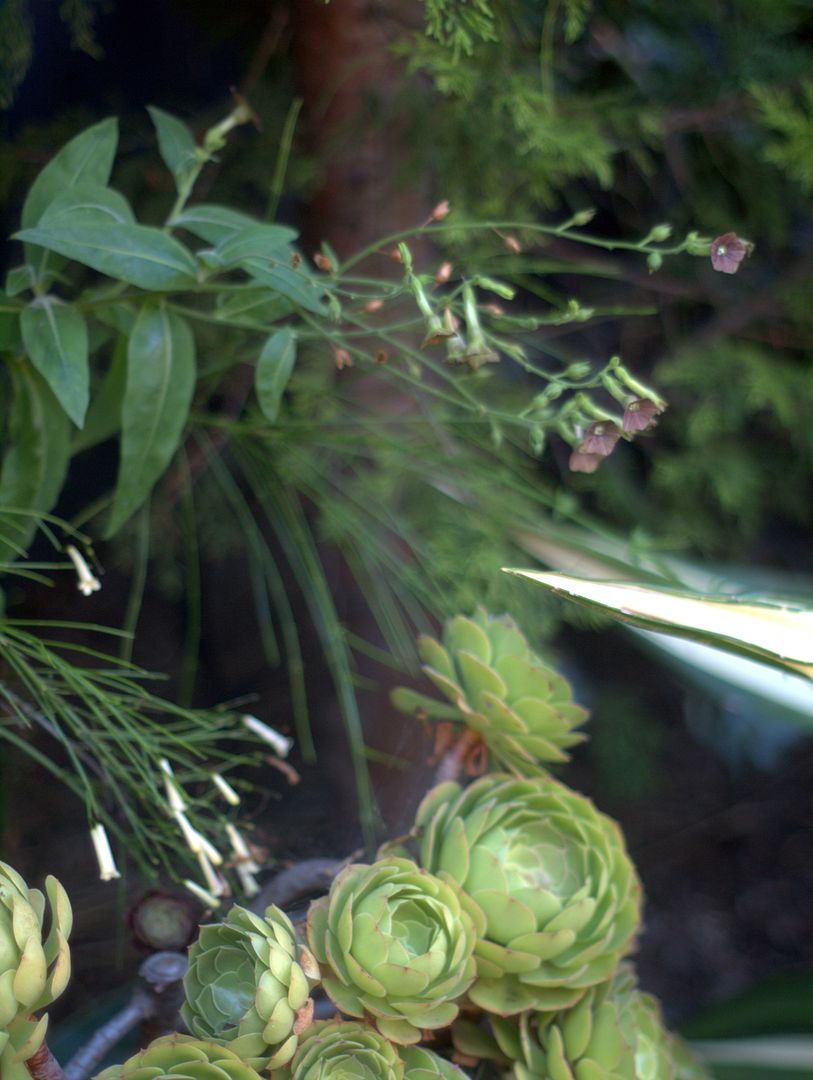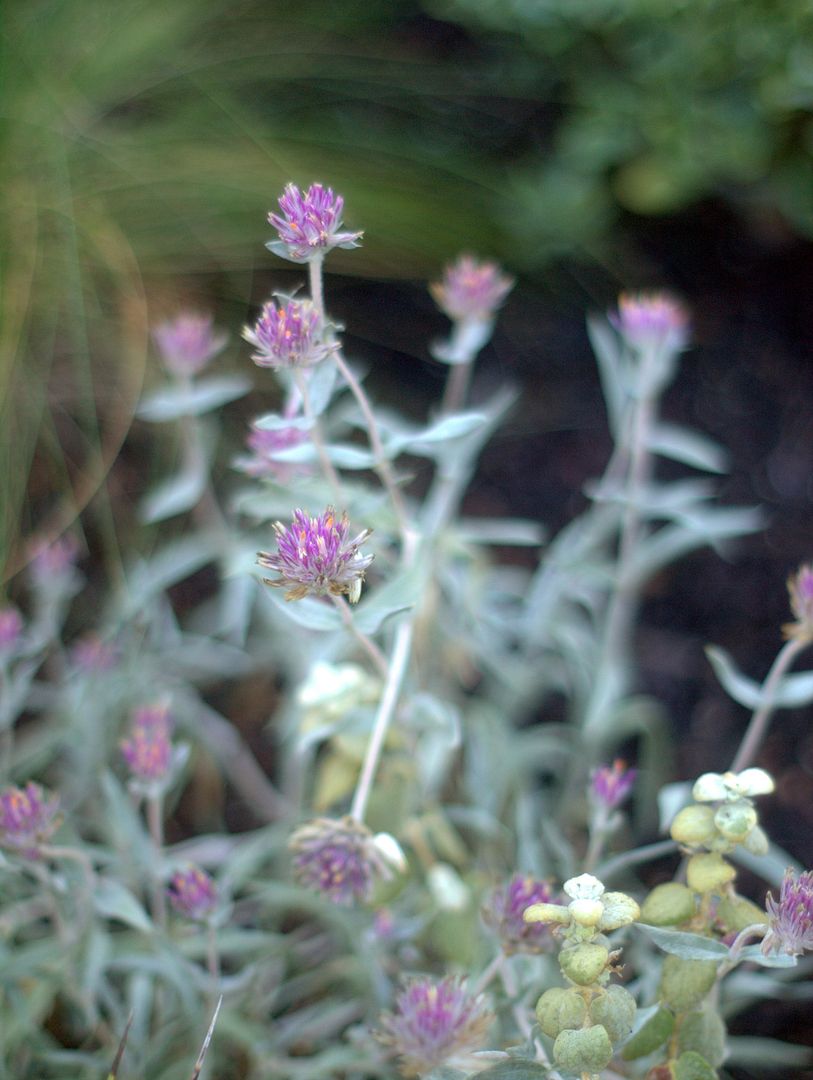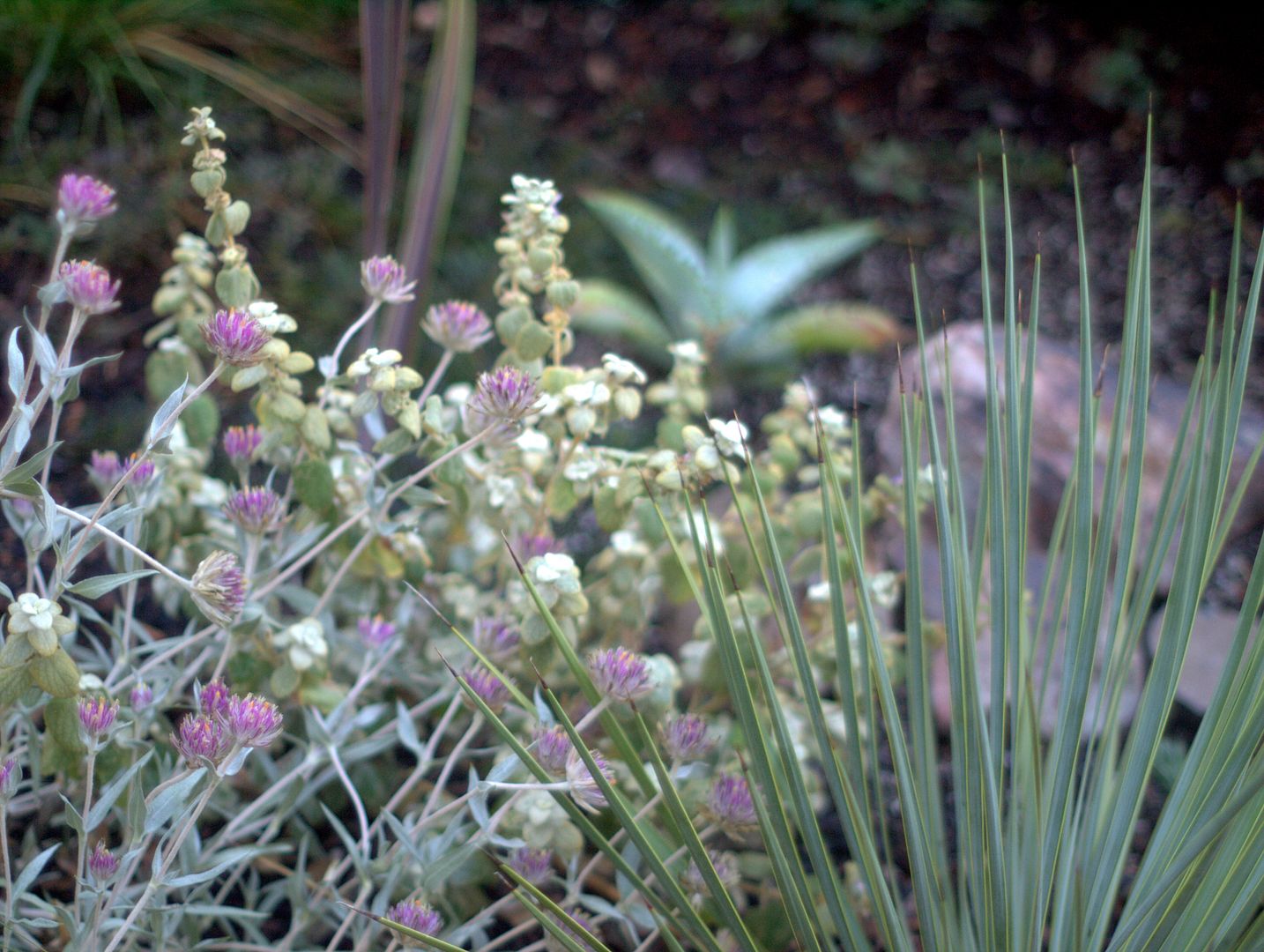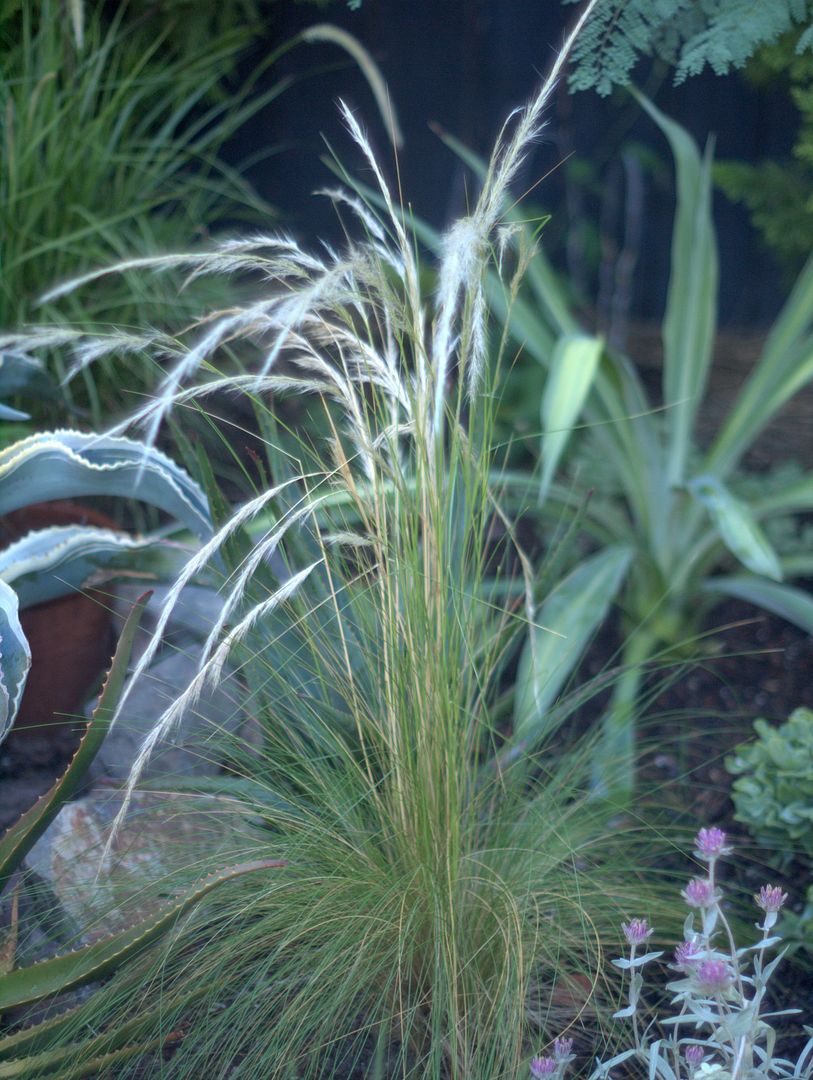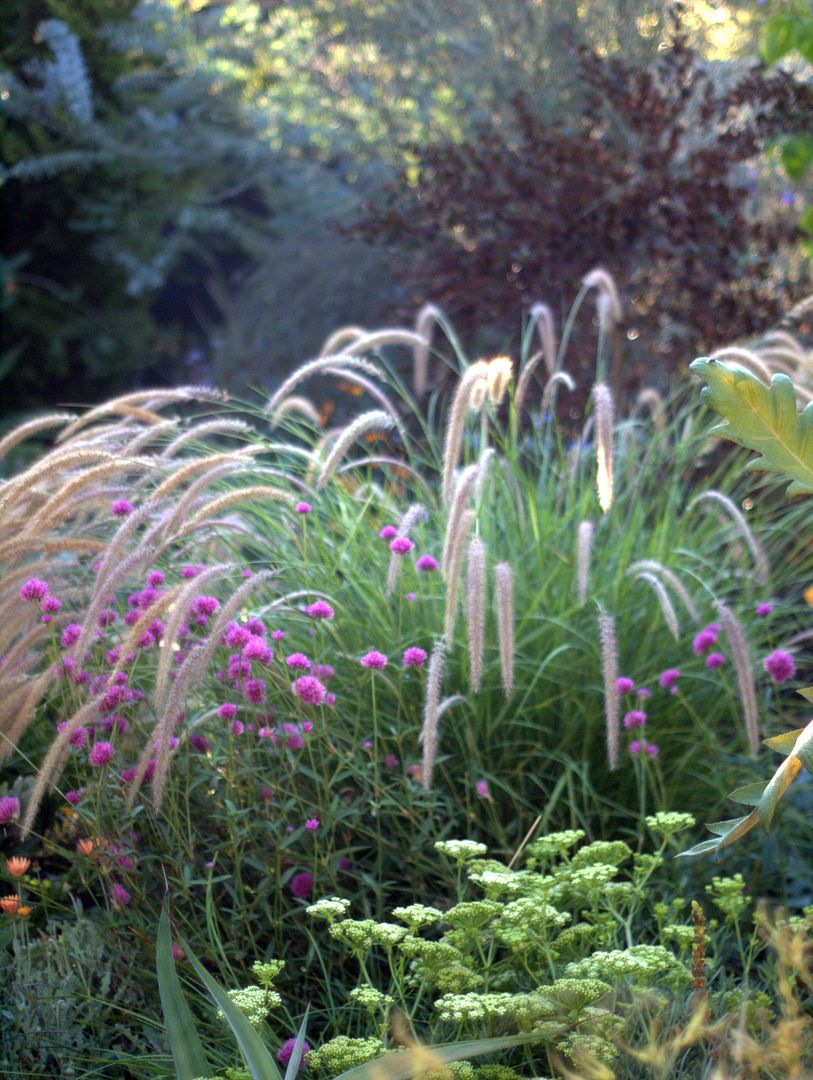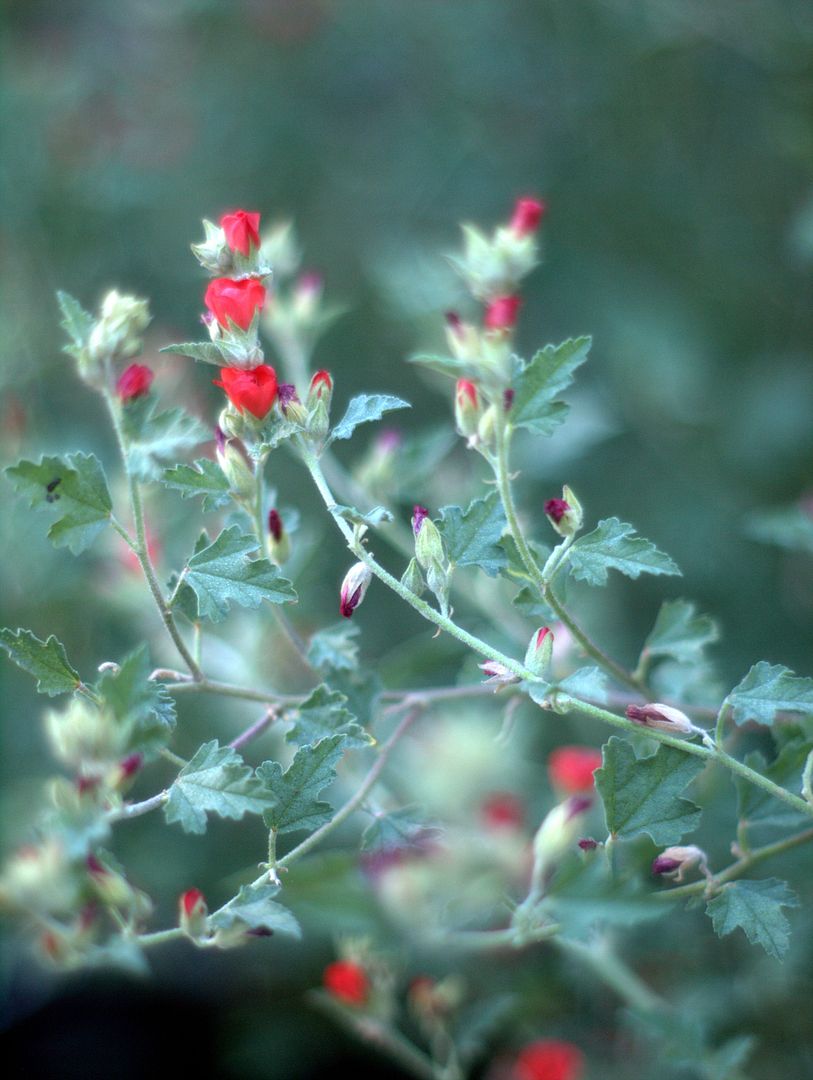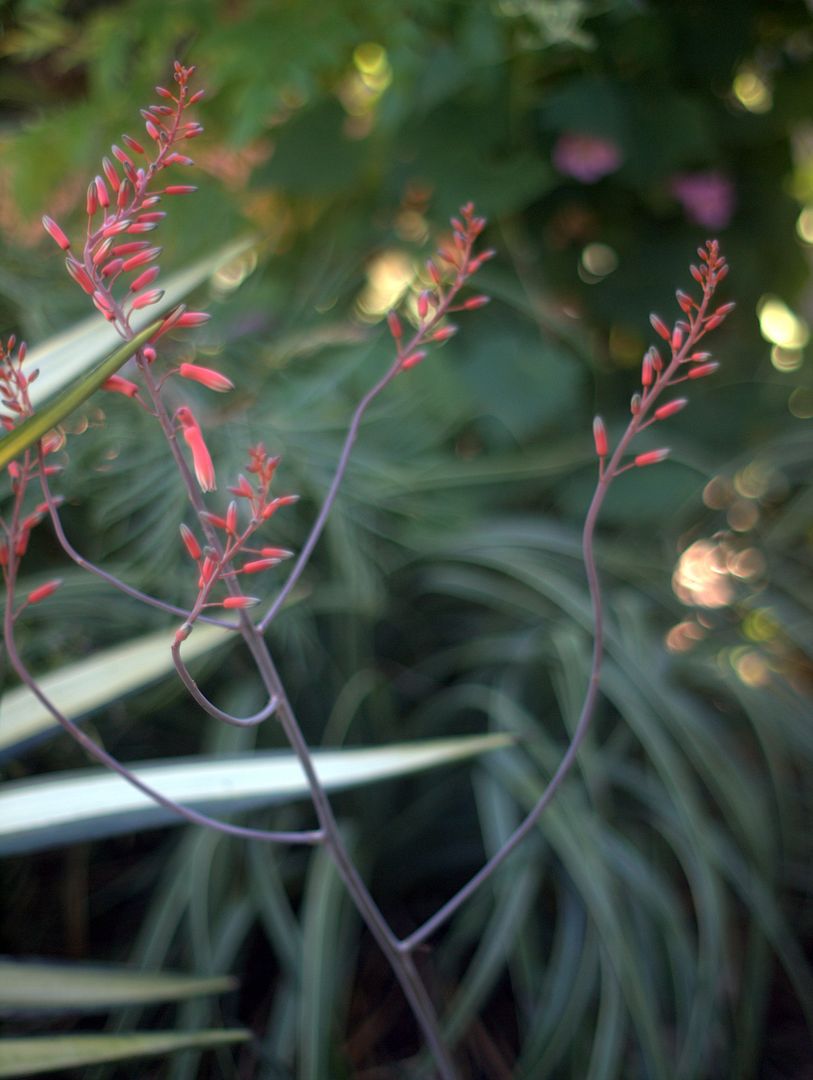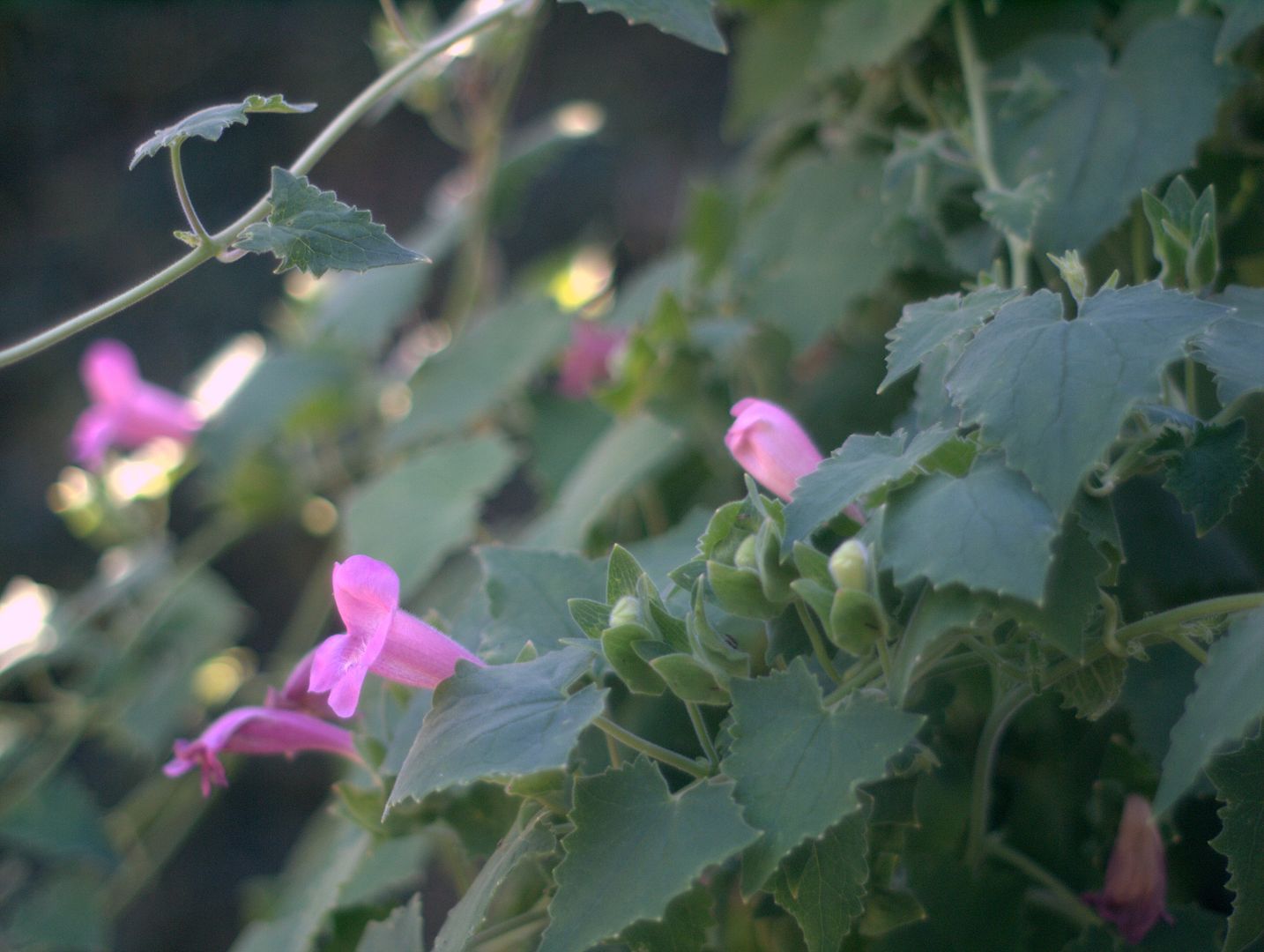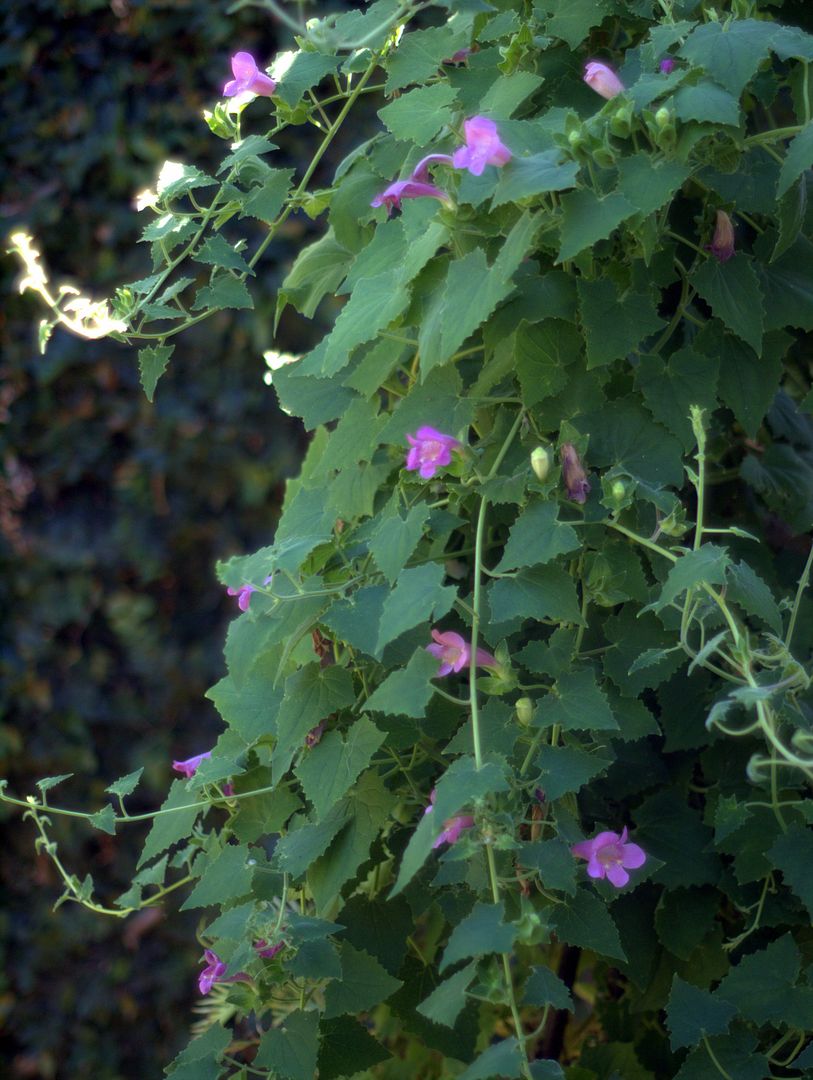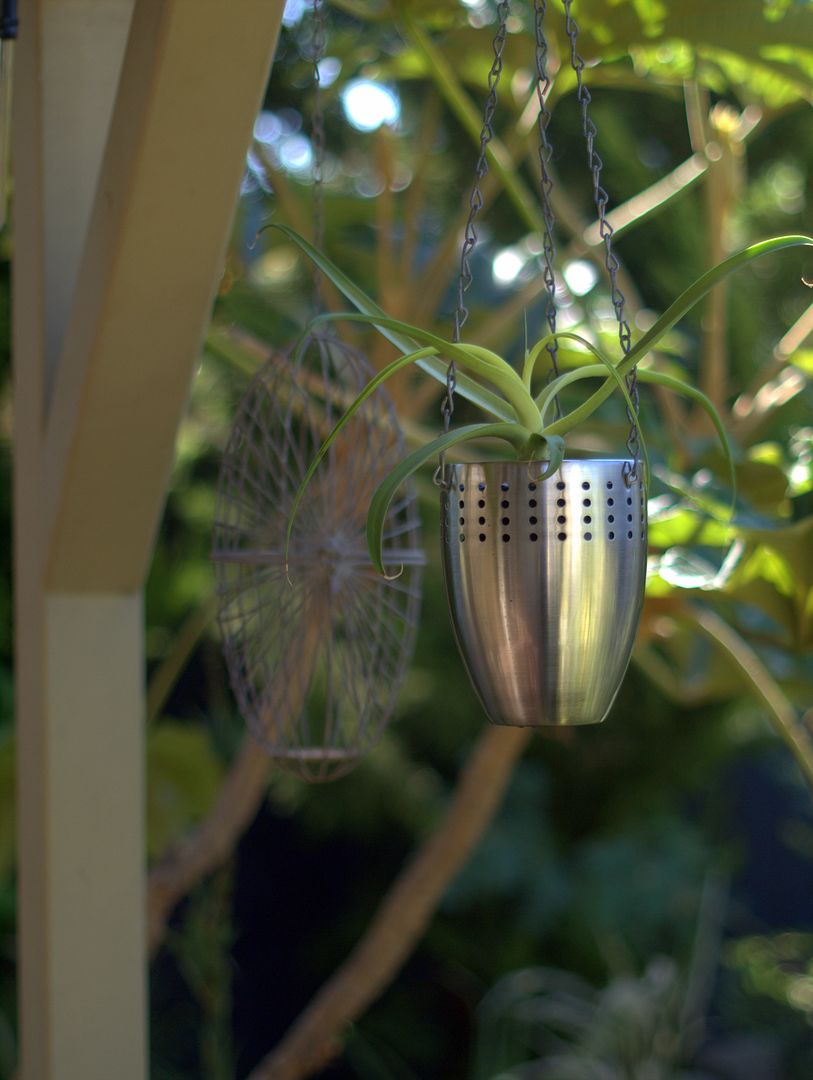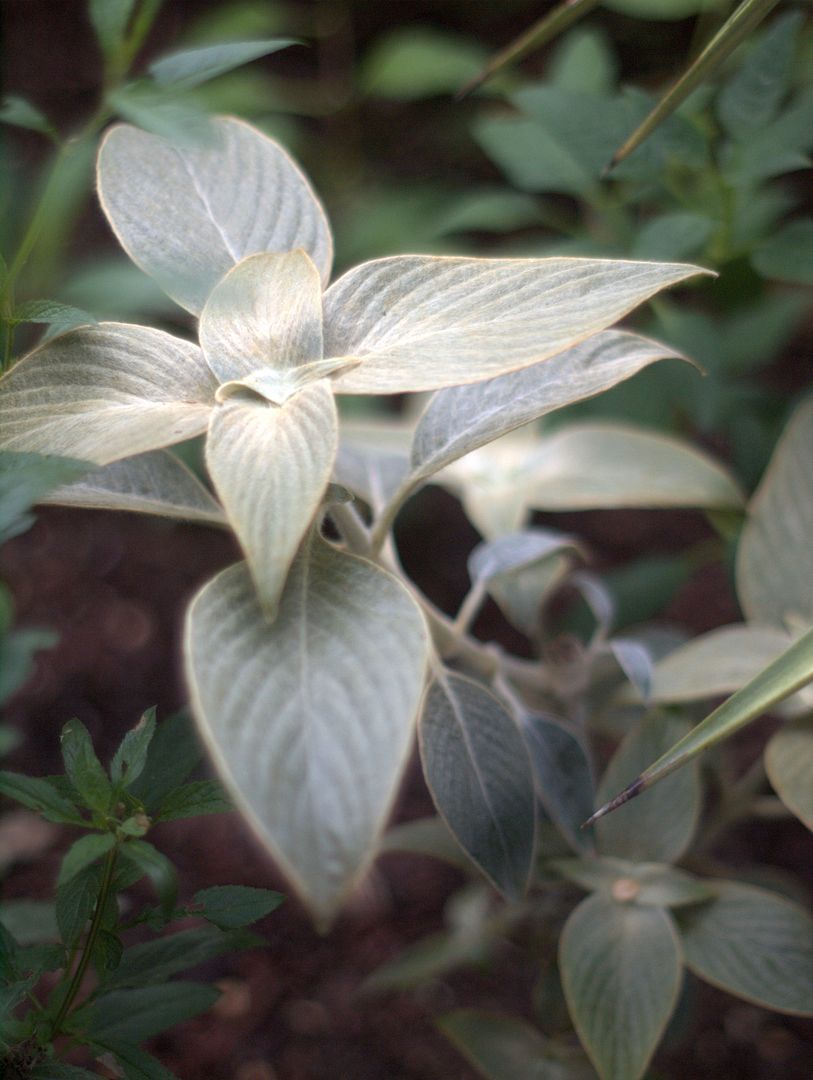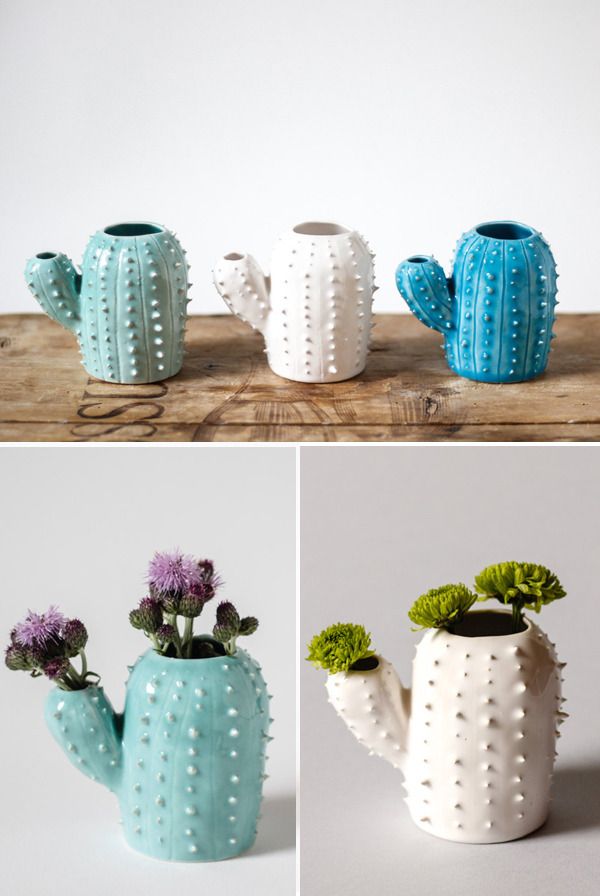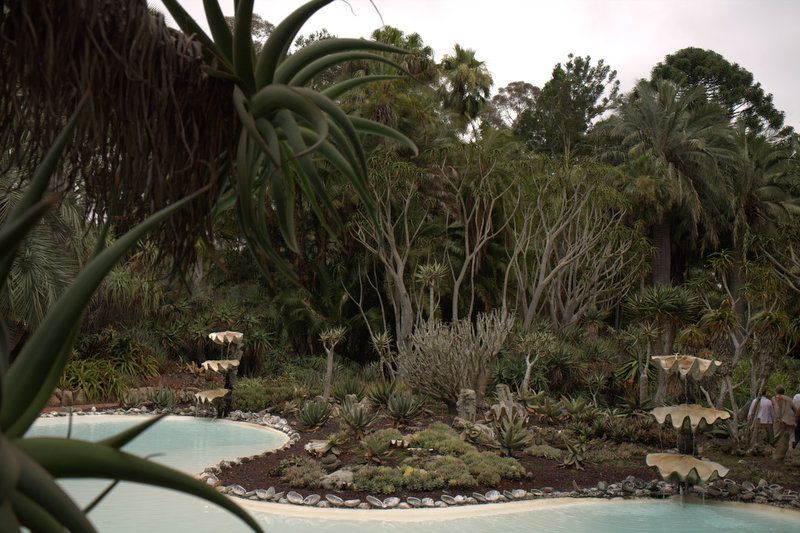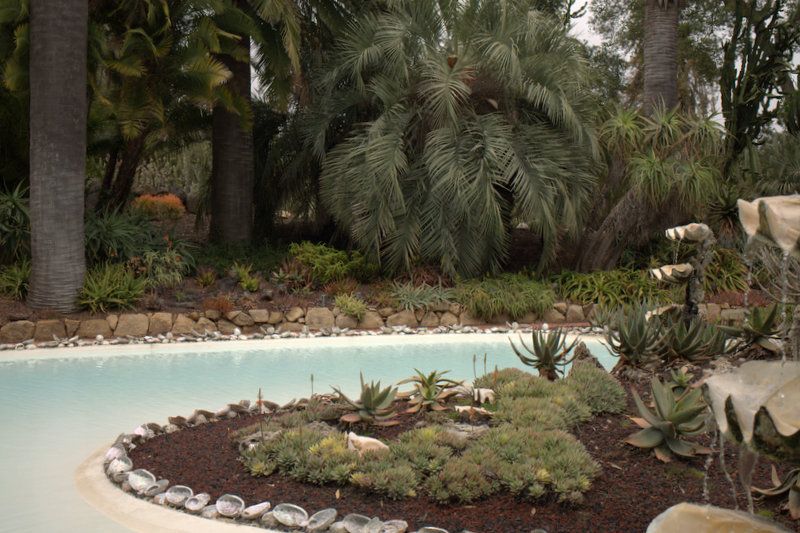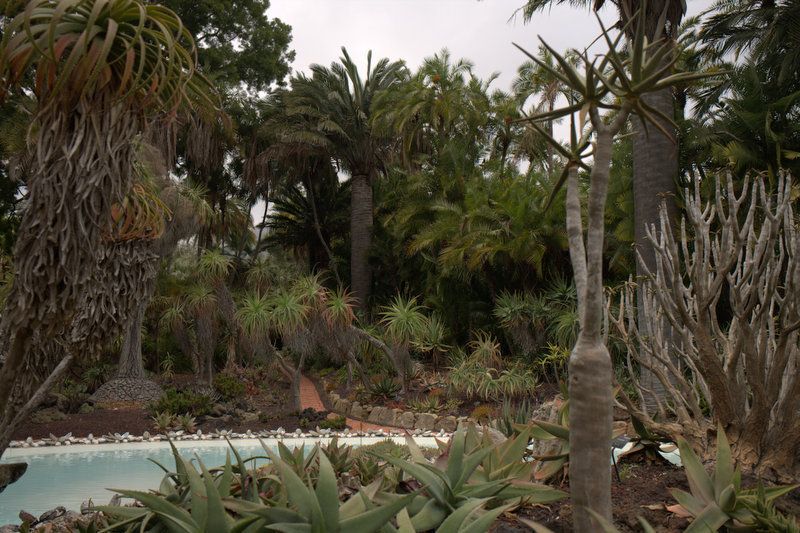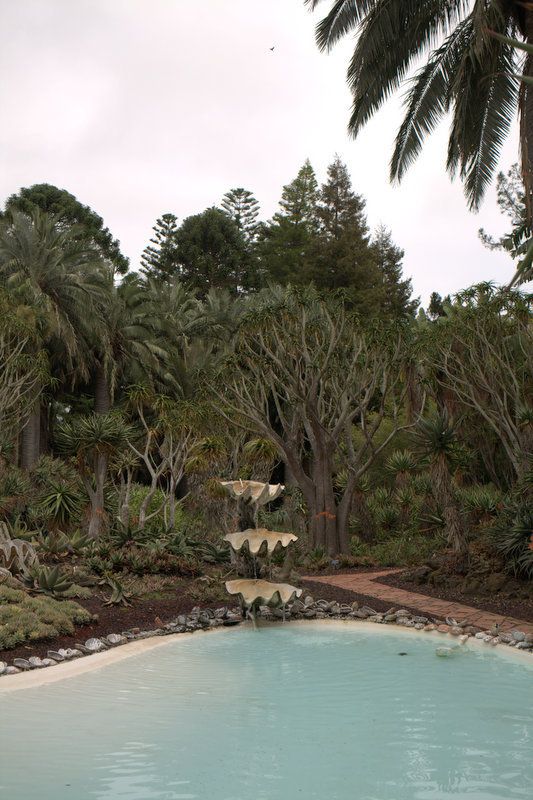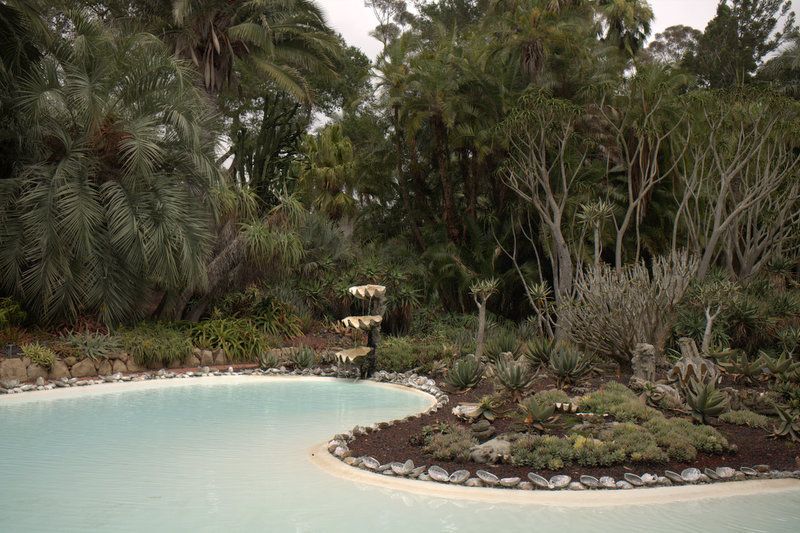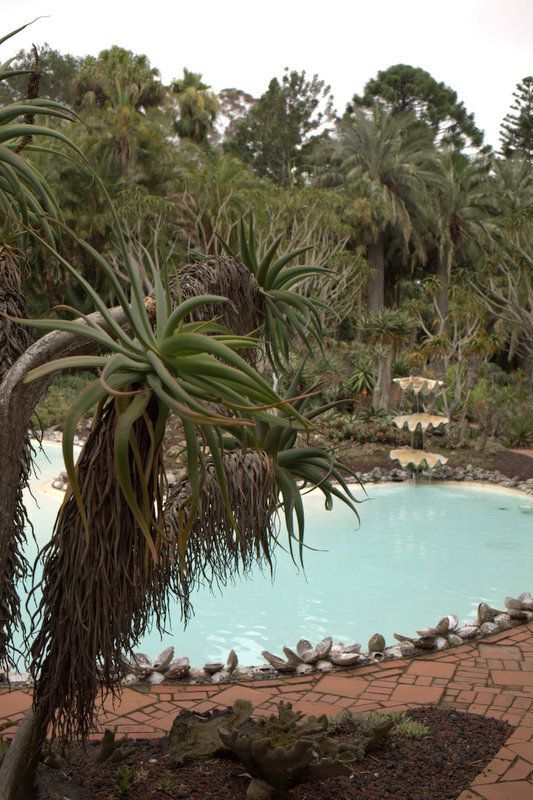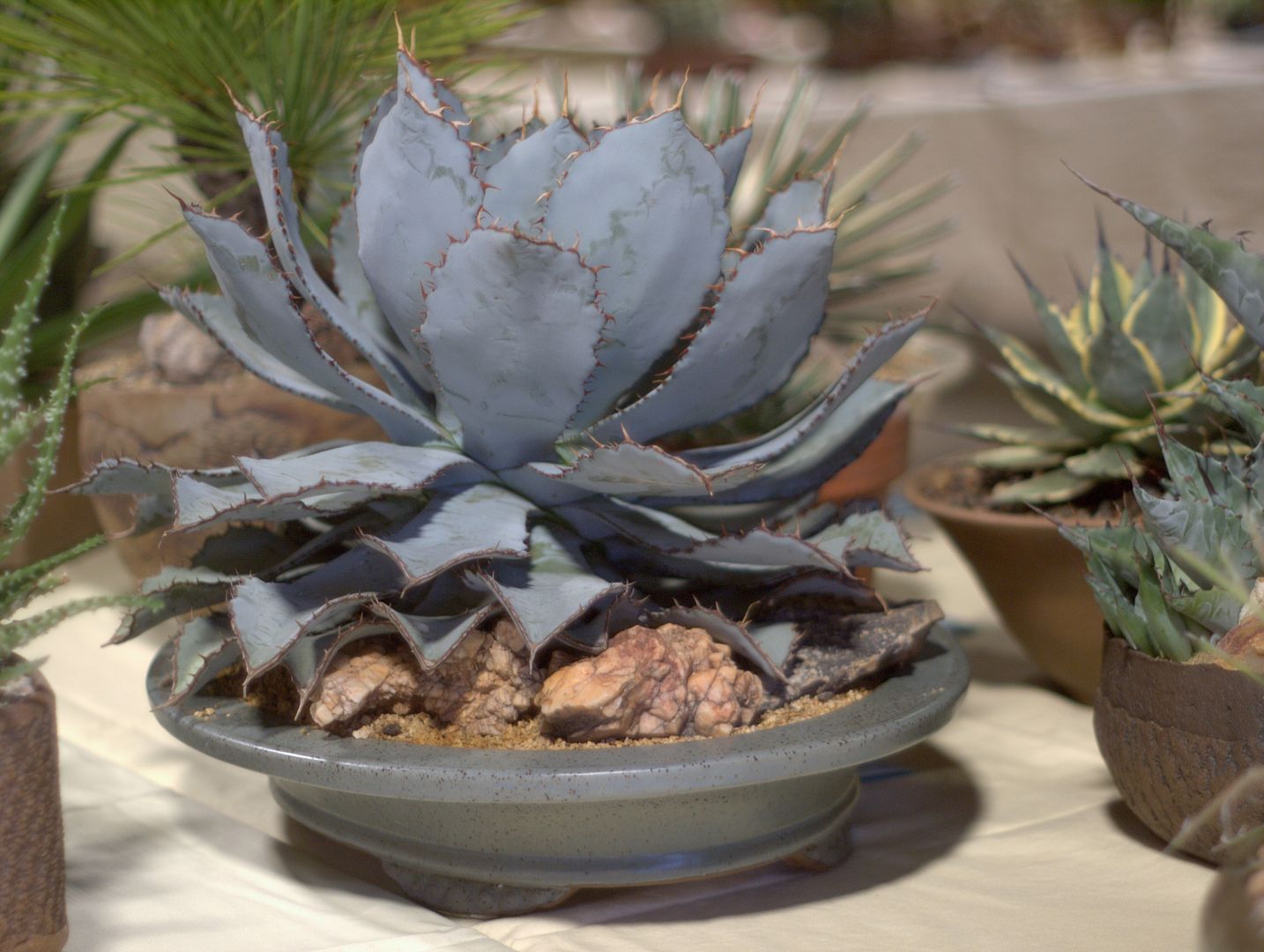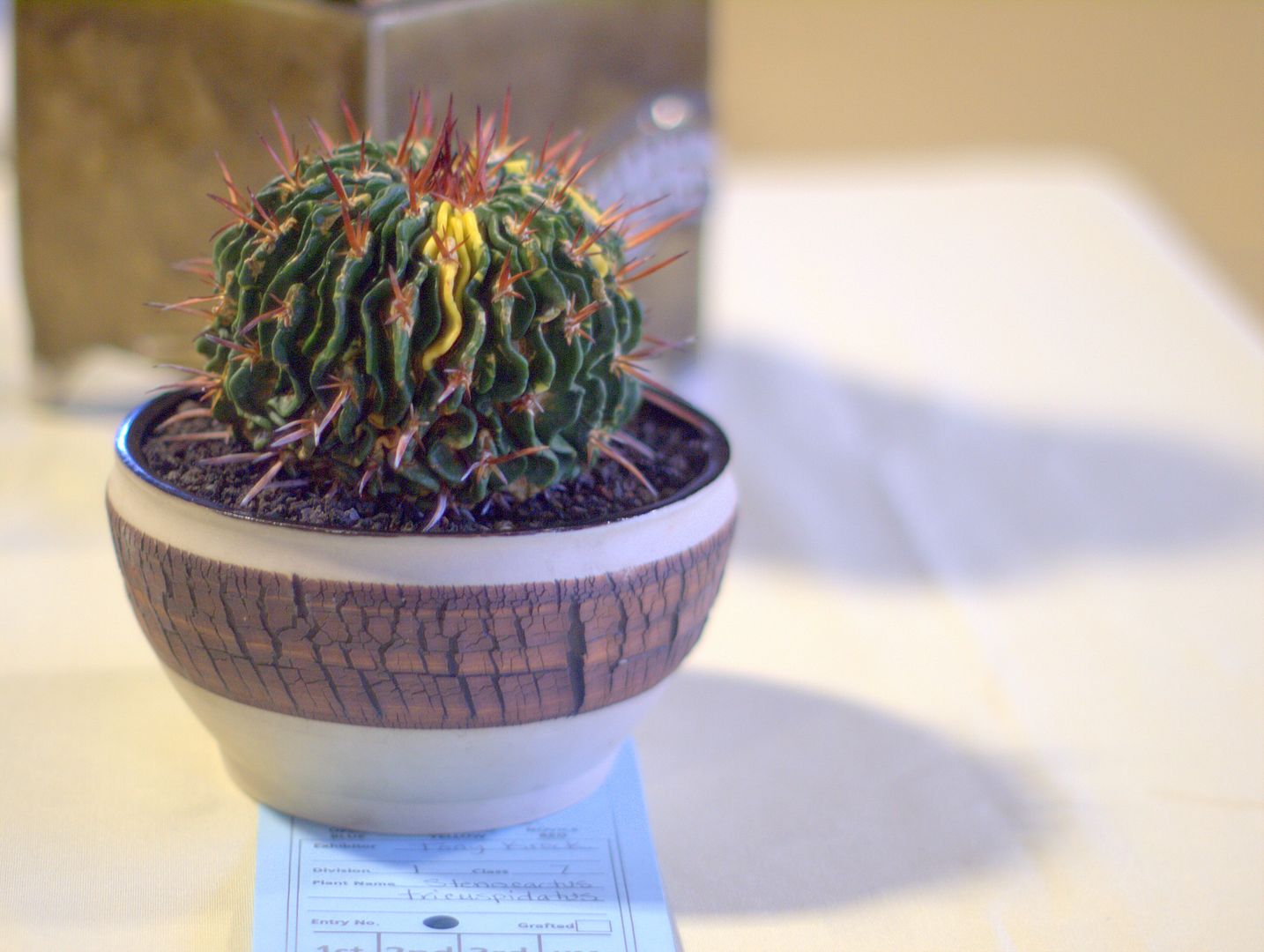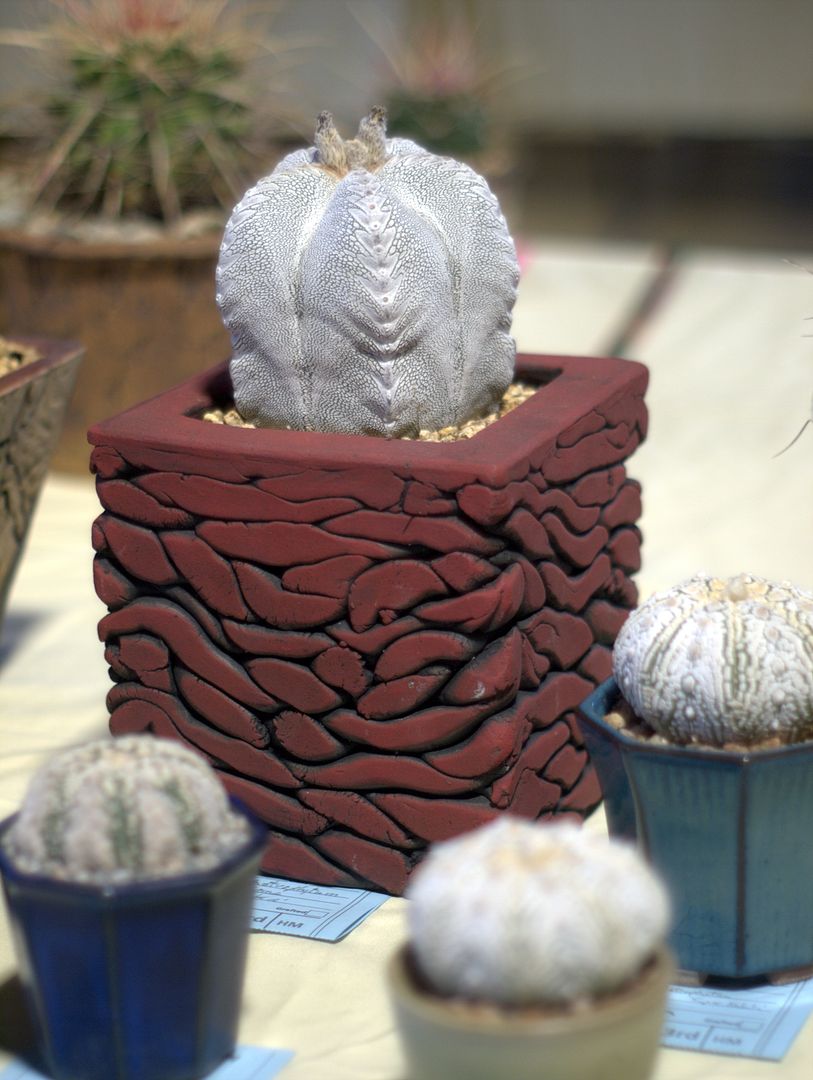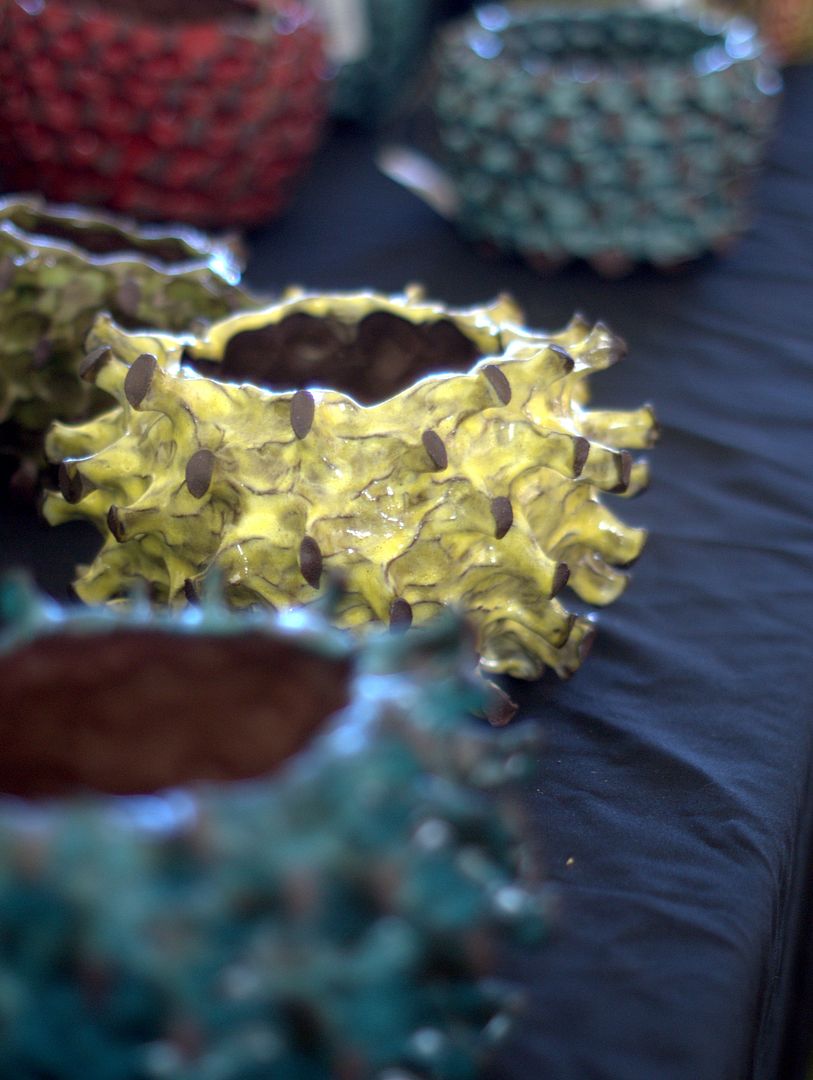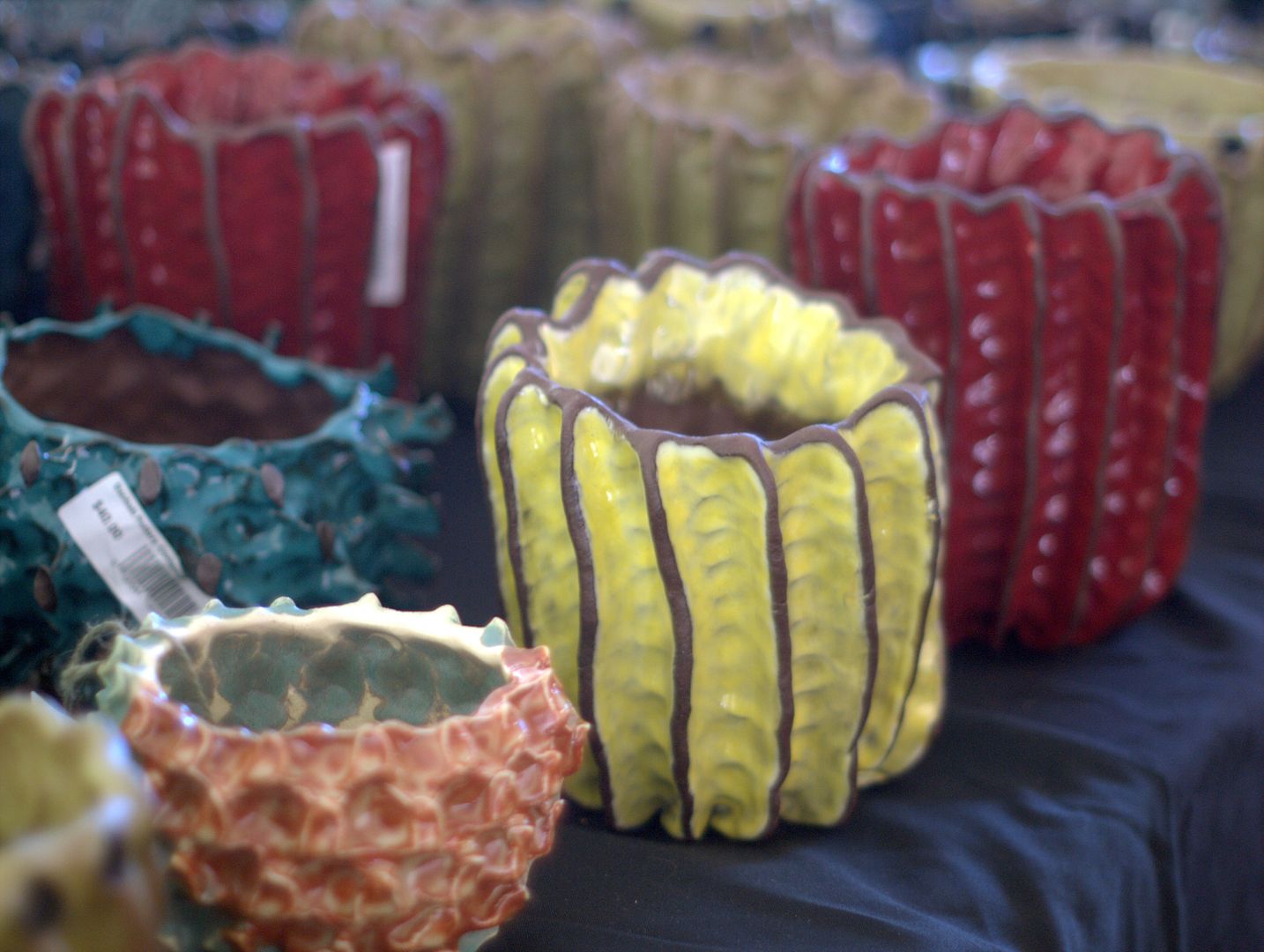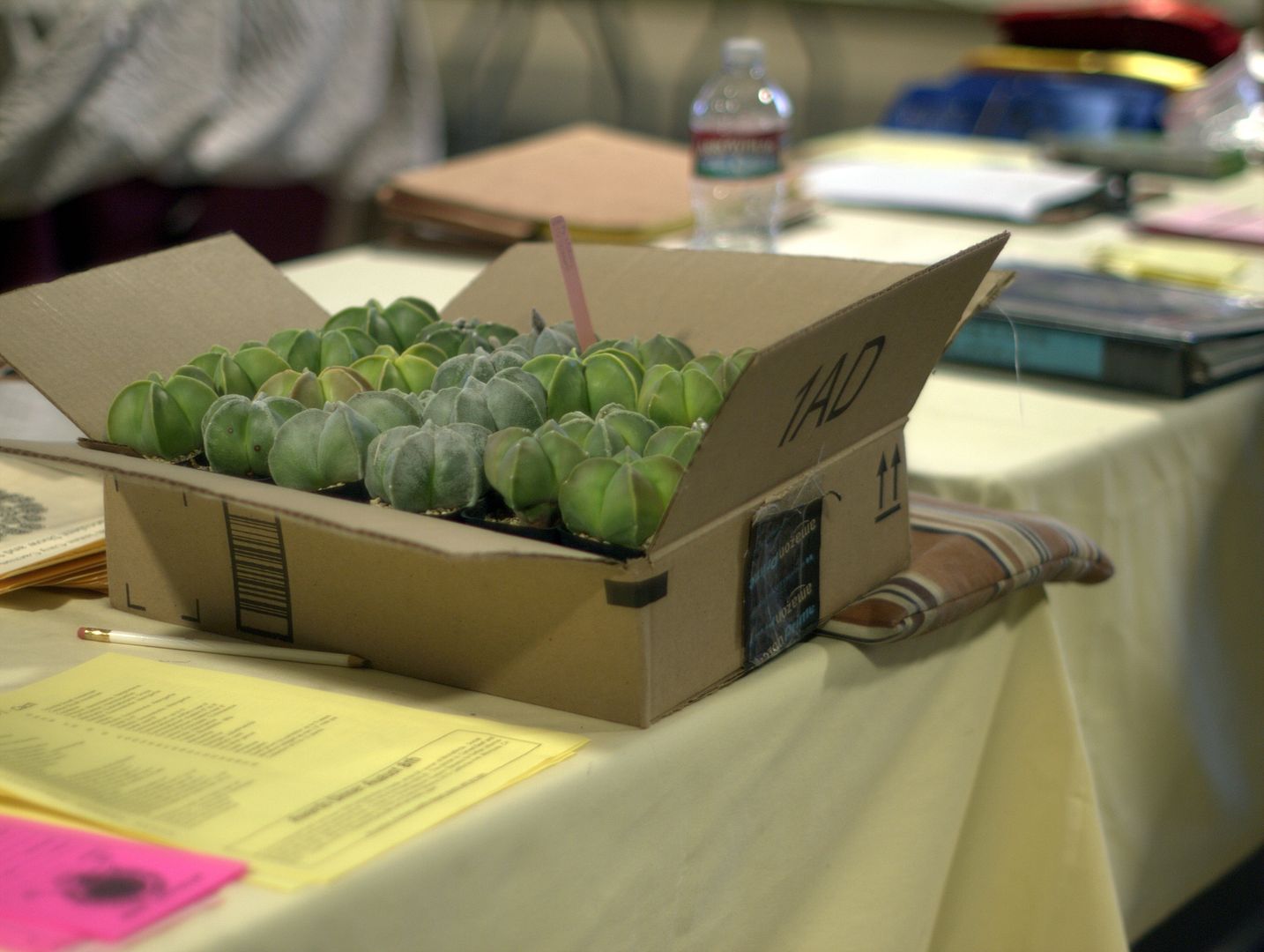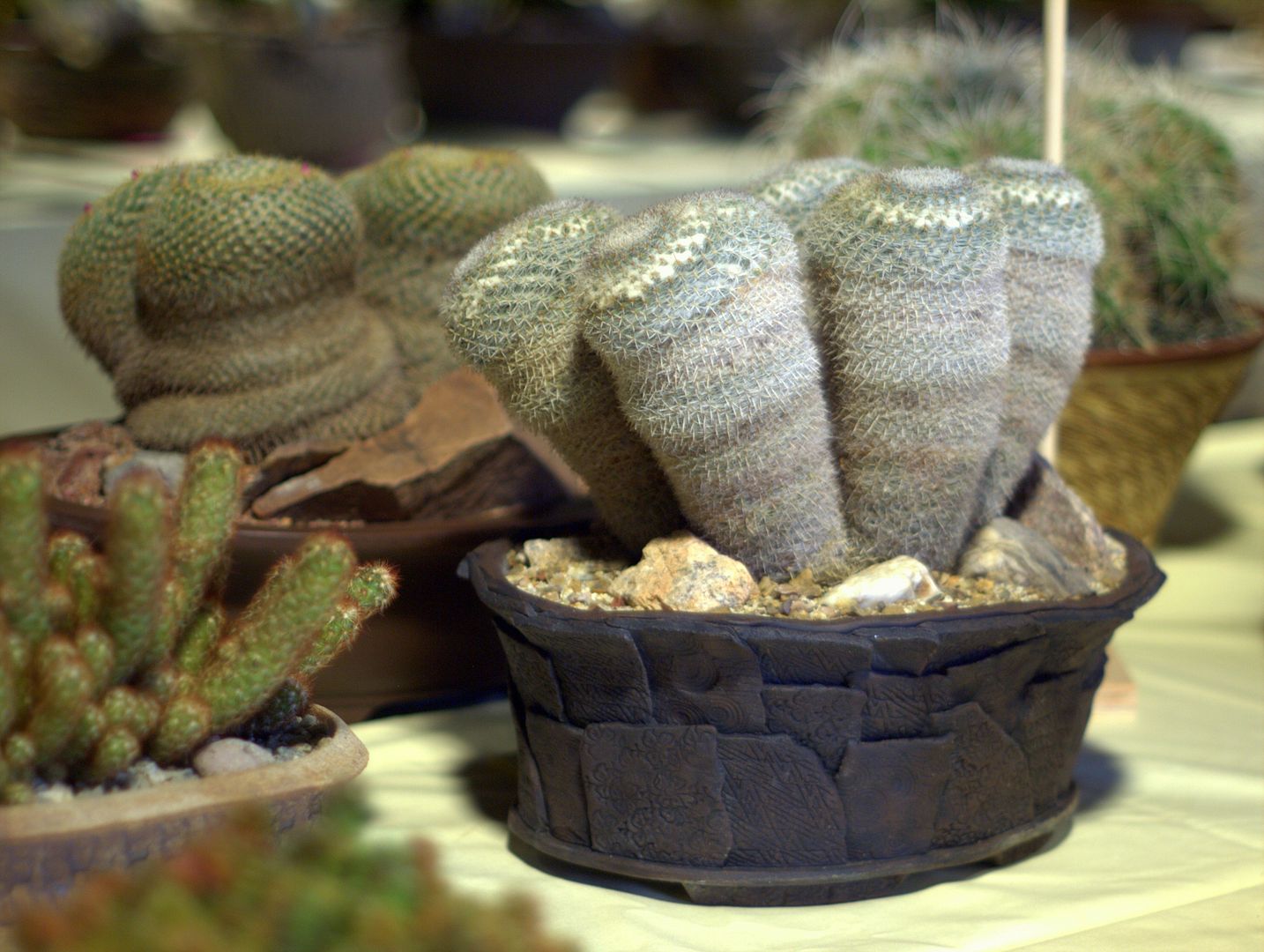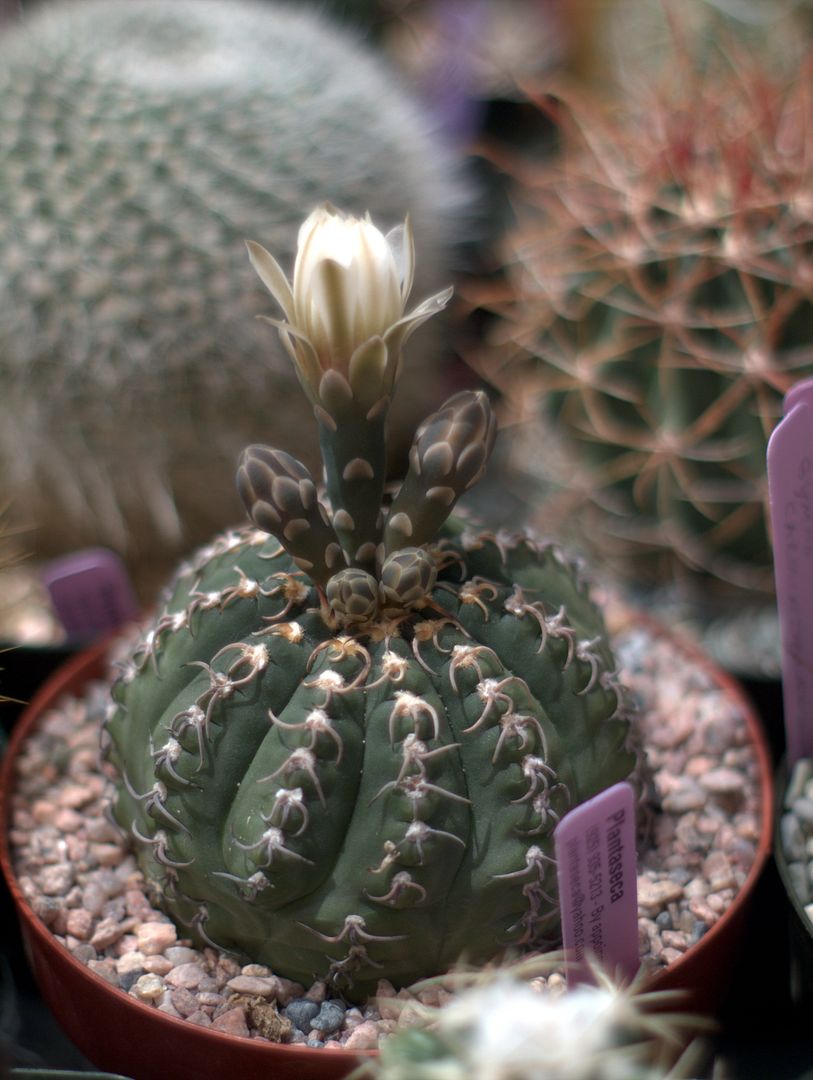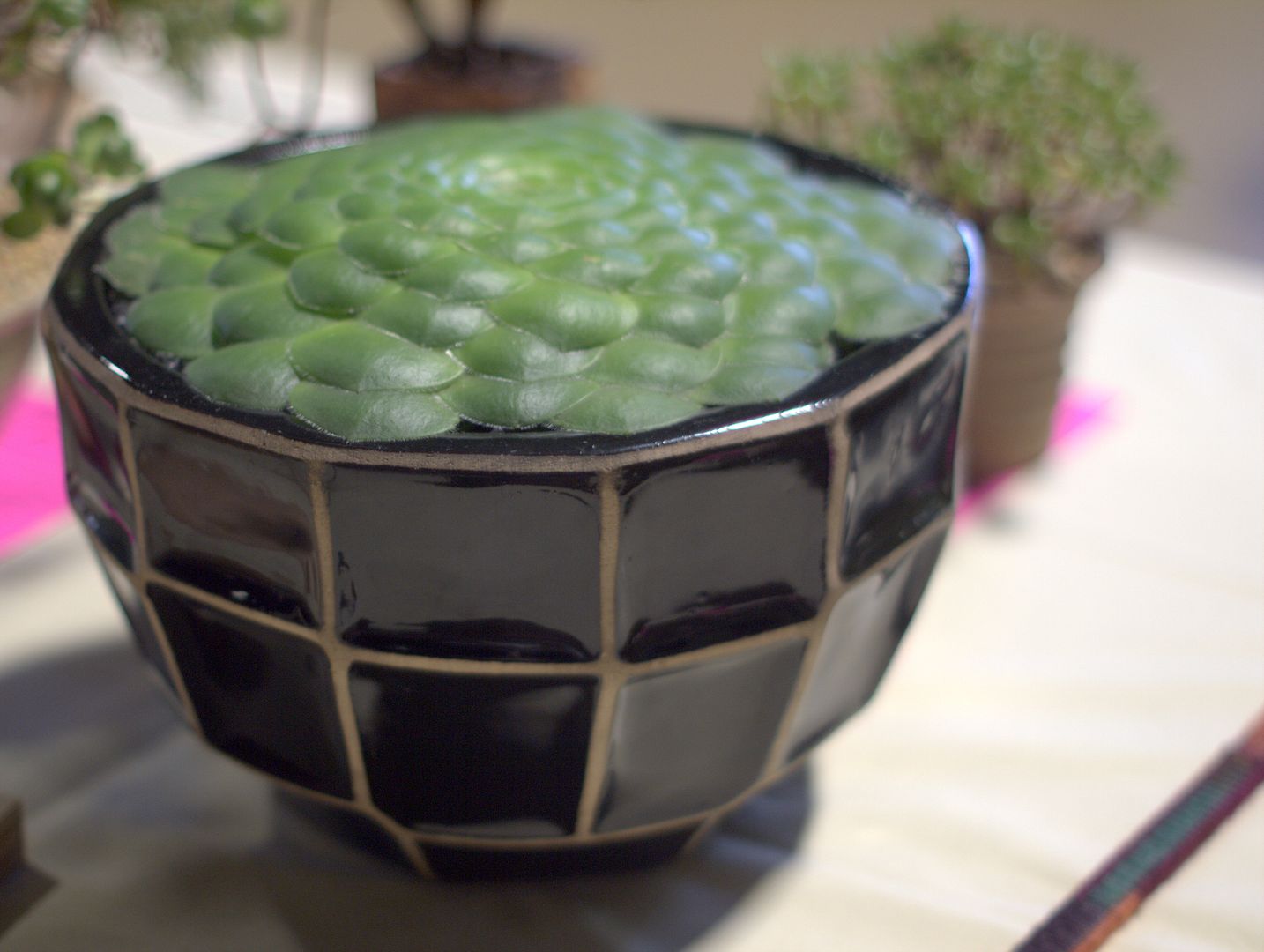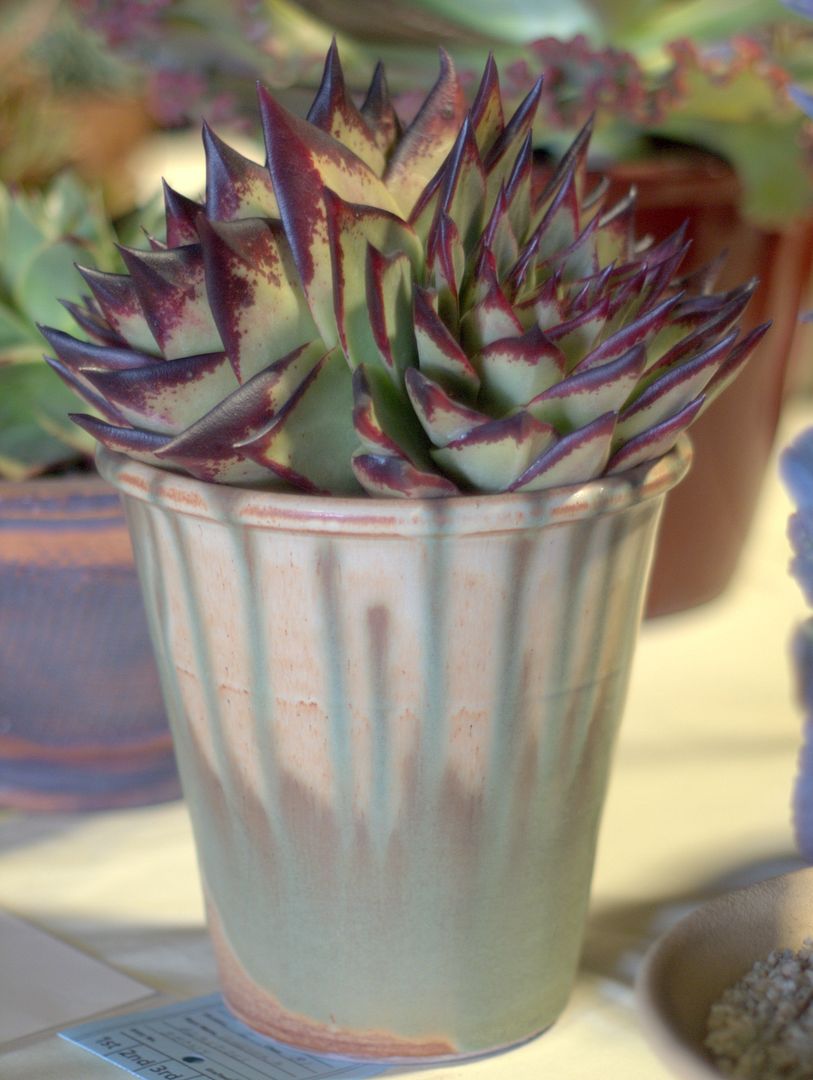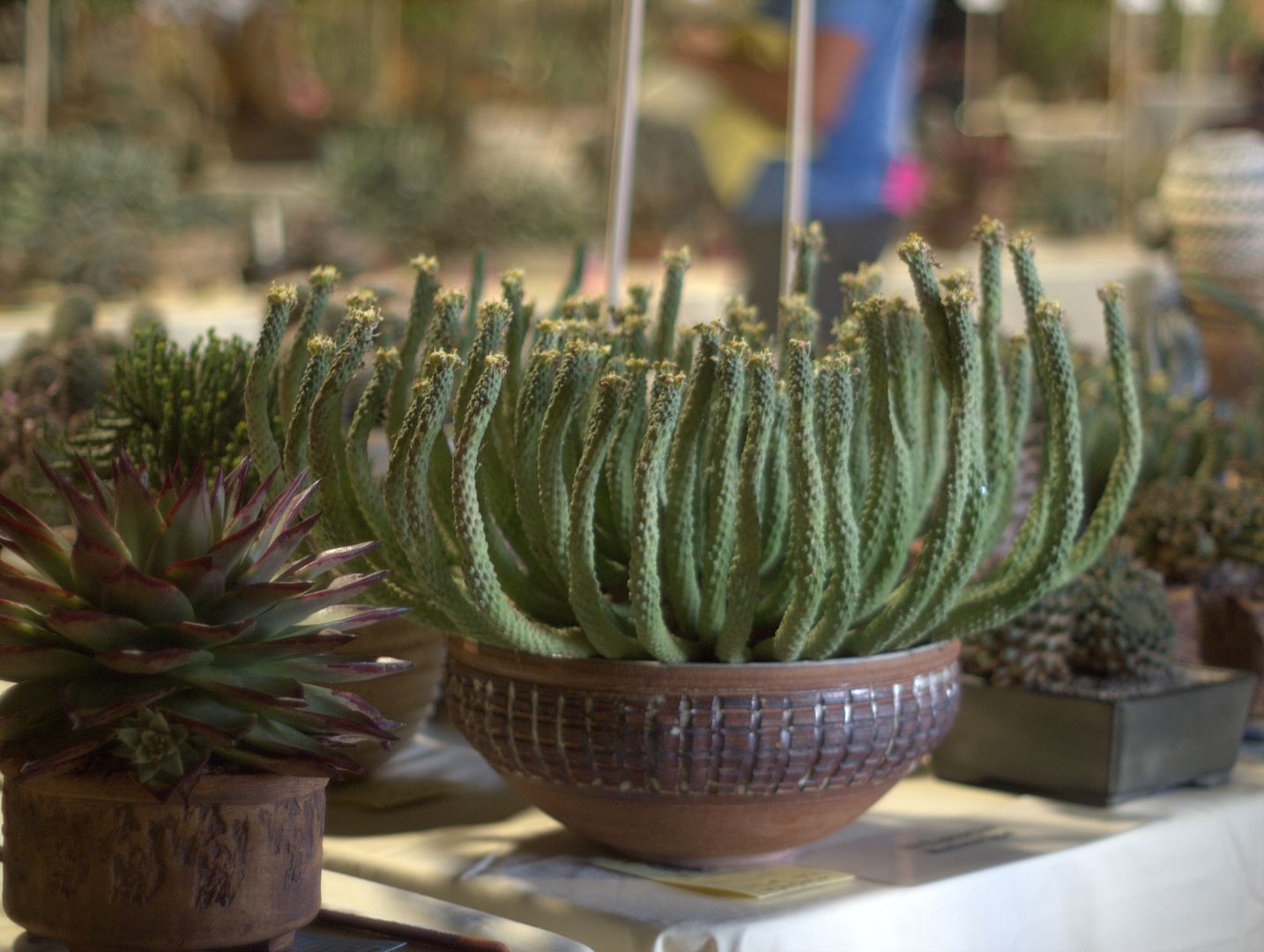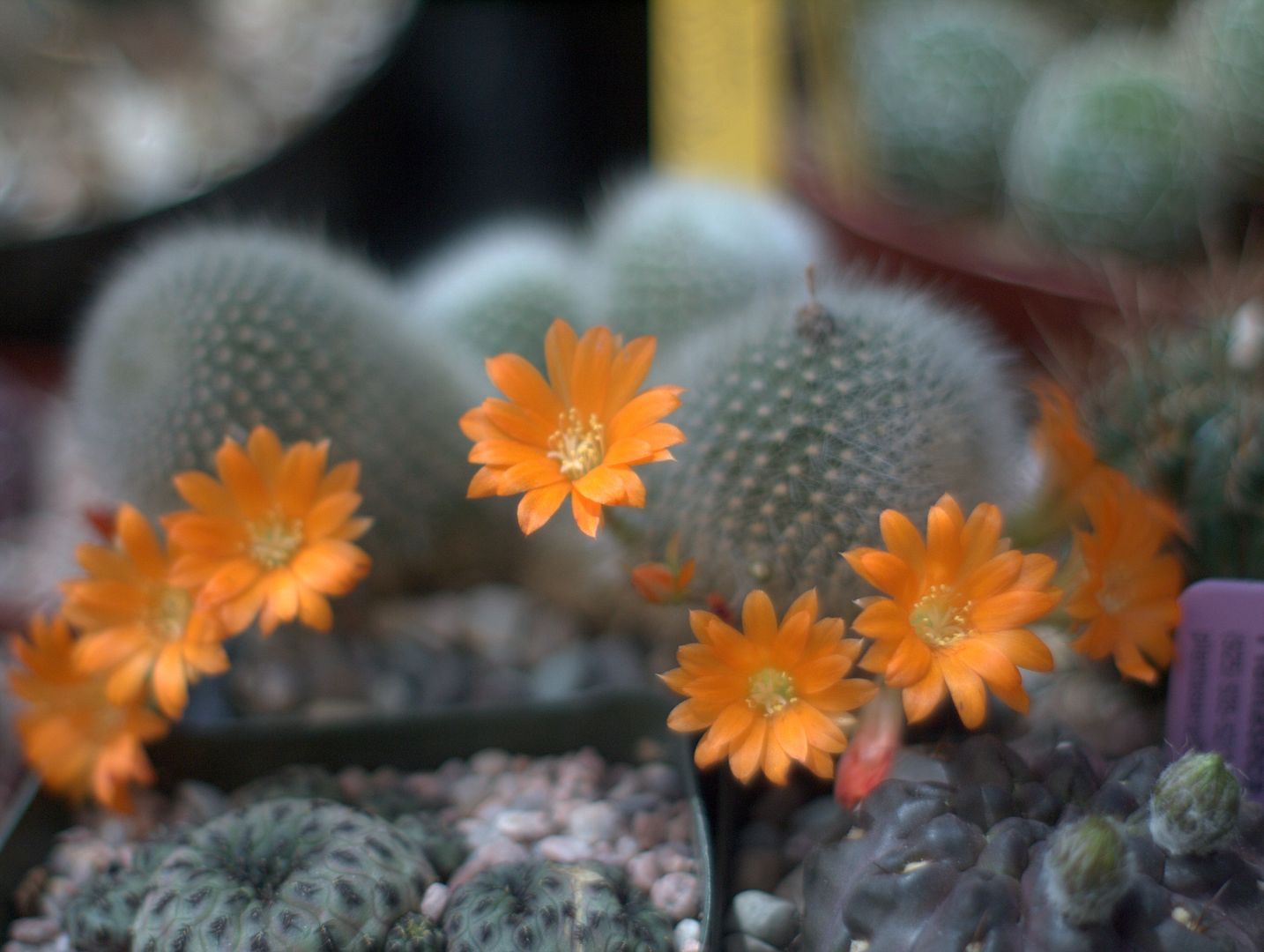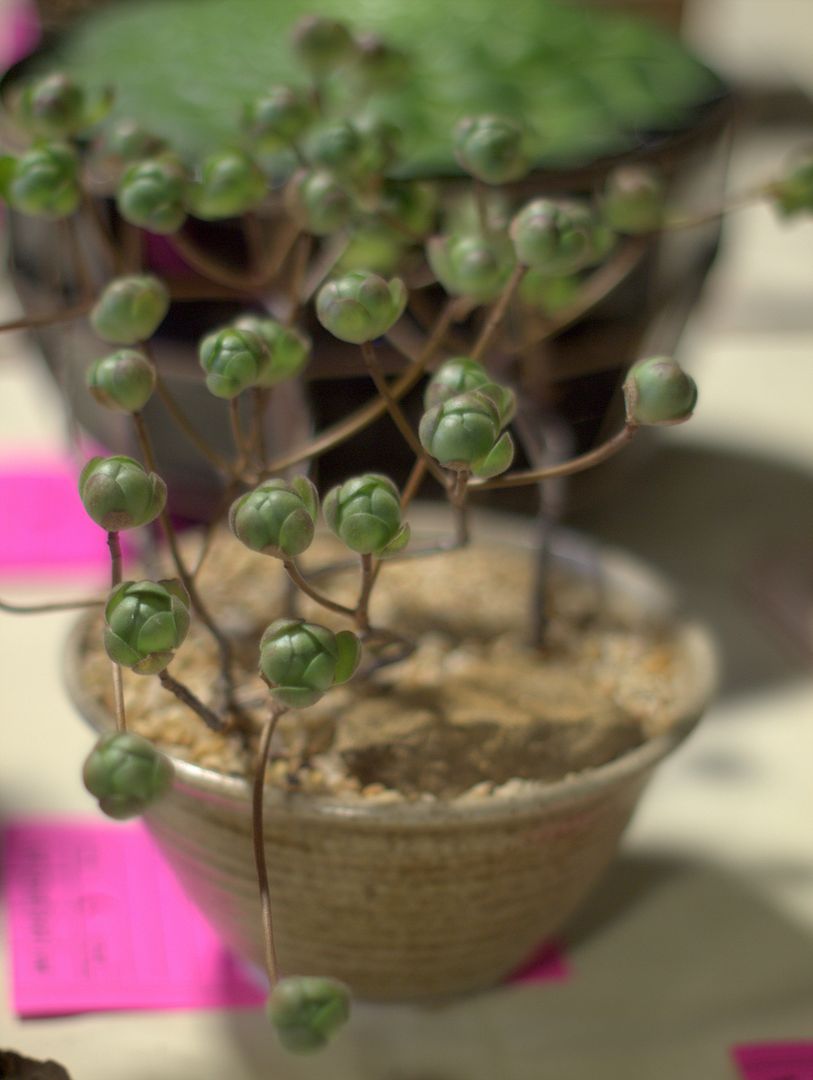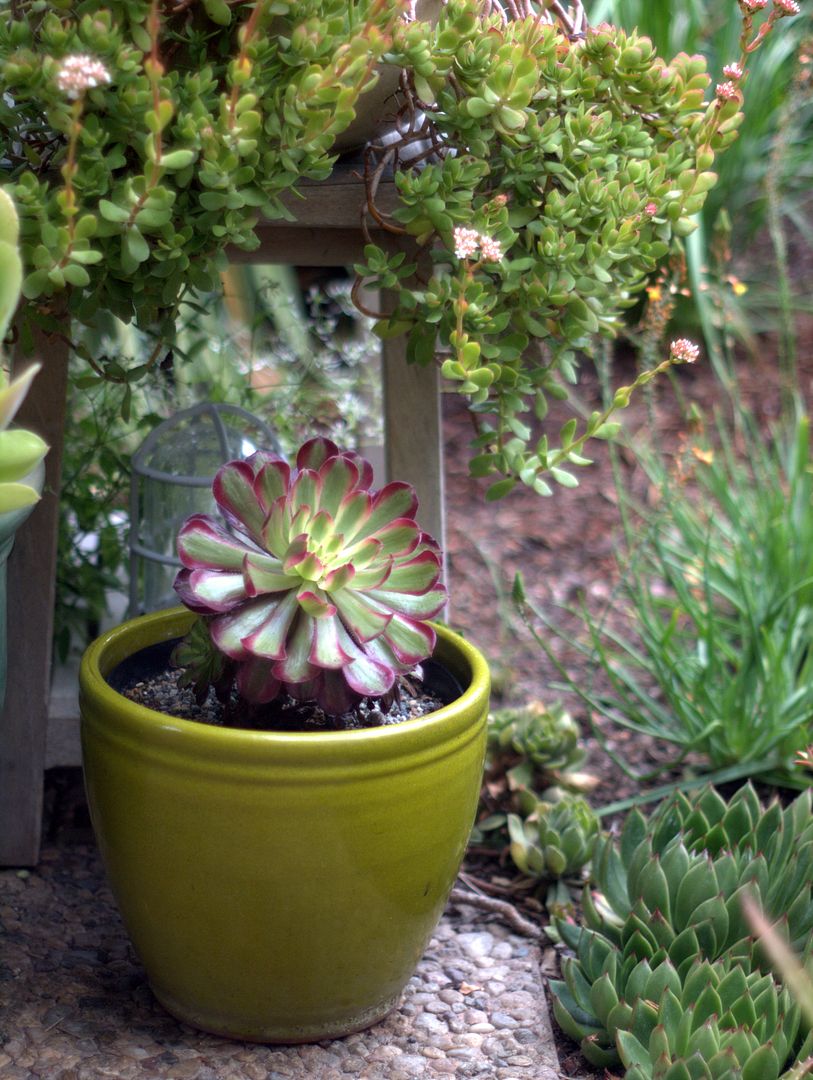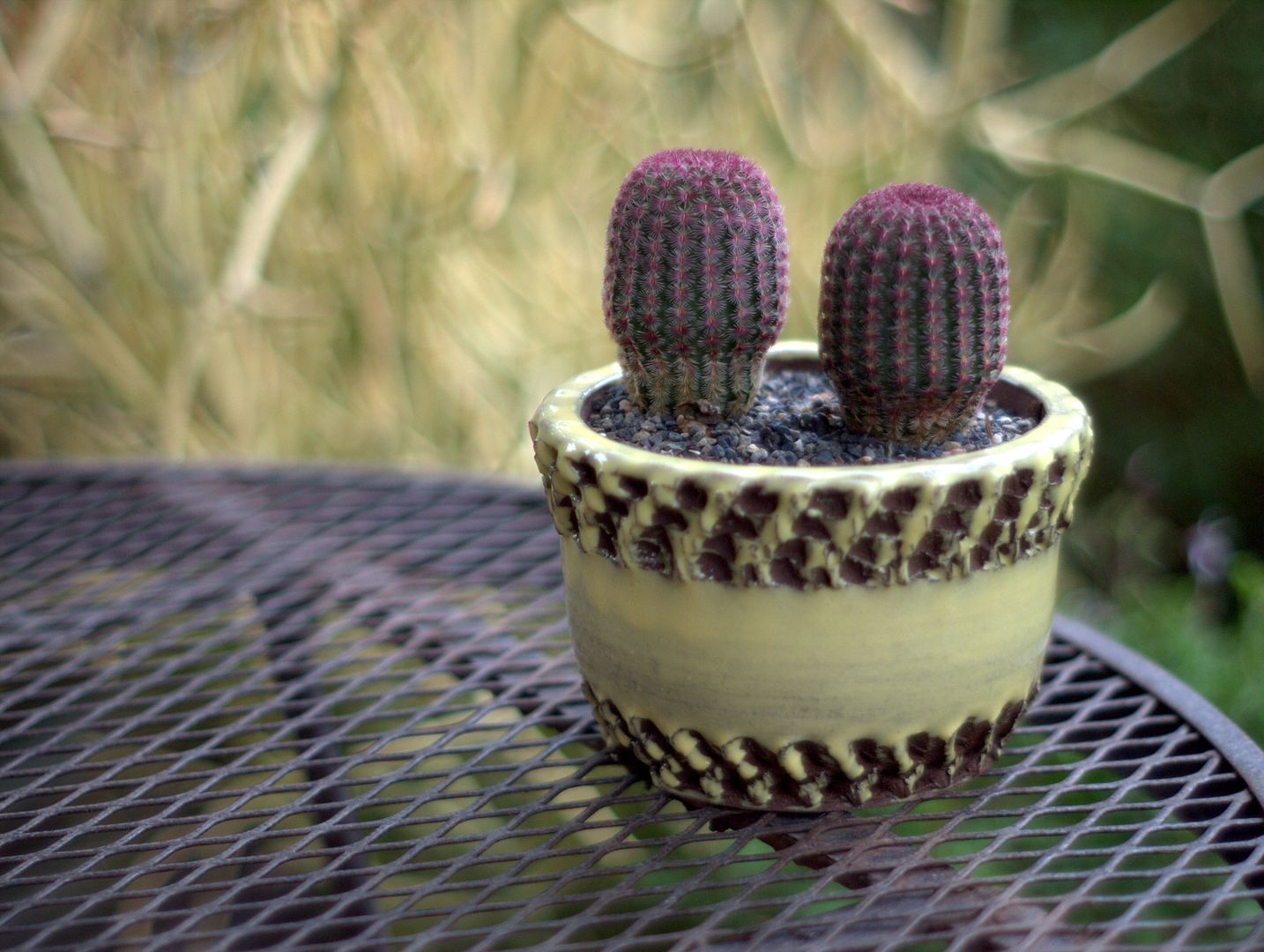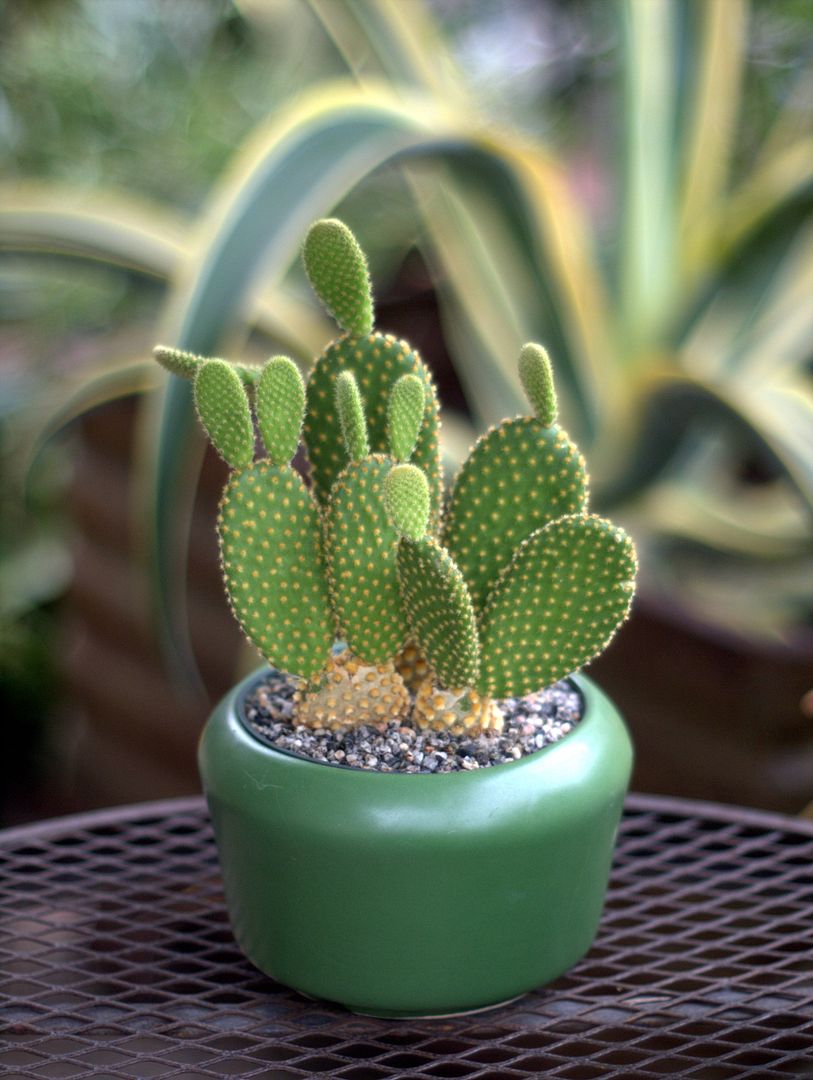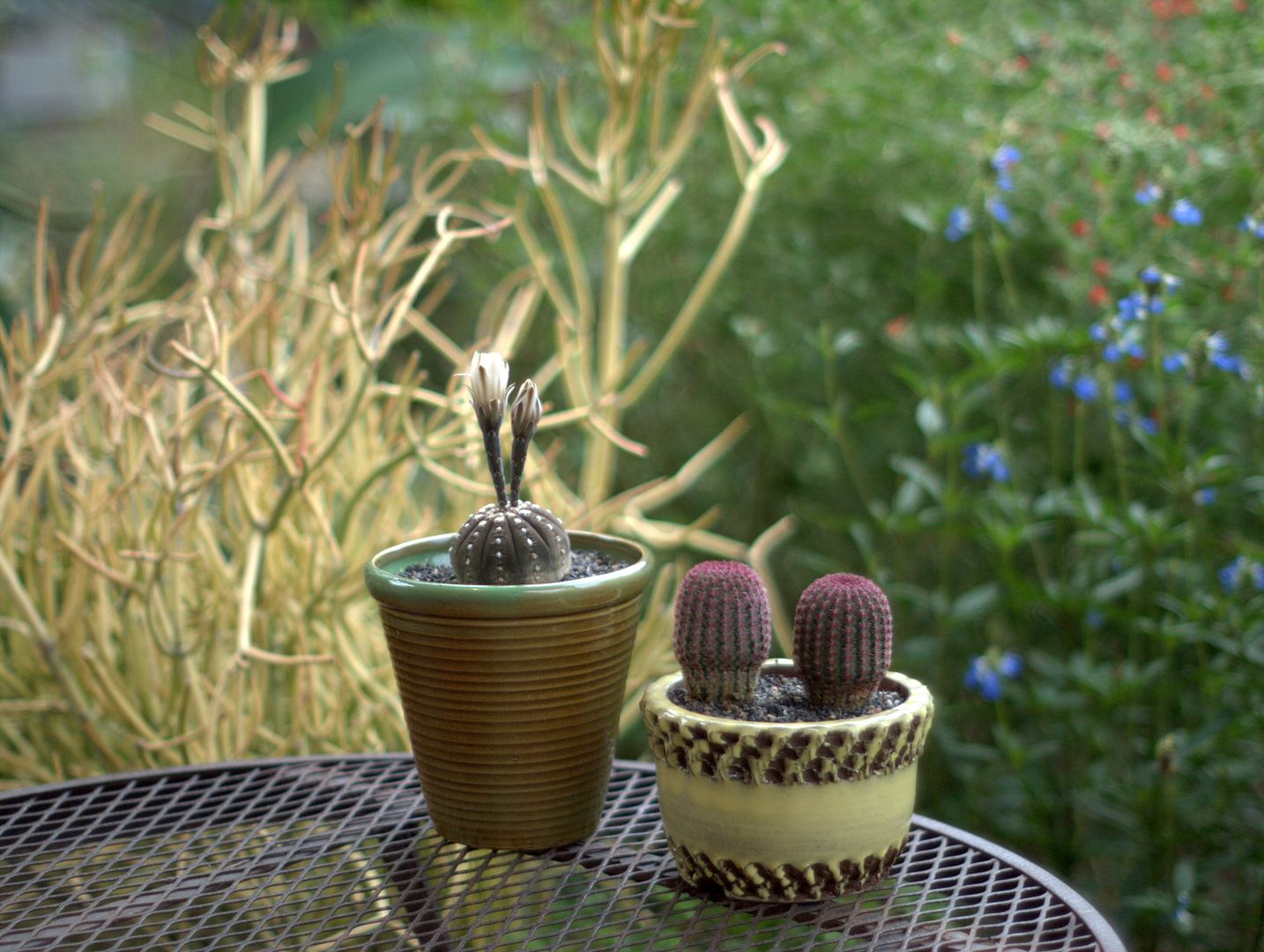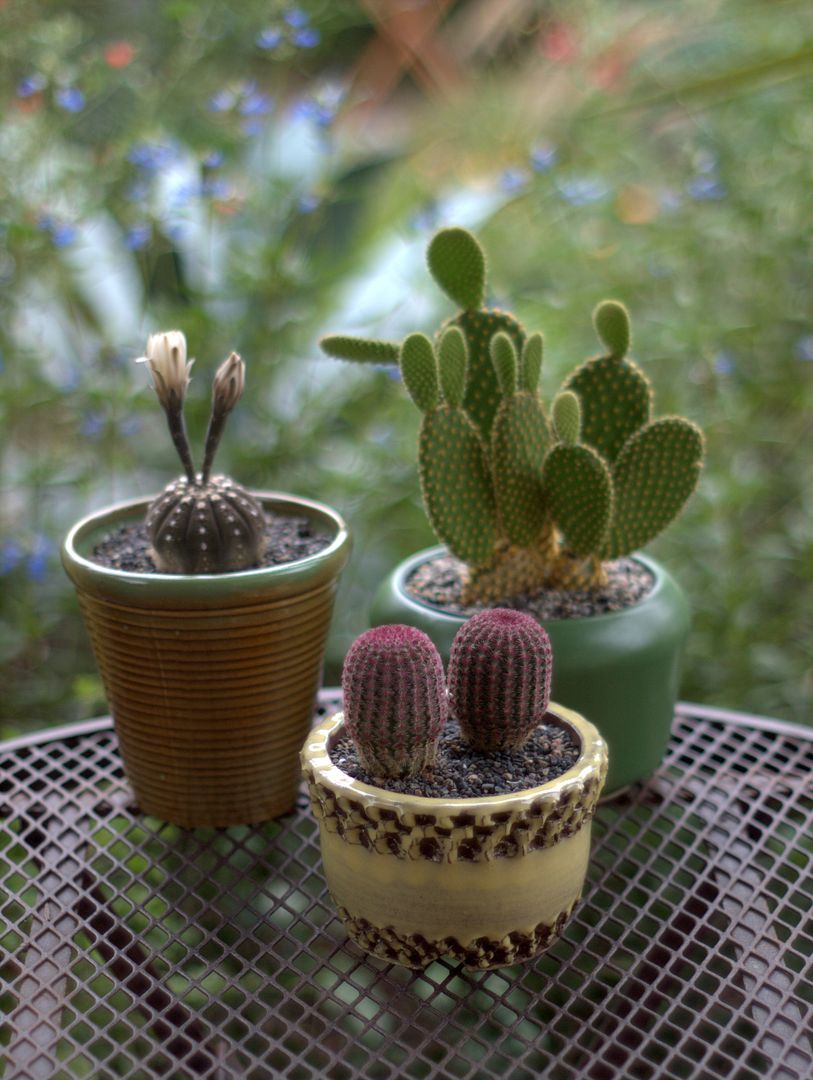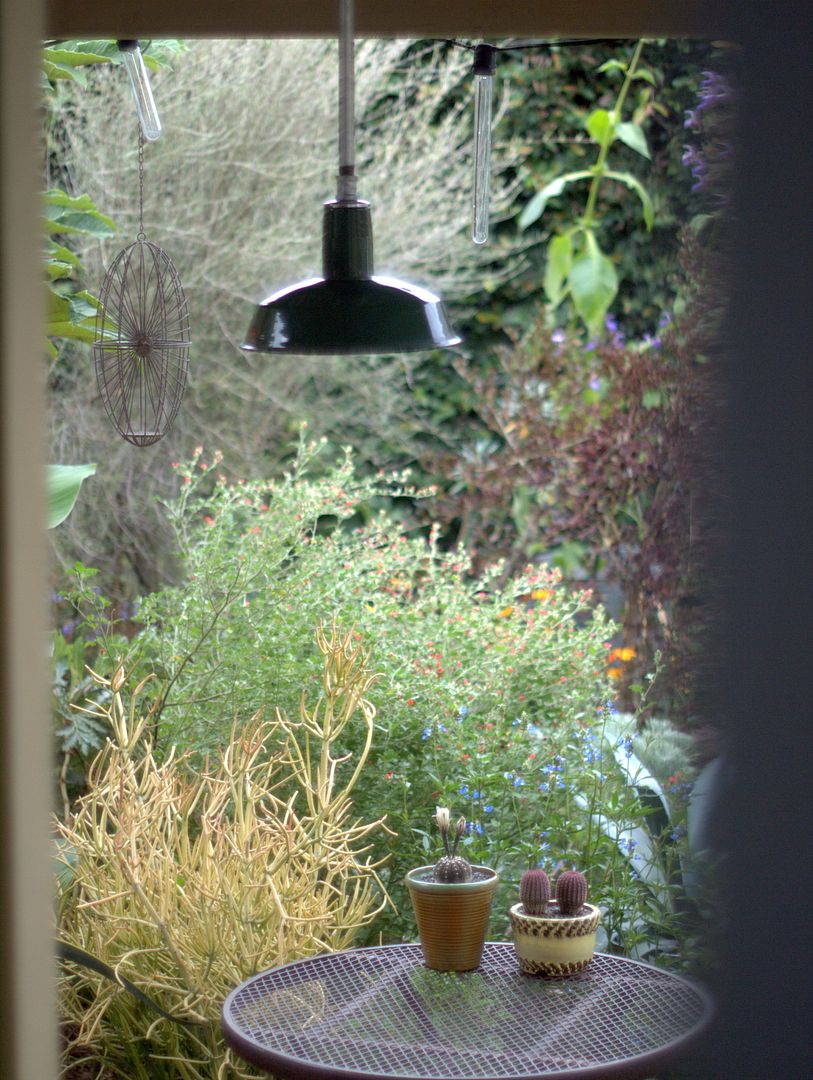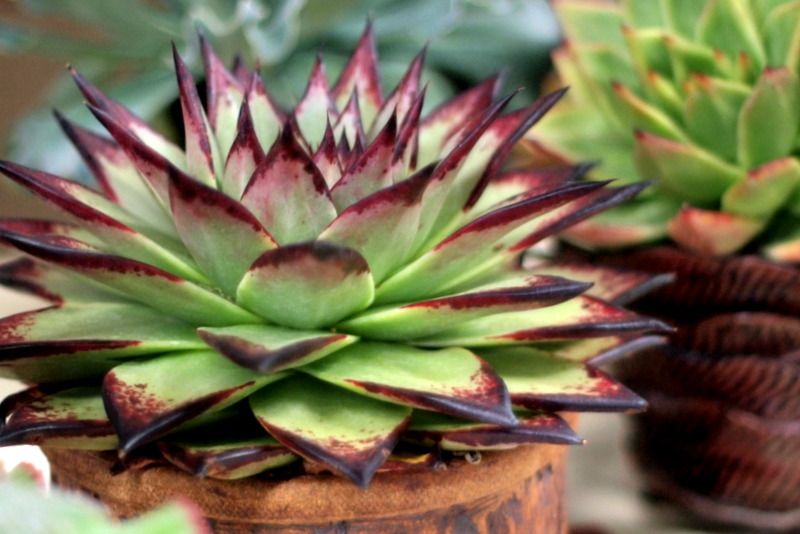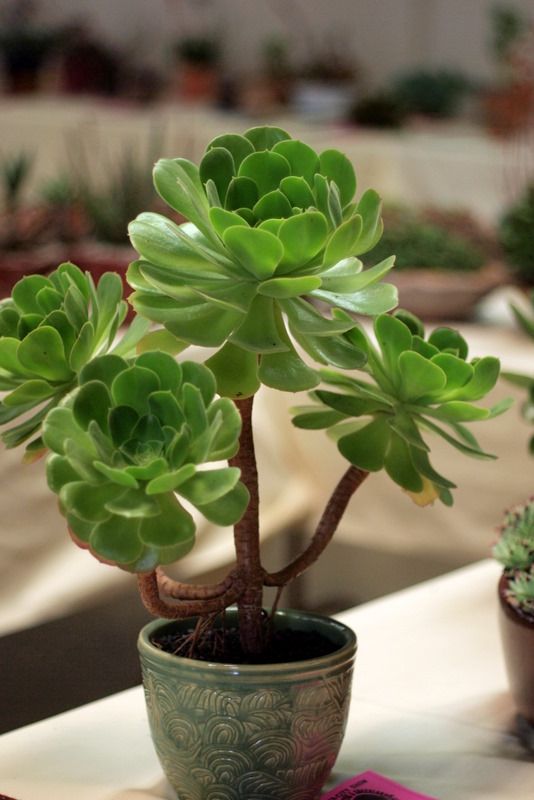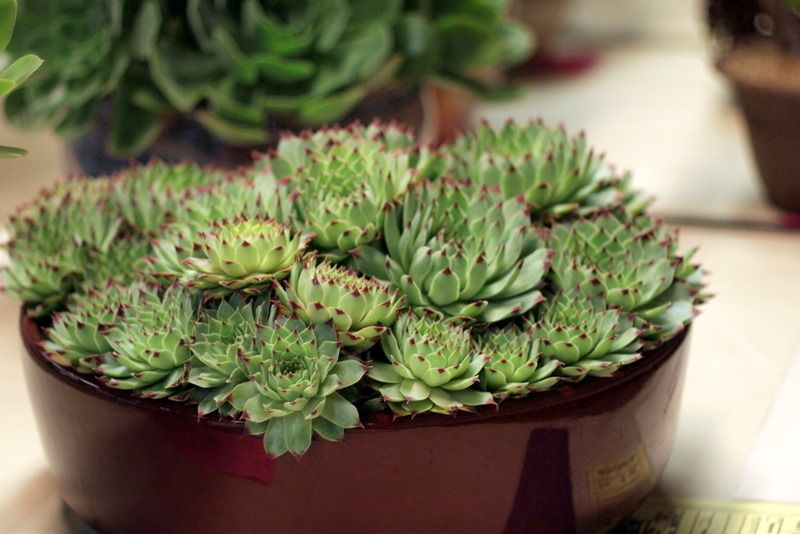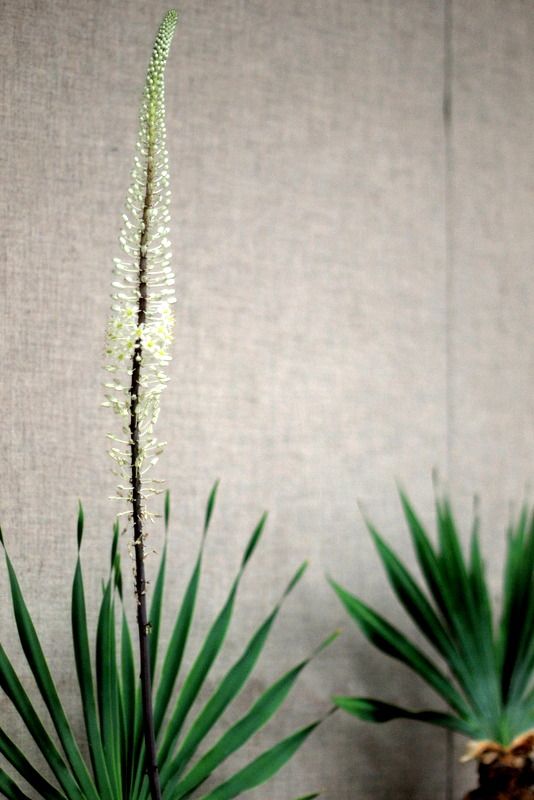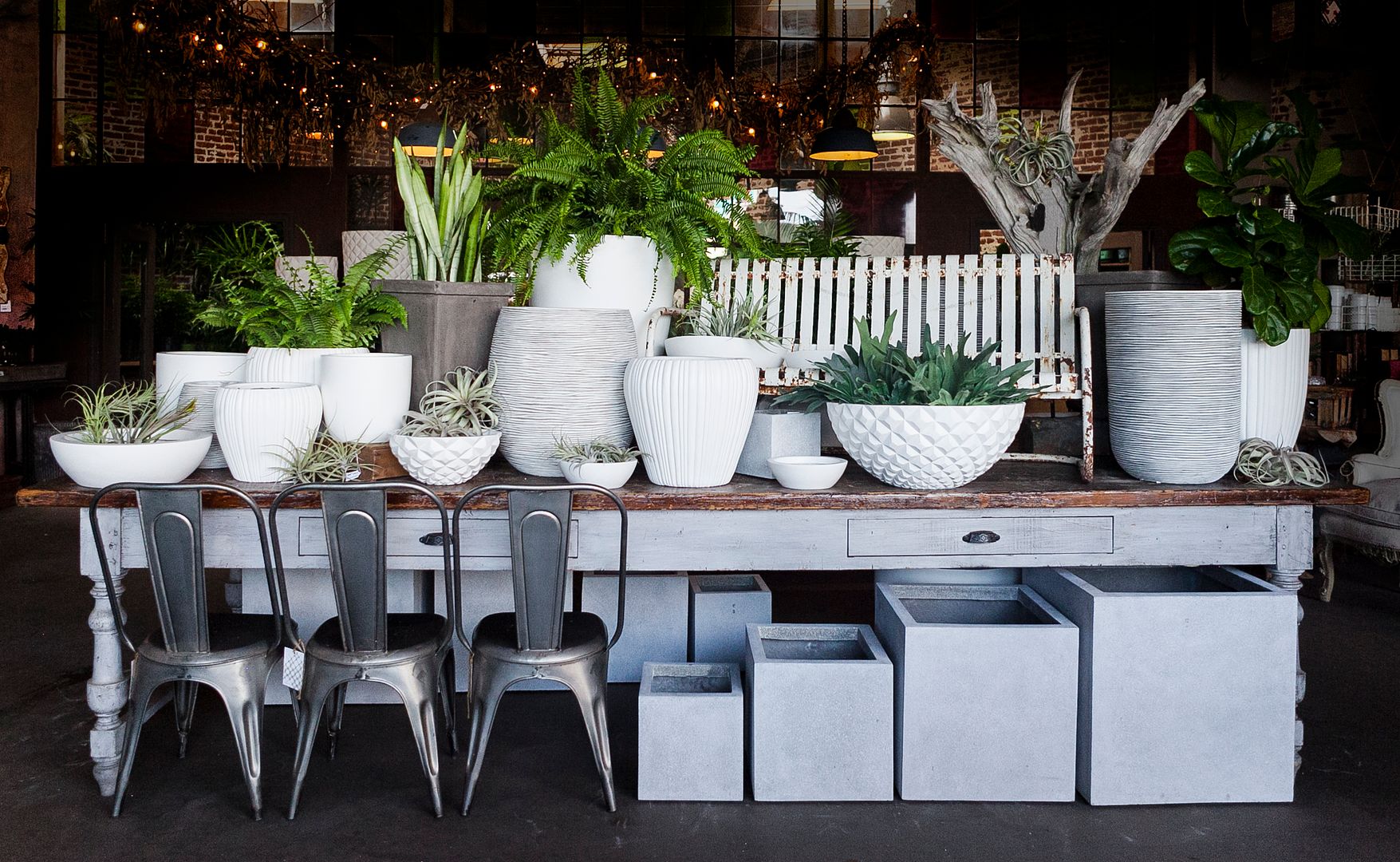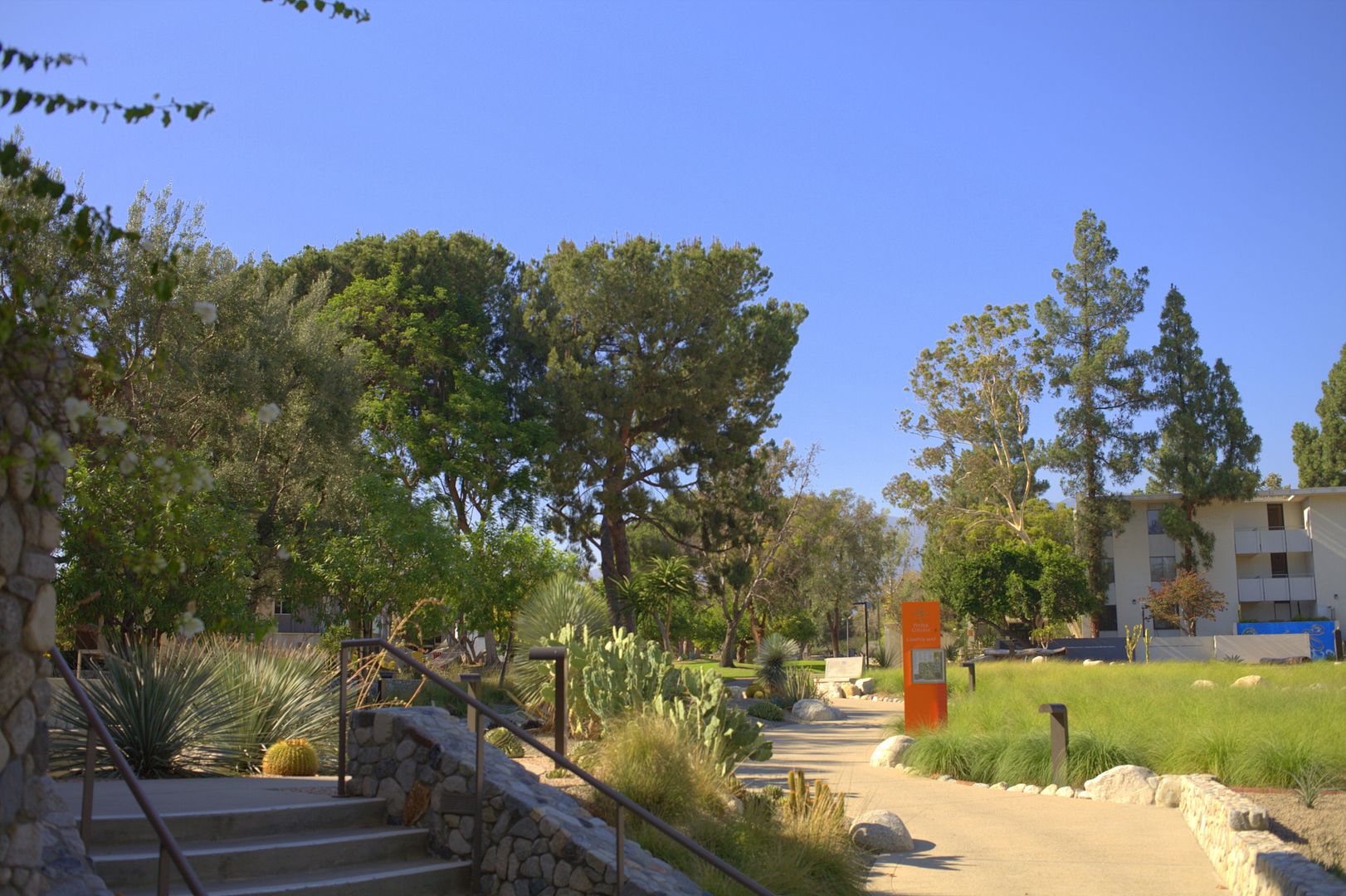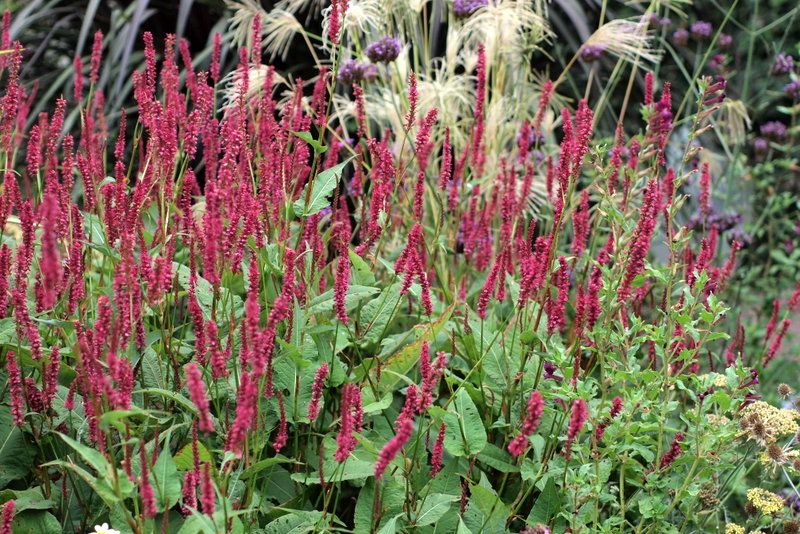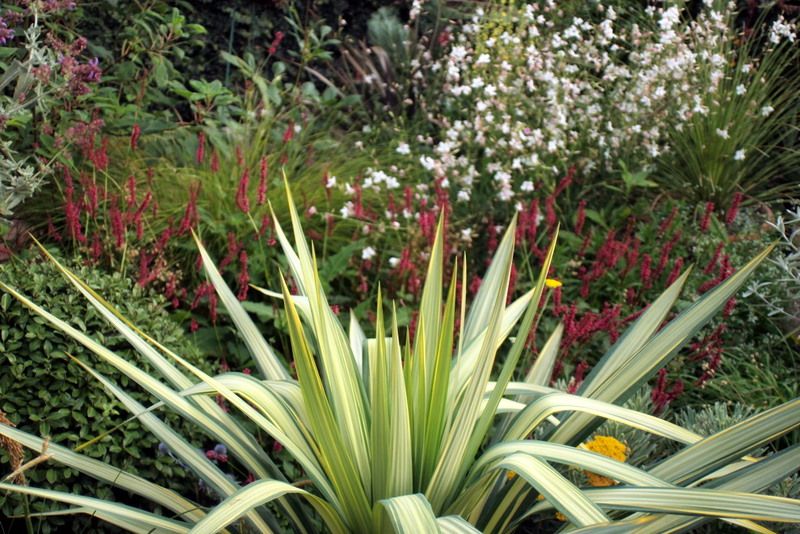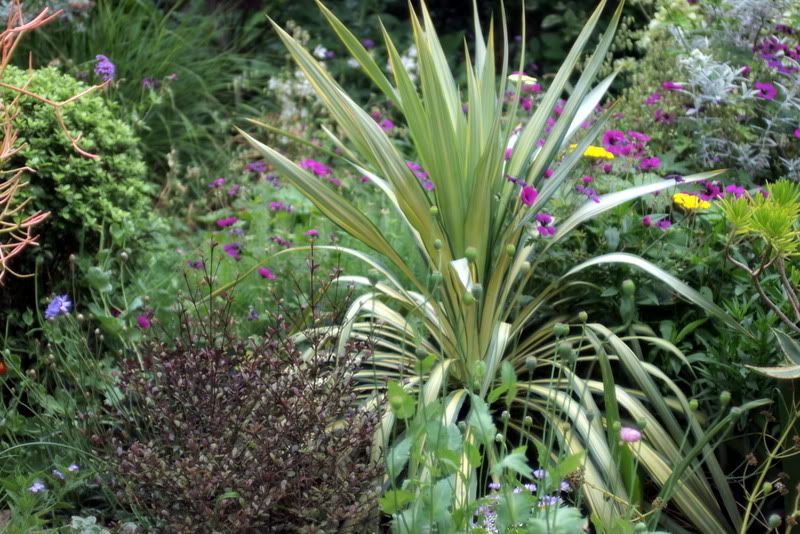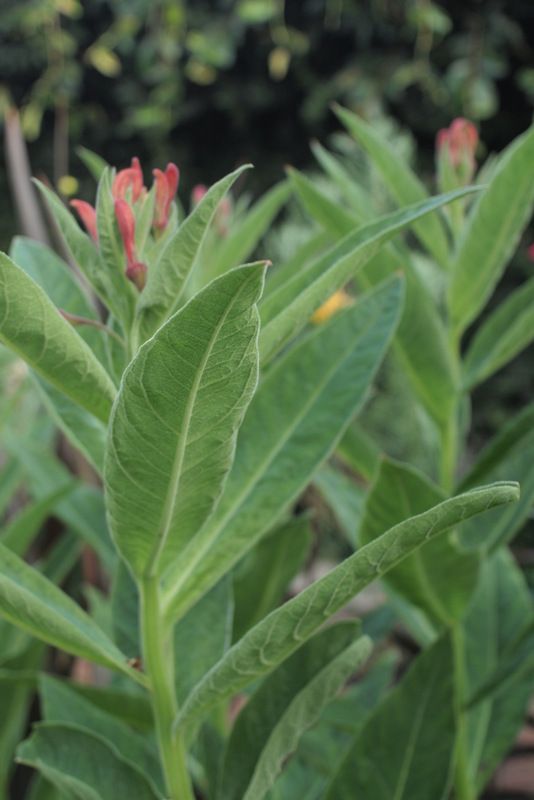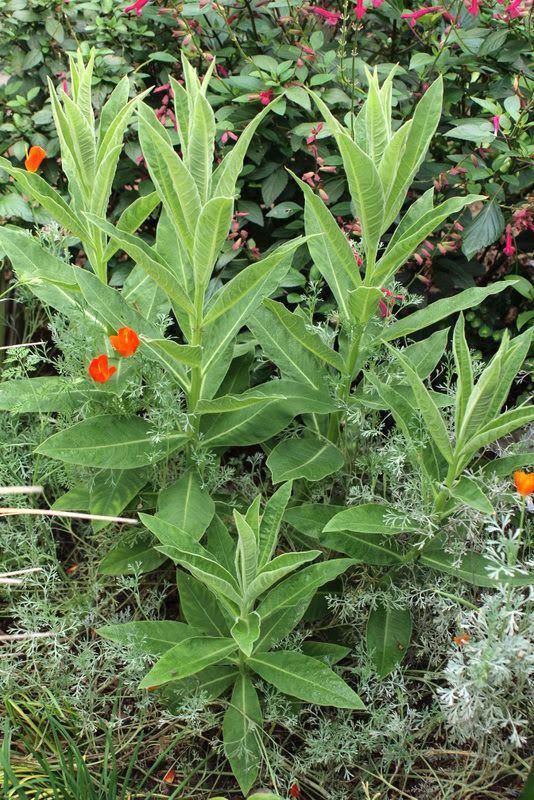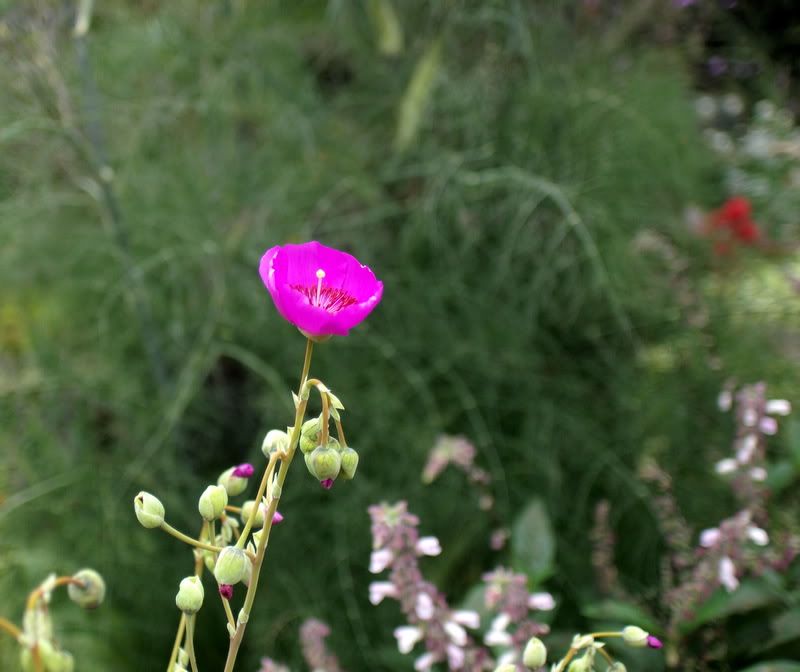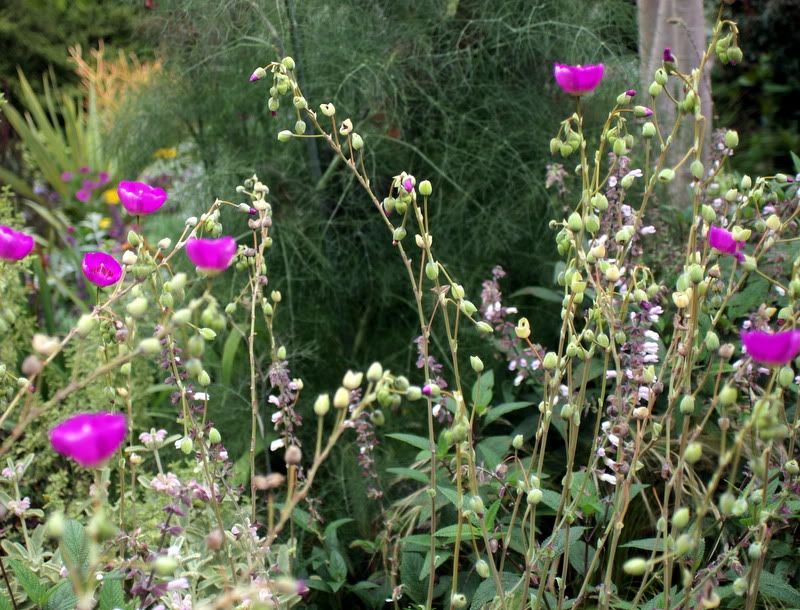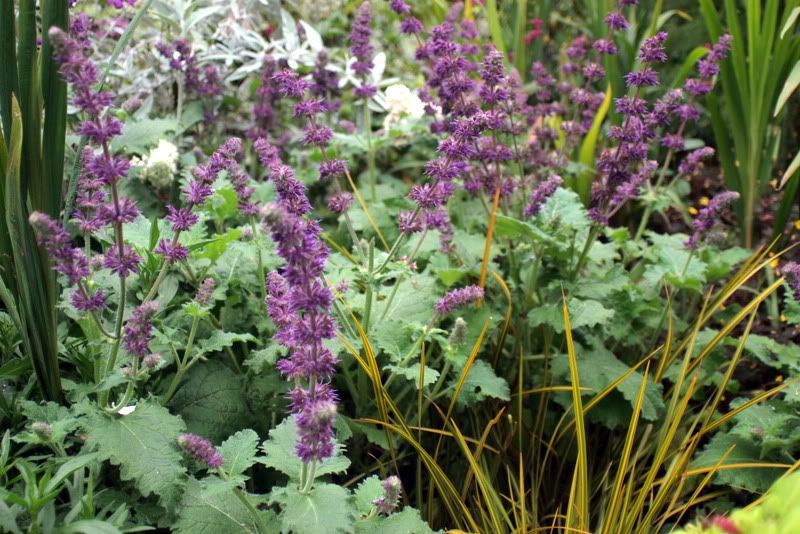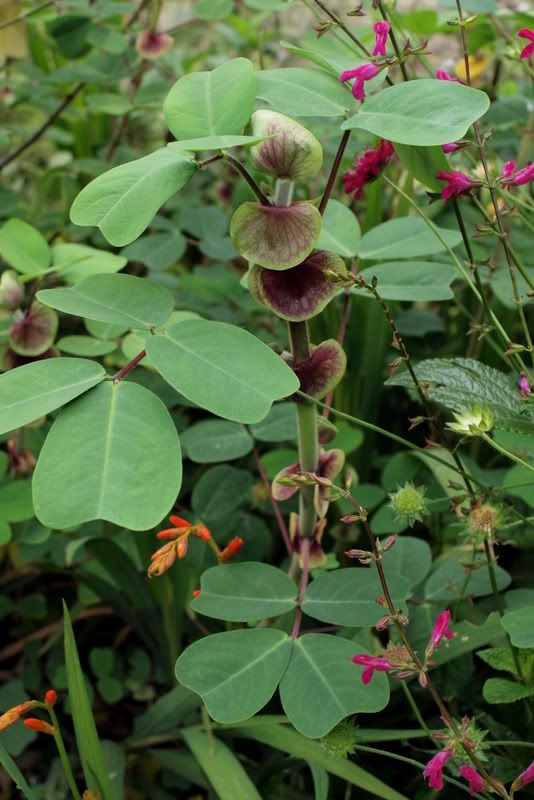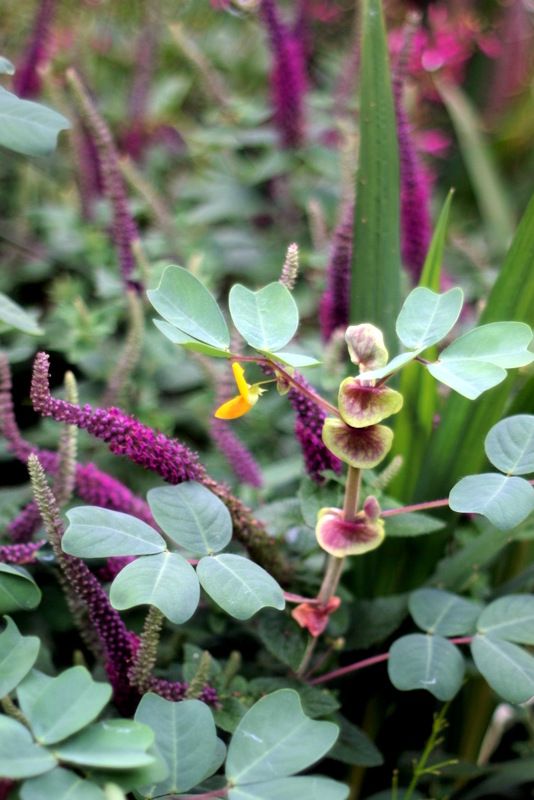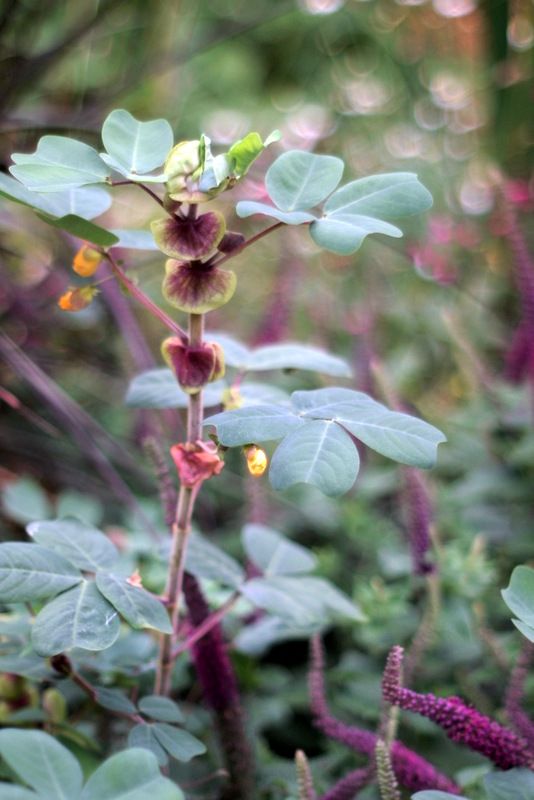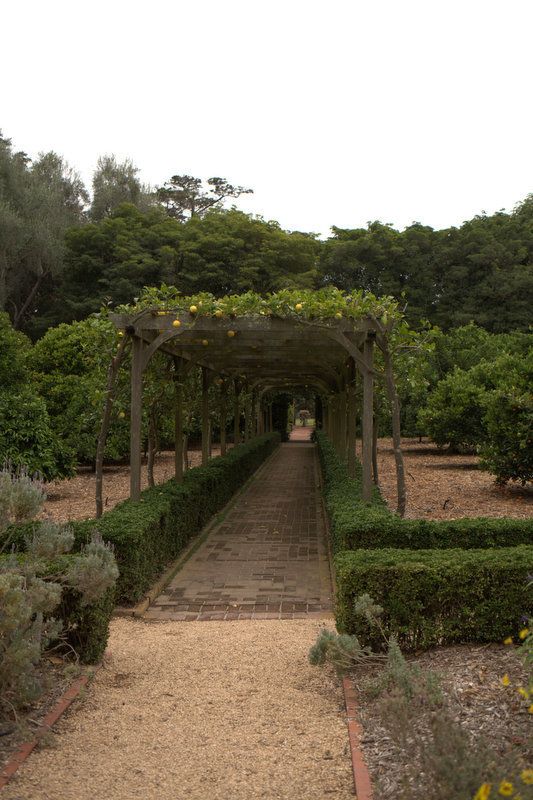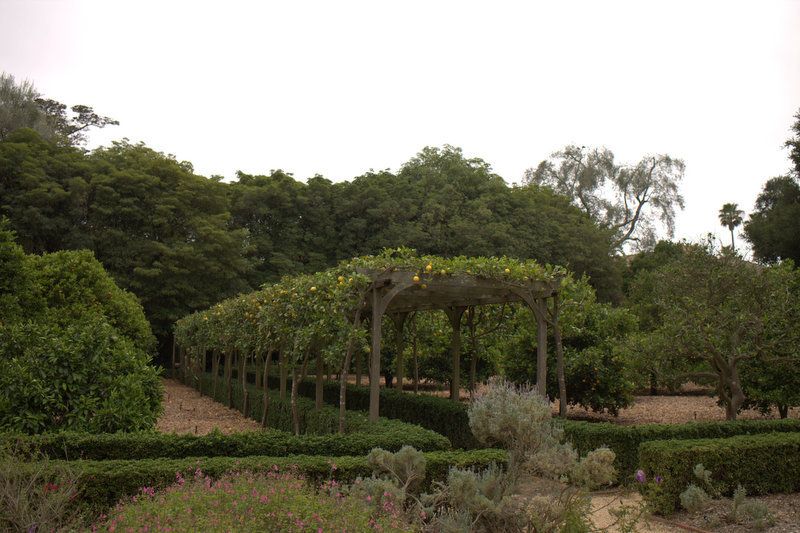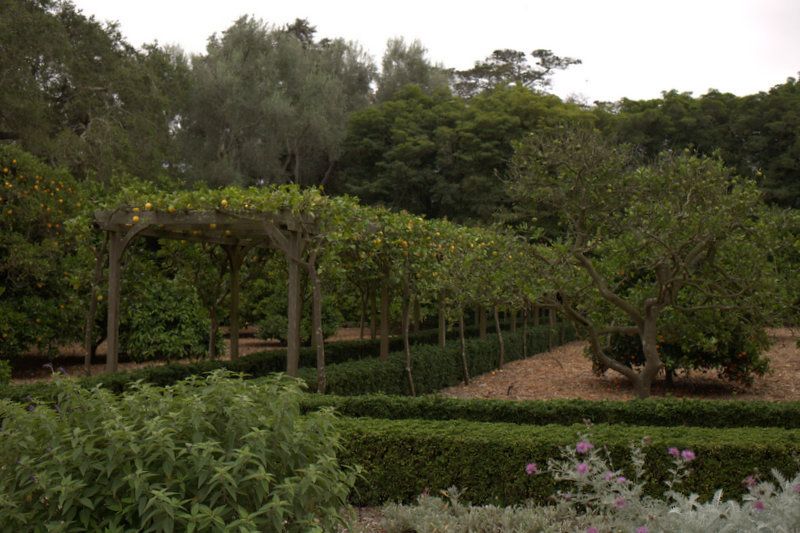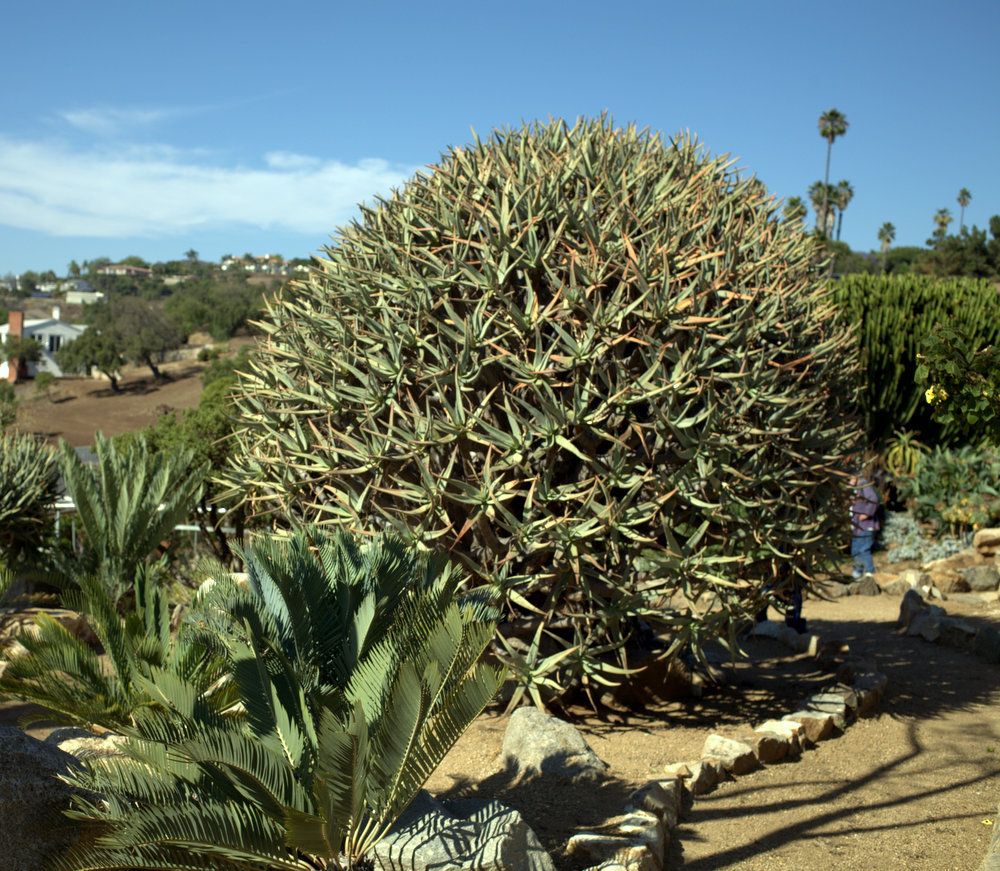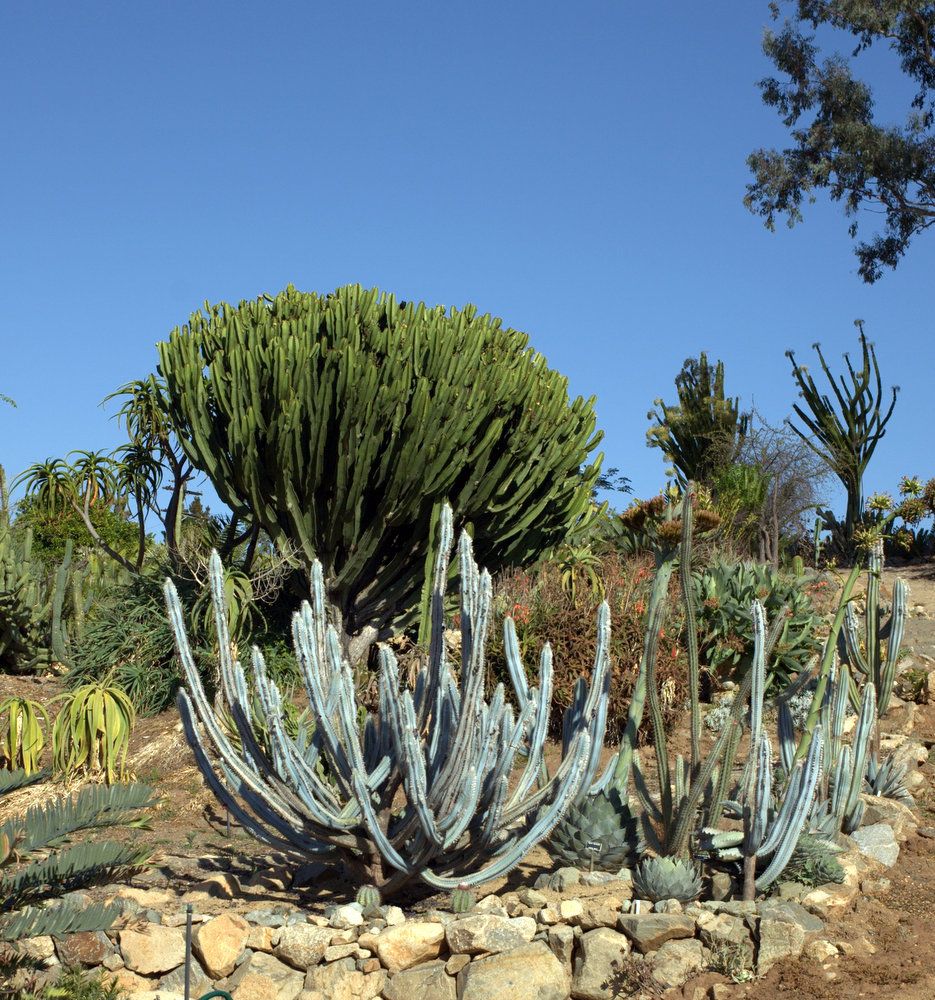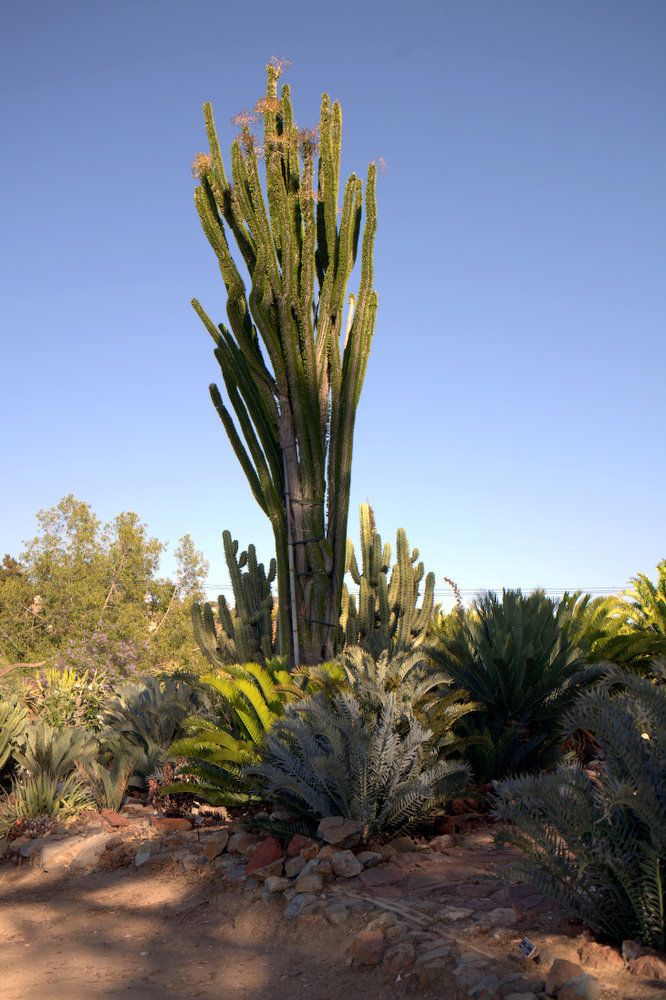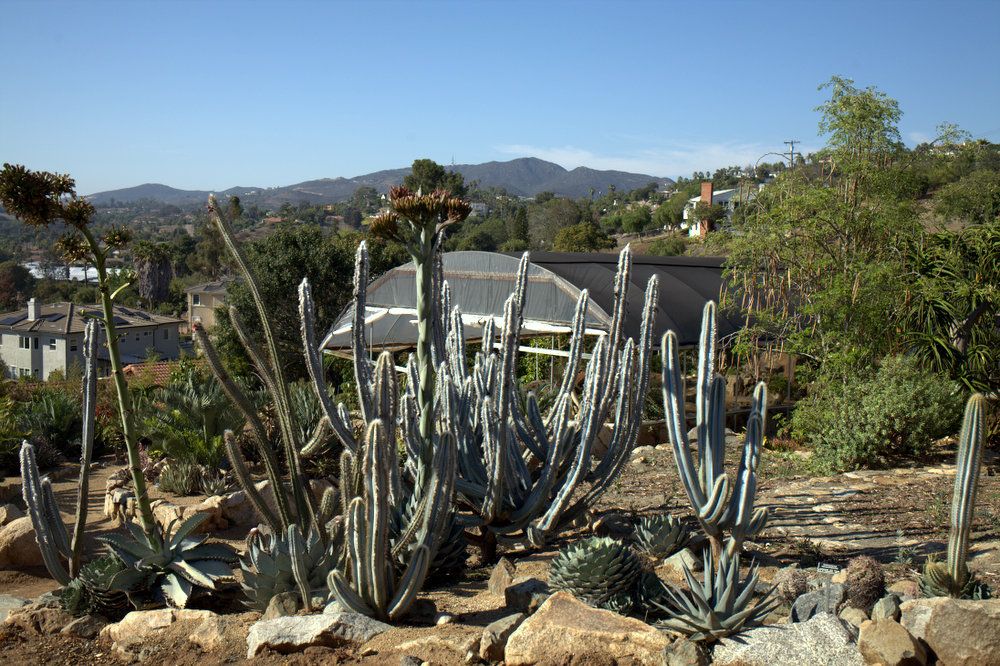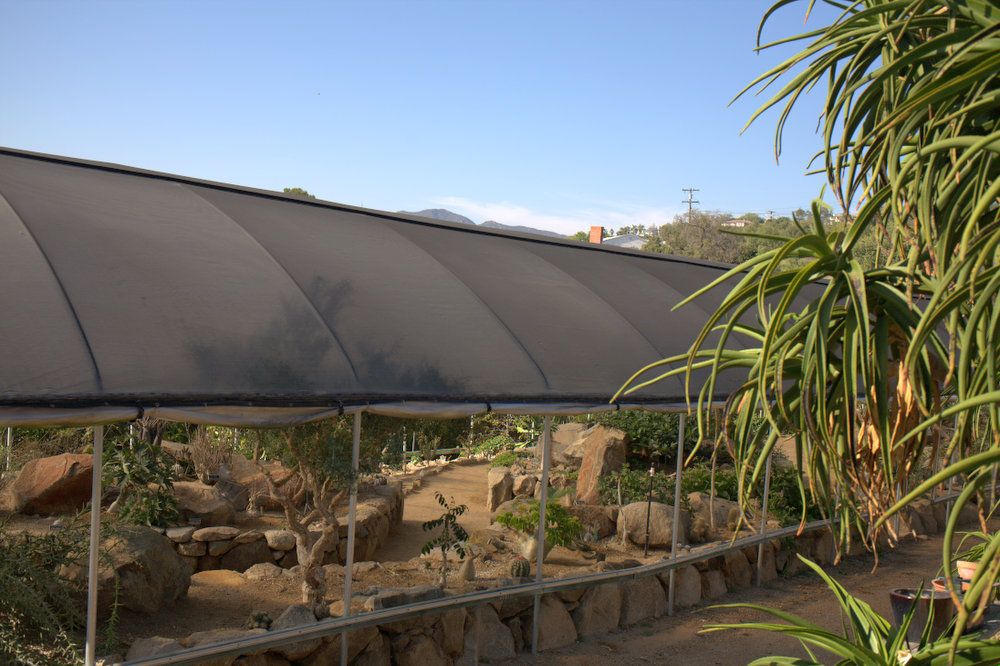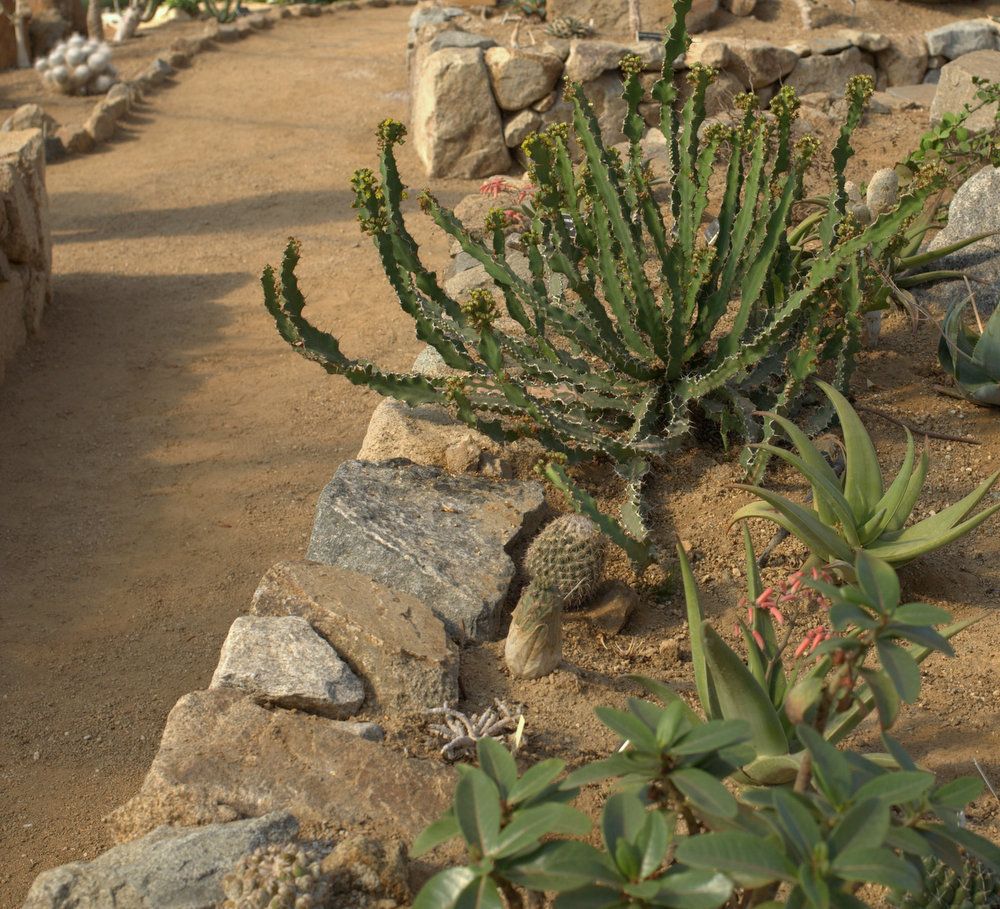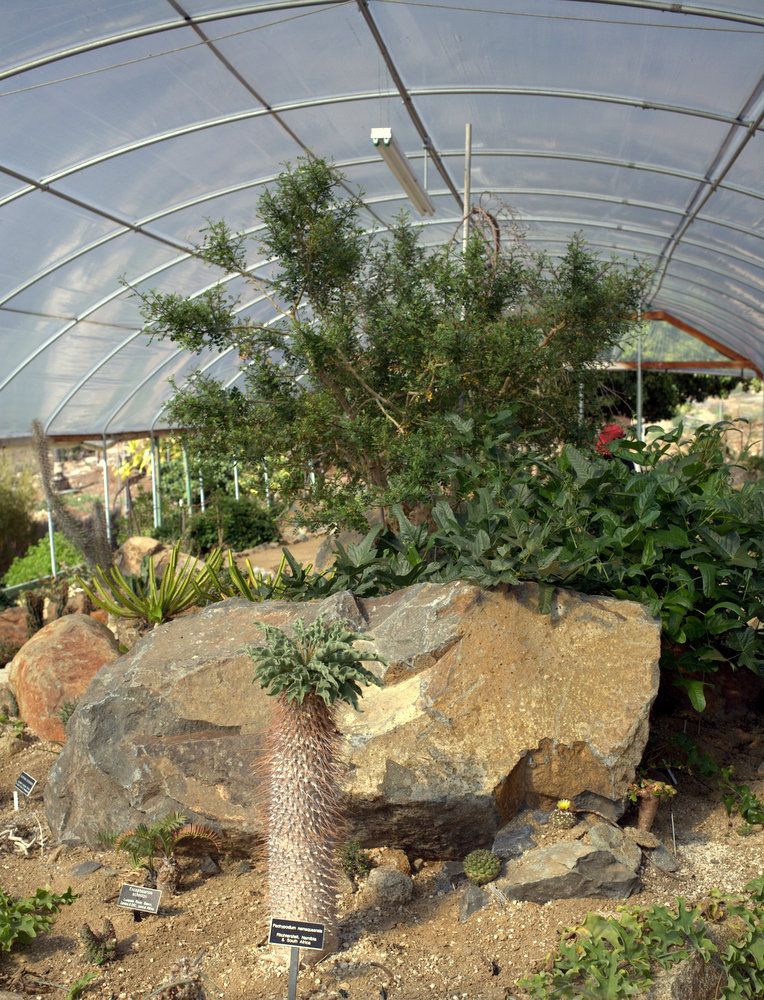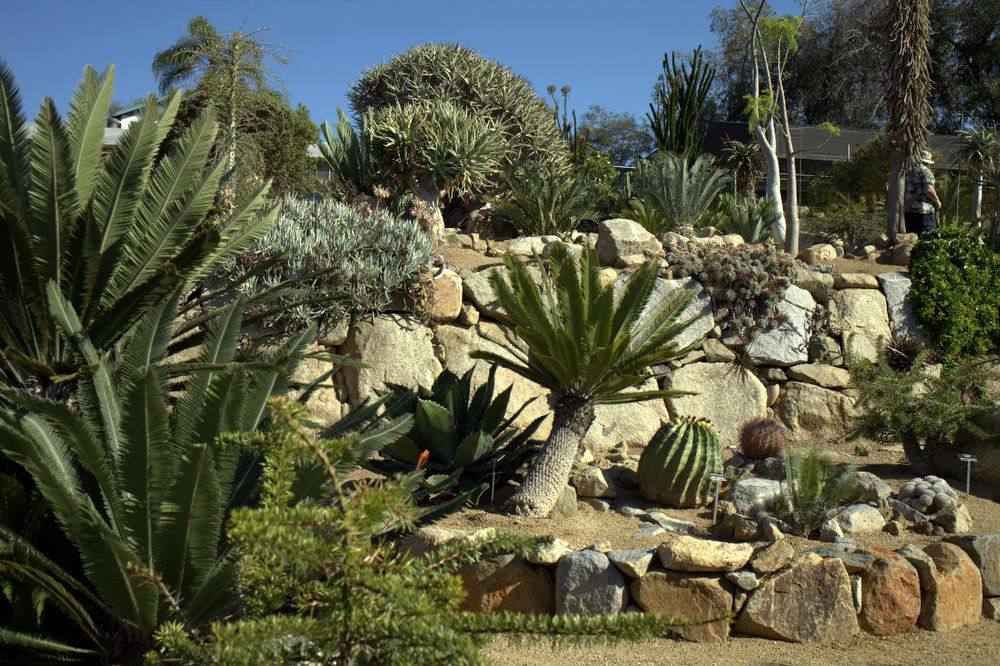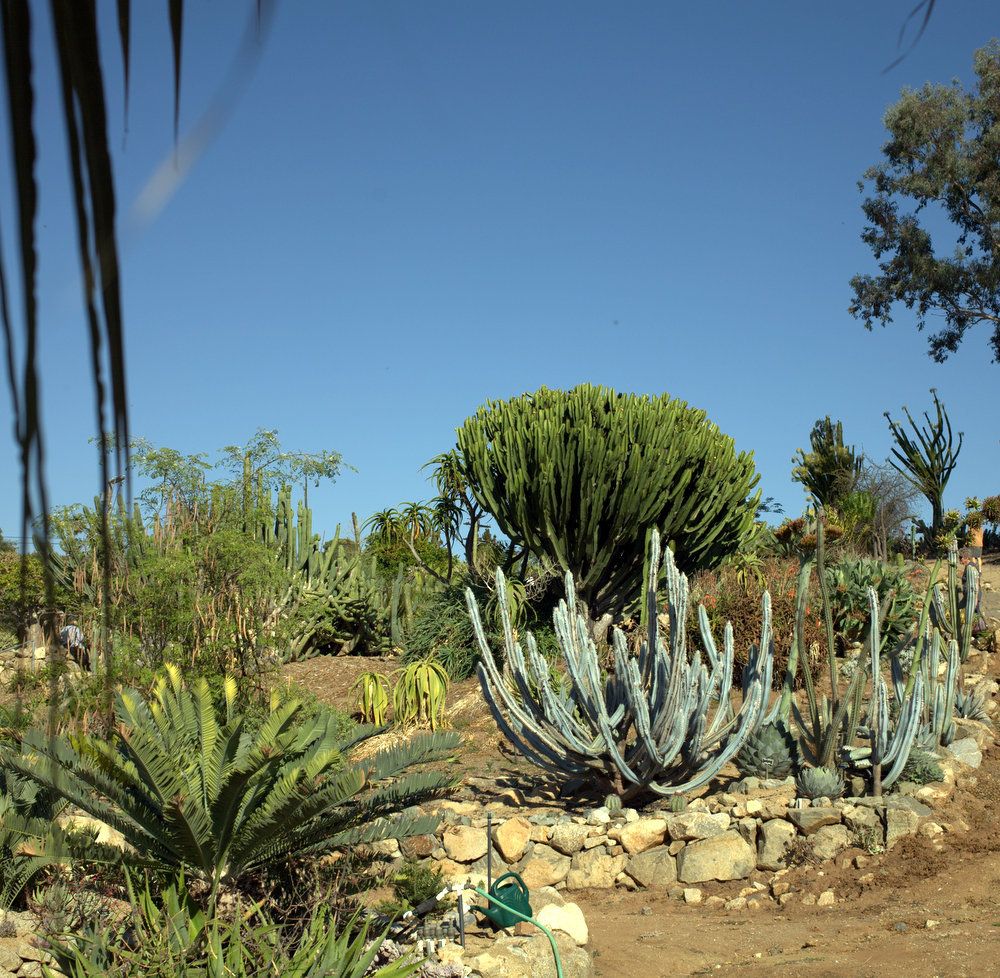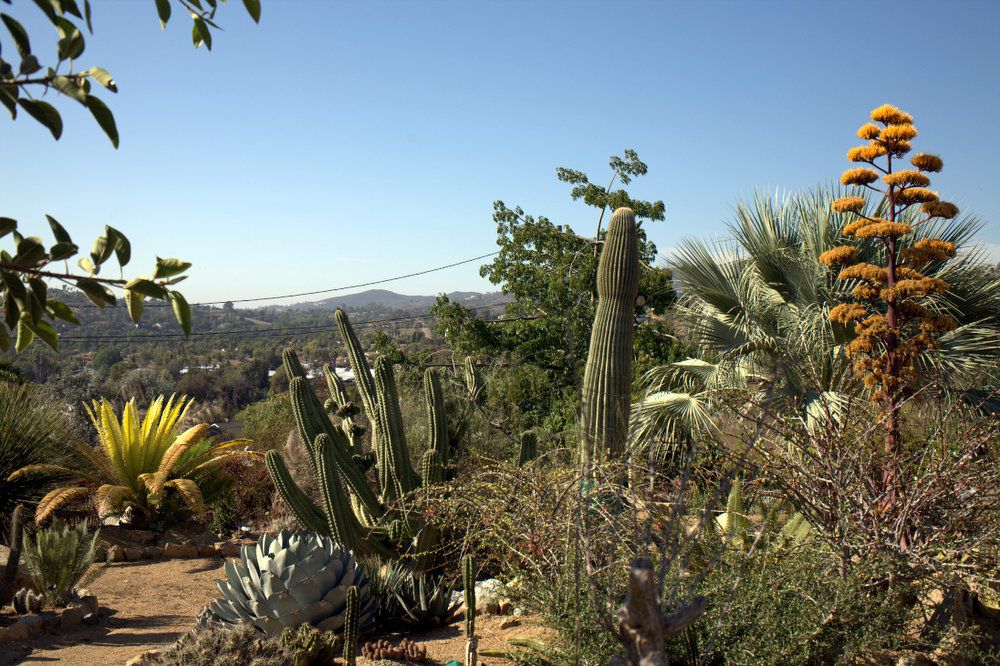So what’s shakin’ this muggy end of August? As little as possible, you say? There’s been all manner of weird stuff going on, including a recurring problem with street-parked neighborhood cars getting their gas siphoned. This on the heels of the rash of catalytic converter thefts a couple months ago. And then there’s that wobble and/or meltdown in the stock market that’s got Marty cursing like the sailor he is. Lots of plant losses, of course. I could go on, but instead I’ll just paraphrase Annie Hall, that summer is full of misery and unhappiness, and it’s all over much too quickly.
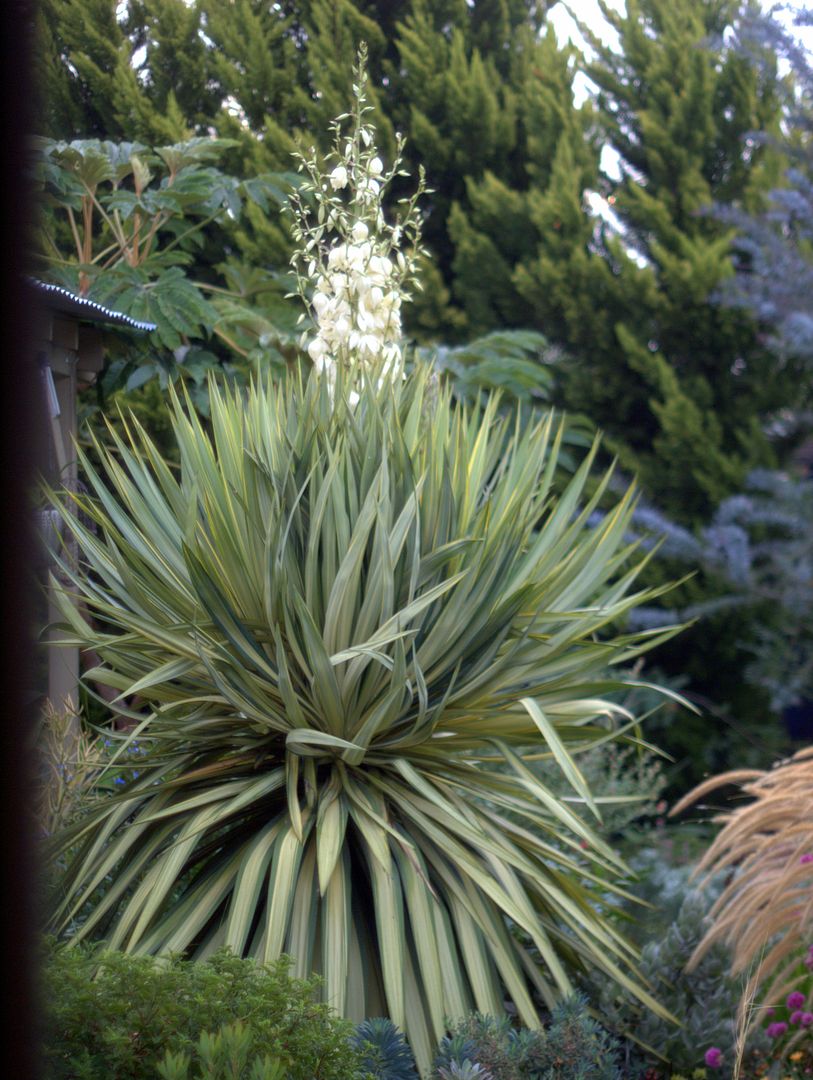
For vigor so unstoppable all summer it borders on downright rudeness, you can’t beat a yucca.
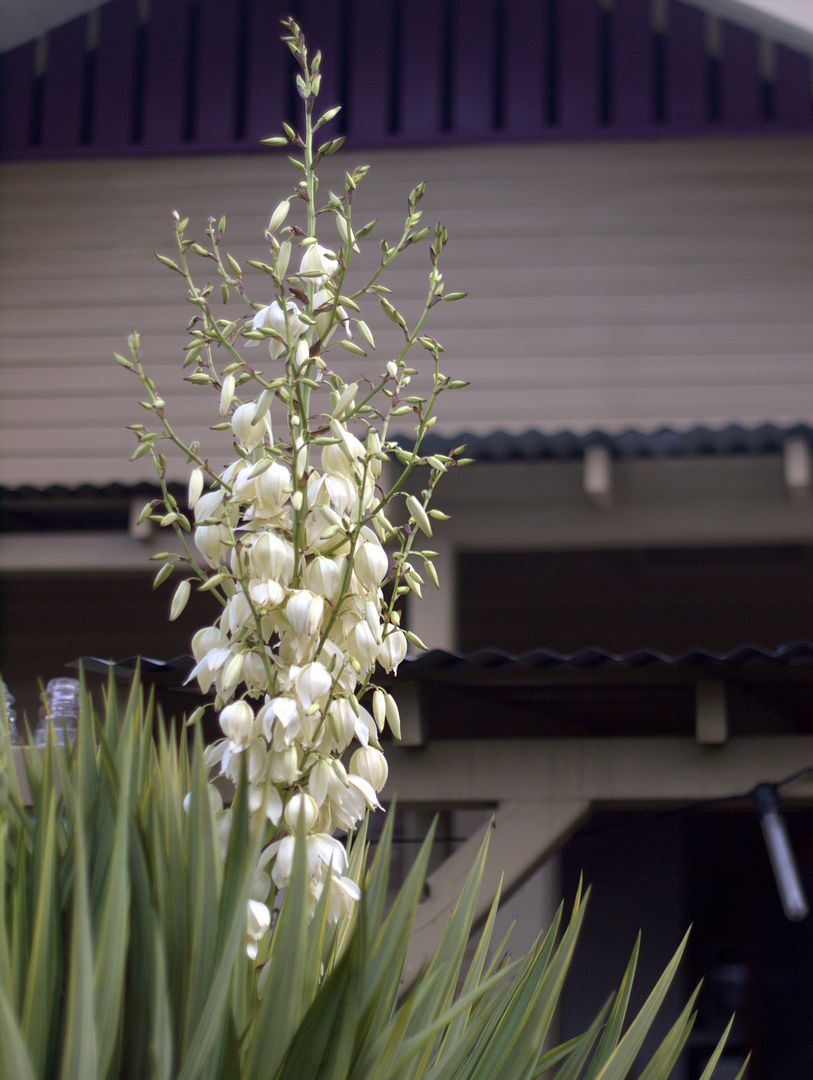
Yucca ‘Margaritaville’ has two bloom spikes, just this one showing for now, but there’s another spear gaining size.
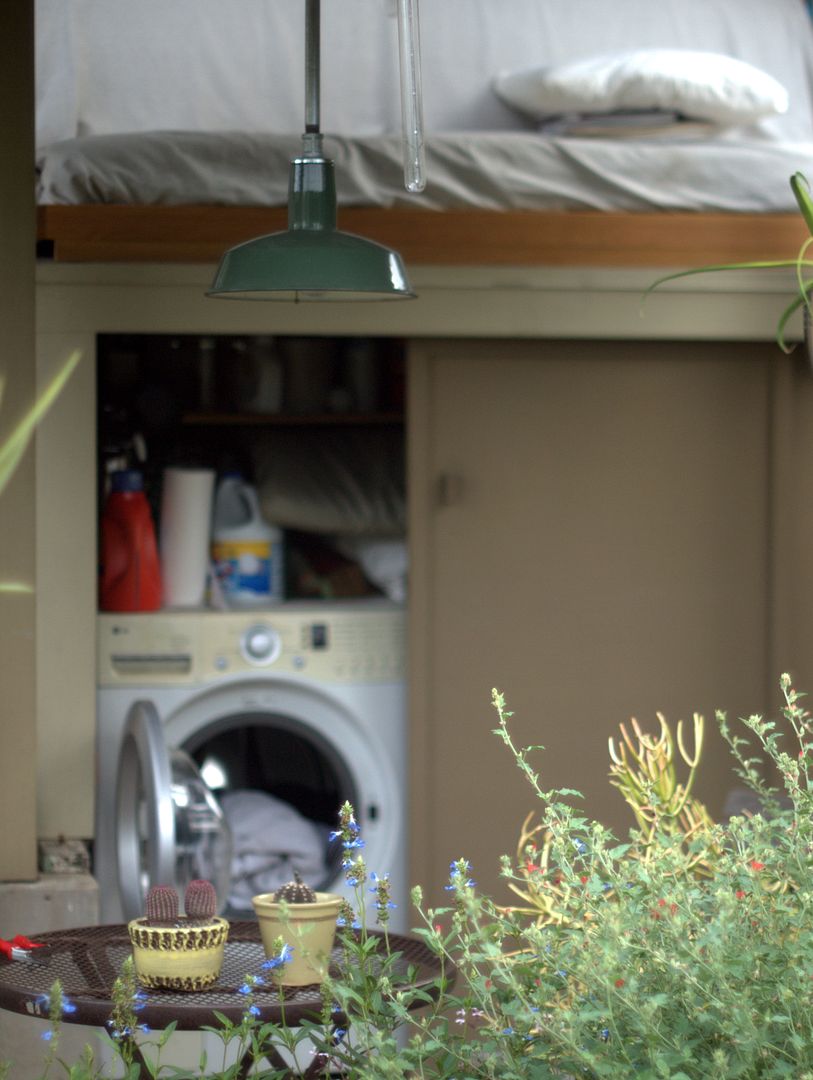
Proof that it’s not just a pleasure garden, but a working garden. With some reading and occasional napping too on muggy days…
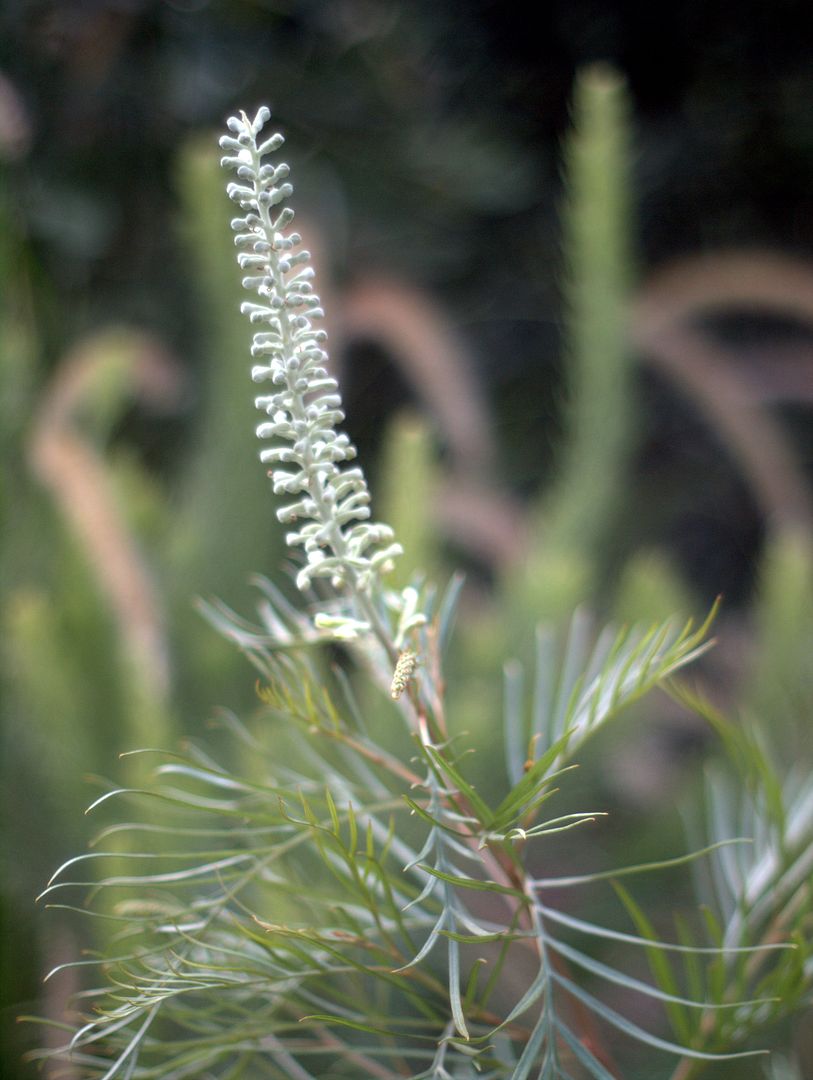
Knock wood, Grevillea ‘Moonlight’ seems to have survived its first summer. I am basically a gadget-free gardener, but this summer has sparked an interest in researching soil moisture sensors like they use in viticulture. There’s a lot of root competition from neighboring gardens, trees, hedges, and just when I think things are well-watered for a couple weeks, there’s signs of stress. Unlike all the stuff I’m asked to review that I’m either (a) uninterested in or (b) unqualified to comment upon, a moisture gauge would get my thoughtful appraisal.
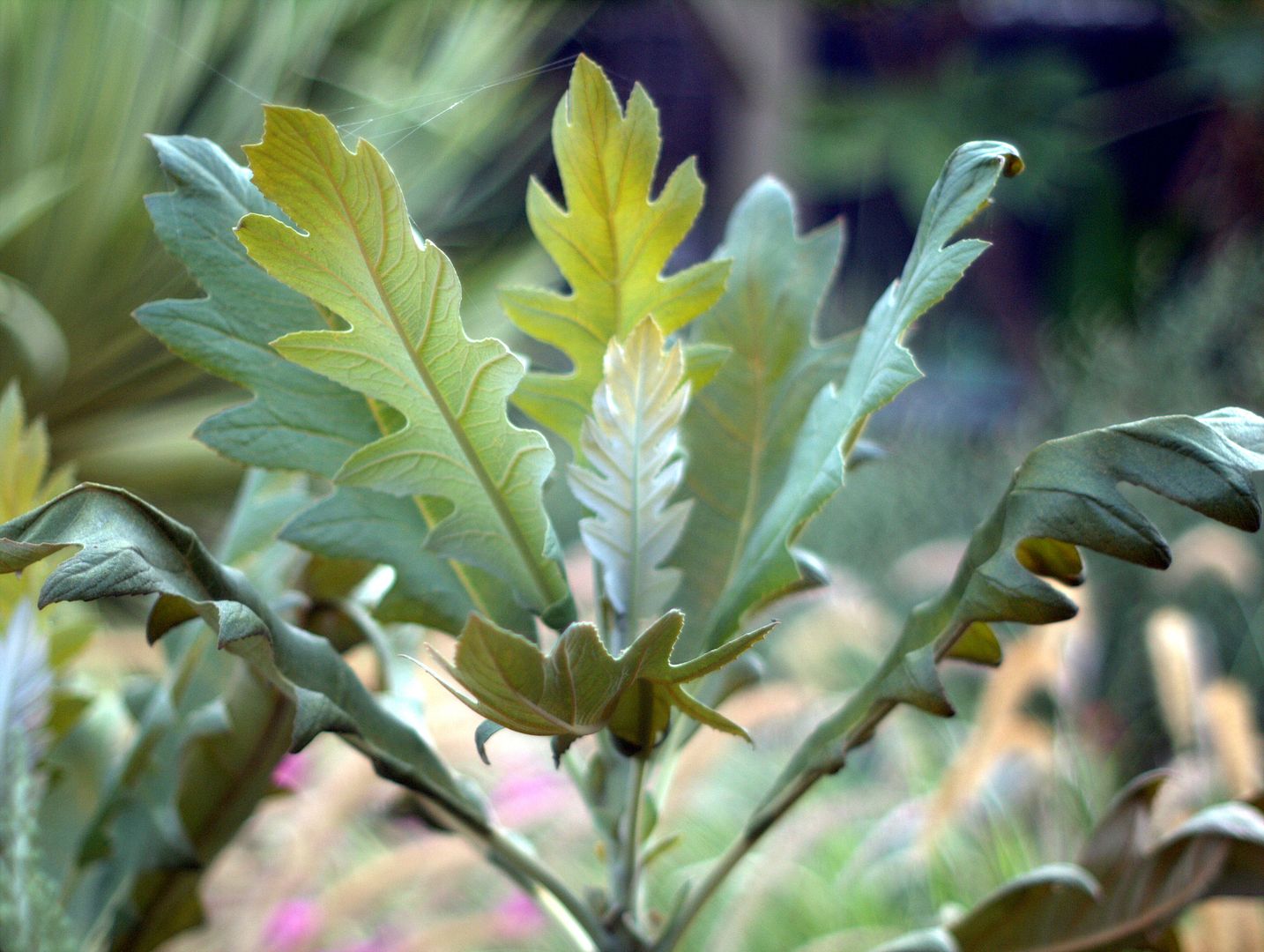
This bocconia in particular has been a problem child in that regard. Supposedly drought tolerant when established, it’s a few years old now and still shouldn’t be getting the vapors if it misses a drink now and then.
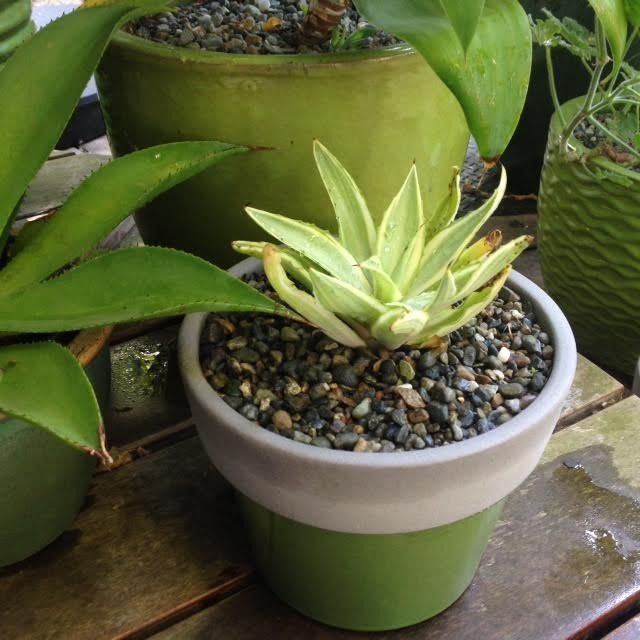
Well, here’s something cheerful. Max Parker kindly sent this photo to verify my Agave desmettiana ‘Joe Hoak’ had arrived safely at his new home. The trade was this agave for a couple passifloras, ‘Sunburst’ and ‘Flying V.’ What a deal! Both of these passifloras are smaller vines, not house-eaters. I’ve tentatively placed the potted ‘Sunburst’ at the base of one of the lemon cypresses, which will provide a good amount of sun but hopefully not too strong. The theory is the vine will seek out the shade/sun exposure it prefers as it threads through the cypress. There’s nothing to photograph yet. Maybe in a couple weeks.
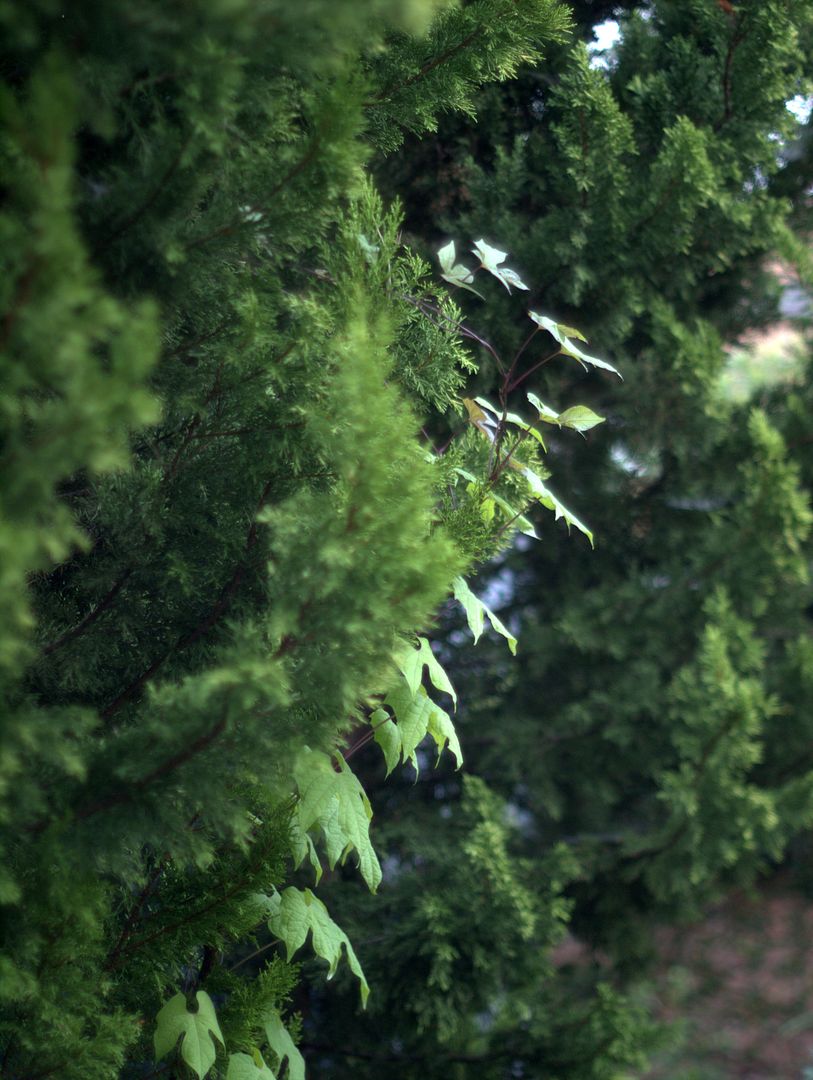
I got the idea to use the cypresses because it seems to be working for Mina lobata, self-sown from last year. No blooms yet but, unlike last summer, the leaves stay in good shape all day. I’m trying to find that sweet spot, where there’s enough sun for blooming but not too much that the vines are wilted by the end of the day.
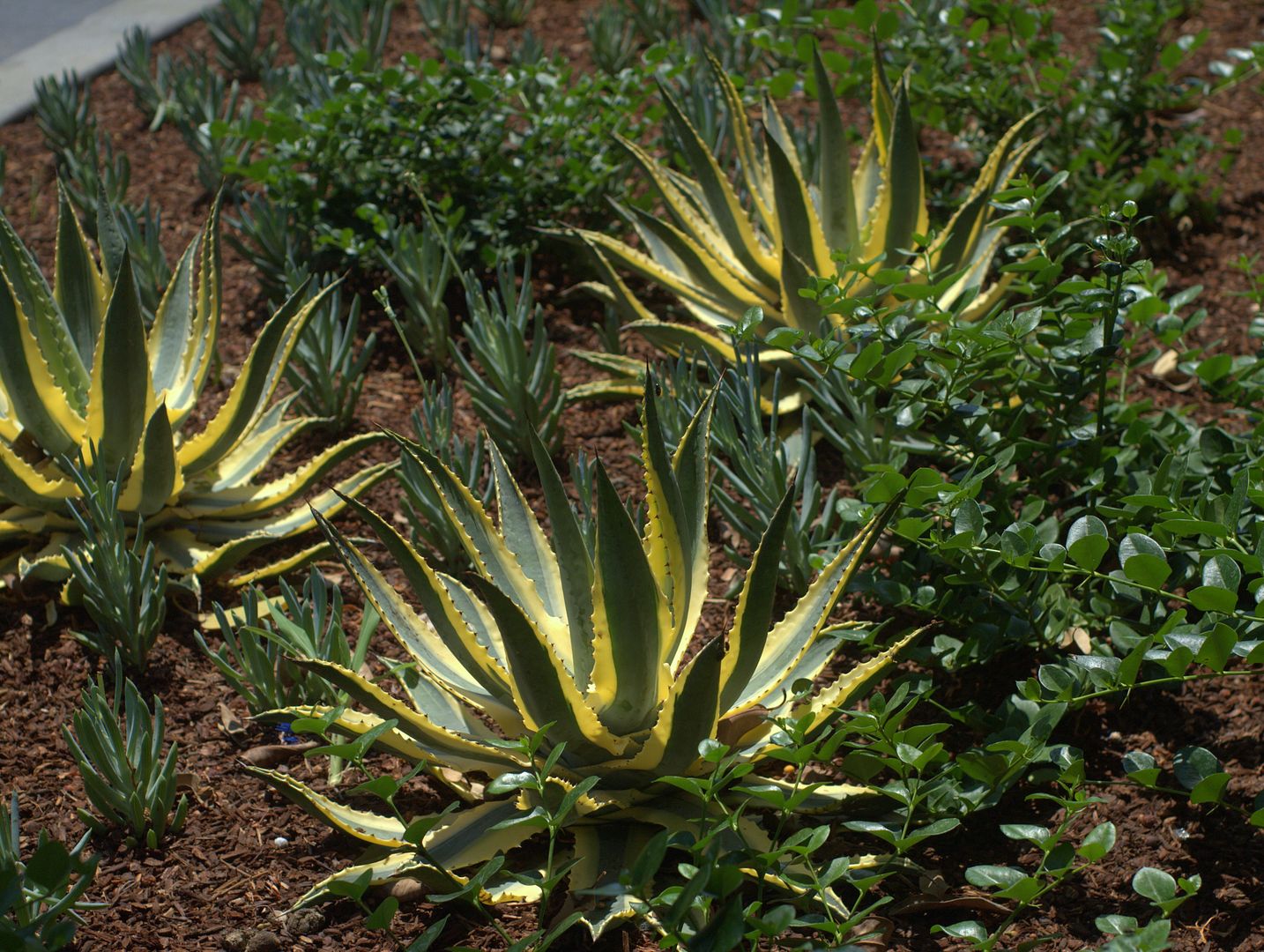
I’ll close with this nice planting of Agave ‘Cornelius’ I spotted recently in Downtown Los Angeles. Gotta go put some clothes in the dryer.

